





IAI is committed to strengthening and expanding this successful cooperation, fully embracing the vision of Atmanirbhar Bharat. This commitment is reflected in the establishment of IAI India, ASI, HELA, BIA, and the launch of our new innovation program, NEUSPHERE. These initiatives align with India’s focus on self-reliance while leveraging opportunities in innovative technological advancements, advanced manufacturing, technical support, and export potential made possible through this extensive collaboration. Discover More
www.iai.co.il • iai-in@iaiworld.co.il













C-390 MILLENNIUM
























We’re delighted to announce the Portuguese Air Force now joins the Brazilian Air Force as a C-390 Millennium operator. The first Portuguese aircraft of the newly formed 506 Squadron is now in service at Beja Air Base, with four more aircraft to be added in the near future. A growing number of countries are choosing the C-390 Millennium (including Hungary, Netherlands, Austria, Czech Republic and South Korea) attracted by its unbeatable combination of technology, speed, performance and multi-mission capabilities. Hungary will take delivery of their first C-390 Millennium in 2024 – another milestone for an incredible aircraft that has already achieved 10,000 flight hours with the Brazilian Air Force.


#C390UnbeatableCombination embraerds.com










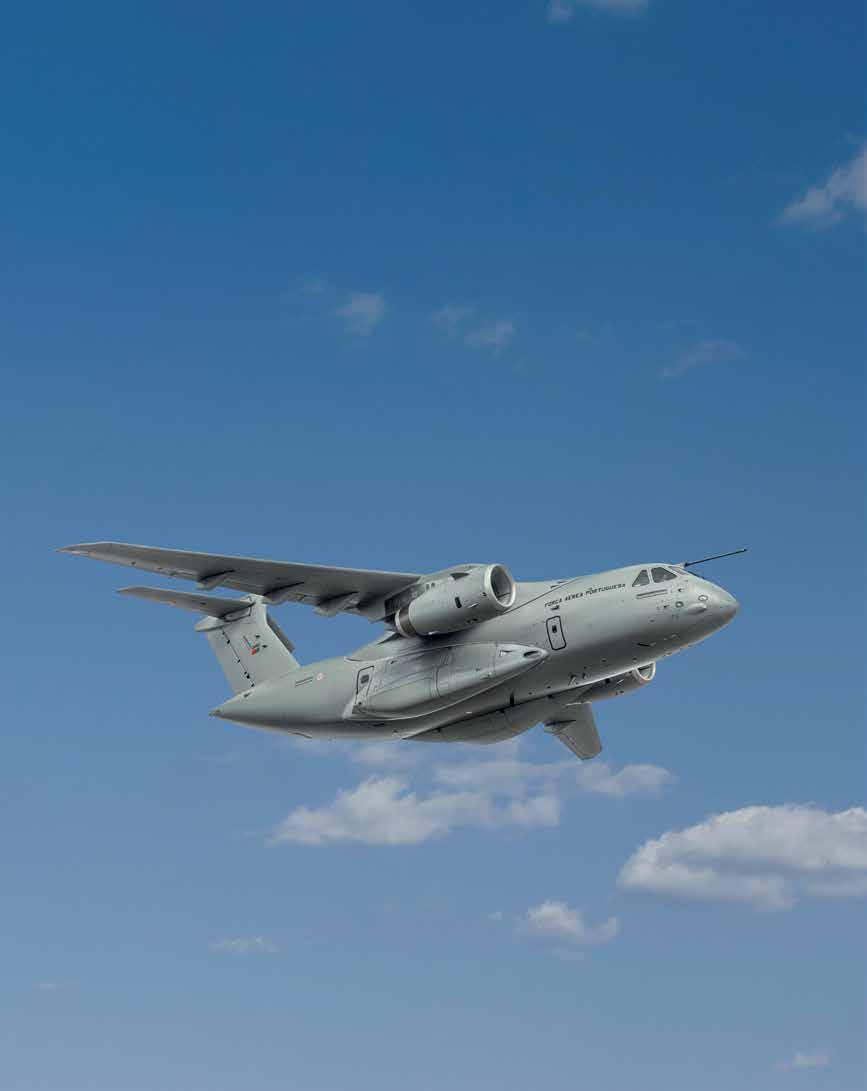
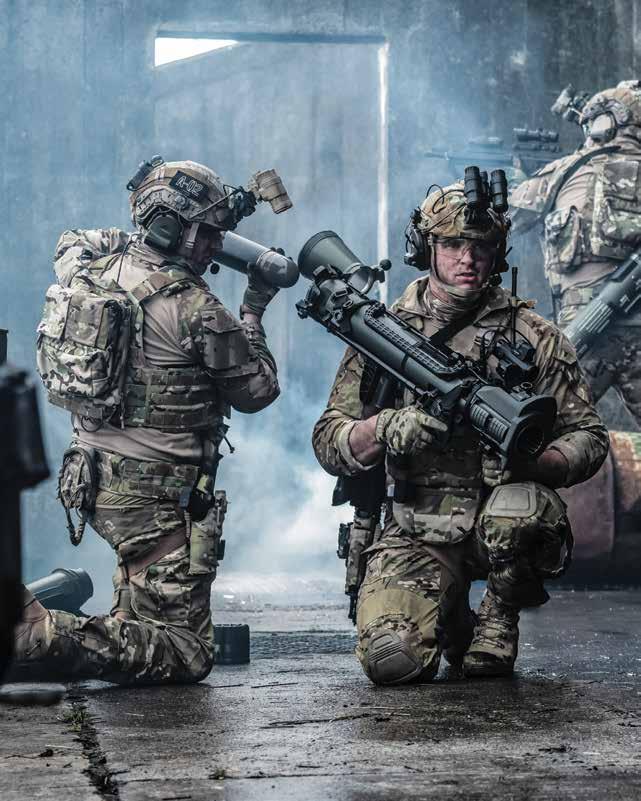
49TH
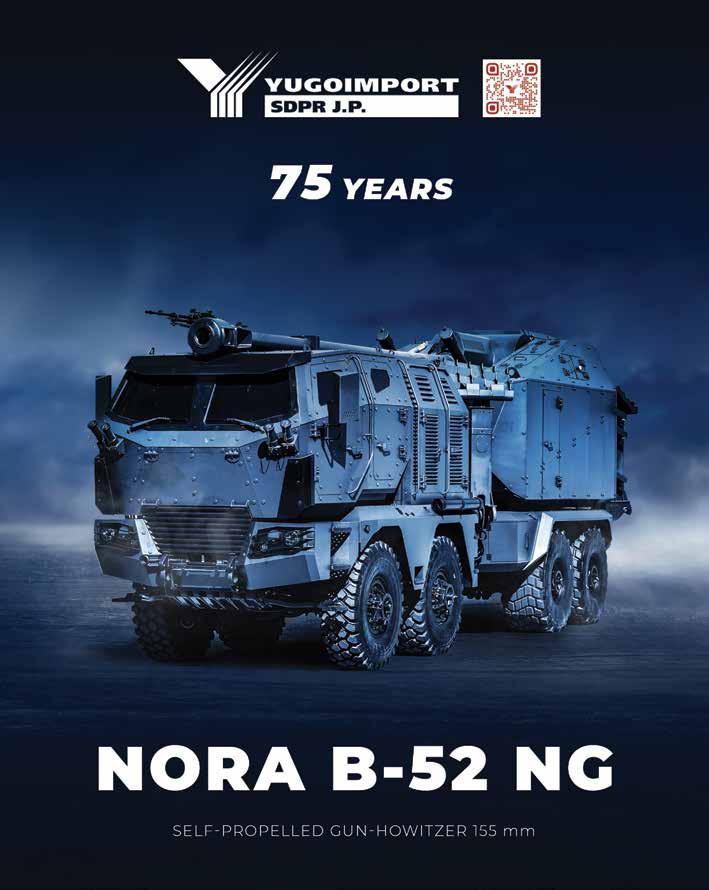
EDITOR-IN-CHIEF
Copyright © 2024 SP GUIDE PUBLICATIONS
All rights reserved. The information published herein is for the personal use of the reader and may not be used for any other activity. No part of this book may be reproduced, stored in a retrieval system or transmitted in any form by any means – digital, electronic, mechanical, photocopy, recording or otherwise –without the prior written approval of the Editor-in-Chief.
For copyright permissions, please contact:
The Editor-in-Chief
SP’s Military Yearbook
A-133, Arjun Nagar, Opposite Defence Colony New Delhi 110003, India.
E-mail:
editor@spsmilitaryyearbook.com
The publisher shall not be liable in the event of incidental or consequential damages in connection with, or arising out of, the furnishing or use of the information, associated instructions/claims of productivity gains.
Founded by SHRI SUKHDEO PRASAD BARANWAL in 1965
Published by JAYANT BARANWAL SP GUIDE PUBLICATIONS
New Delhi, India
Designed by SP Guide Publications Team
ISSN 0076-8782
ISBN 978-81-954469-5-7
Registered with RNI No. (P.) : F.2 (S/11) Press / 93
Printed in India at Kala Jyothi Process Pvt Ltd, Hyderabad
Corporate Office: SP GUIDE PUBLICATIONS PVT LTD
A-133, Arjun Nagar Opposite Defence Colony New Delhi 110003, India. Tel: +91 (11) 40042498, 40793308
E-mail: info@spguidepublications.com
Order: order@spsmilitaryyearbook.com
Websites: www.spguidepublications.com, www.spsmilitaryyearbook.com






















Commodore Anil Jai Singh (Retd)

He spent over three decades in the Indian Navy as a Submariner and is an Anti-Submarine warfare Specialist. He has held five command tenures on frontline platforms including four submarine commands. He was the Naval Adviser at the Indian High Commission, London and after retiring was Senior Vice President of a leading European MNC in India. Currently he is Vice President, Indian Maritime Foundation. He is also former Co-Chairman, National Defence and Aerospace Committee, Associated Chambers of Commerce (ASSOCHAM) and a former member, Defence Audit Advisory Board. n
ARTICLE ON PAGE 21

Ambassador Anil Trigunayat is a former Indian Ambassador to Jordan, Libya and Malta and presently is the Distinguished Fellow at the Vivekananda International Foundation and associated with several Think tanks apart from commenting on foreign policy and international relations especially in West Asia, Africa and Russia. n
Vice Admiral A.K. Chawla (Retd)

The Author was the Flag Officer Commanding-inChief, Southern Naval Command from July 2018 till he retired on November 30, 2021. He is a Navigation and Direction specialist. He was also the Director General, Naval Operations and the Chief of Personnel. He commanded the Western Fleet from August 2013 to October 2014 and oversaw the integration of Vikramaditya into the IN’s concept of operations. On promotion to the rank of Vice Admiral he took over as the Director General Naval Operations on December 31, 2014. He was the Chief of Personnel of the Indian Navy from May 2016 to July 2018. n
ARTICLE ON PAGE 31, 35, 153

Air Marshal Anil Khosla retired as the Vice Chief of the Air Staff in April 2019. Born on April 9, 1959, Air Marshal an alumni of the National Defence Academy, was commissioned in Indian Air Force in December 1979. A fighter pilot, he has over 4000 hours of accident free flying. The Air Officer has been Directing Staff at prestigious institutions like Tactics and Combat Development Establishment (TACDE) and Flying Instructor School (FIS). As an Air Marshal he has held appointment of Senior Air Staff Officer, Central Air Command, Director General Air (Operations) at Air HQ and Director General (Inspection & Safety) at Air HQ. Before his appointment as the VCAS, he was AOC-in-C, EAC. He holds two MPhil degrees in defence and strategic studies. n
ARTICLE ON PAGE 85

Major General Atanu K. Pattanaik from the Indian Army after 37 years of experience as a helicopter pilot as well as in various leadership positions in active operations. He headed the China & neighbourhood desk at the Defence Intelligence Agency, was the Chief Humanitarian Officer of UN Mission in Lebanon 2001-02 and also served as Chief of Staff of a Corps in the North East from 2016-18. His Ph.D. research was on combat stress in conflict missions drawn from various international and domestic operations and counter insurgency missions. He is a regular on the lecture circuit related to security/ geo-strategy/military technology and has numerous op-ed columns and articles published in reputed newspapers and professional journals. n
ARTICLE ON PAGE 19, 161

Major General B.K. Sharma was commissioned in the SIKHLIGHT Infantry Regiment in 1976 and superannuated in 2012. He is the Director General of United Service Institution of India (USI), India’s oldest think tank established by the British in 1870. He has tenanted prestigious assignments in India, including command of a mountain division on China border, Senior Faculty Member at the National Defence College and Head of Net Assessment Directorate, HQ IDS. He has represented his country at the UN as Military Observer in Central America and has been India’s Defence Attaché in Central Asia. He has edited several books and contributed more than 100 seminal papers in Indian and foreign publications. n
ARTICLE ON PAGE 7




























































































Vice Admiral Biswajit Dasgupta was the Commanderin-Chief of the Indian Navy’s Eastern Naval Command from December 1, 2021 to July 31, 2023. He has 38 years’ experience in the Indian Navy, more than 15 years in senior/apex leadership positions. His current activities include writing and speaking on regional geopolitics, national and maritime security issues. He writes for newspapers, magazines and online platforms on matters of contemporary relevance. He is a visiting speaker at institutes of eminence and a subject matter expert on national security, maritime, military and leadership subjects. n
ARTICLE ON PAGE 27

Lt General Dushyant Singh has served in varied terrains and theatre of operations, in India and in the UN as Military Observer. The General Officer has commanded an Infantry Battalion, Brigade and a Division in Jammu and Kashmir. He also holds the distinction of having served twice in the NSG, as the Deputy Inspector General (Operations) and the Inspector General (Operations). The General Officer has also held the appointment of Brigadier General Staff of a Corps in the East and Chief of Staff, Eastern Command. The General Officer commanded a Corps and thereafter headed the Army War College. He is a prolific reader, writer and a keen sportsman. He writes regularly in leading dailies and military journals and has his own website. n
ARTICLE ON PAGE 57

Admiral Karambir Singh was India’s 24th Chief of the Naval Staff (May 2019 to November 2021). The Admiral was commissioned into the Indian Navy in July of 1980. A Naval aviator, he earned his wings in 1981 as a helicopter pilot. As the Deputy Chief of Naval Staff, he discharged his responsibilities towards the Indian Navy’s current and future operational and combat capacity and capabilities. He then served as the Vice Chief of Naval Staff, involved with the development of the “future Navy”. He has a rich store of senior command experience and has been the Flag Officer Commanding-inChief, Eastern Naval Command. He assumed the Chairmanship of the National Maritime Foundation, New Delhi, on January 17, 2022. n
ARTICLE ON PAGE 39

Manish Kumar Jha is a Consulting & Contributing Editor for SP’s Aviation, SP’s Land Forces and SP’s Naval Forces and a Security Expert. He writes on National Security, Military Technology, Strategic Affairs & Policies. n
ARTICLE ON PAGE 73, 75, 125, 127, 139

Air Vice Marshal Manmohan Bahadur is an Experimental Test Pilot from France, a graduate of the Air Command and Staff College, USA and a post graduate from Madras University. He has commanded a helicopter unit at Leh and two flying bases, led the first IAF UN Mission in Sudan and was Head of Training (Air) at DSSC, Wellington. As Asst Chief of Air Staff, the Air Marshal was head of Transport and Helicopter Operations. He retired as Assistant Chief of Integrated Defence Staff where he planned the force structure of the Services. On retirement, Air Vice Marshal Bahadur joined the Centre for Air Power Studies where he was the Additional Director General. n
ARTICLE ON PAGE 91

Dr Md. Muddassir Quamar is Associate Fellow at Manohar Parrikar Institute for Defence Studies and Analyses, New Delhi. He holds a Ph.D. in Middle East studies from Jawaharlal Nehru University. He has wider interest in Middle East strategic affairs and India’s relations with the region. He has authored several books and research articles and is a frequent contributor in the media on contemporary developments in the Middle East. n
ARTICLE ON PAGE 49

Lt General P.R. Shankar retired as the Director General of the Artillery in the Indian Army. He is presently a Professor in the Aerospace Dept of IIT Madras. He is a Distinguished Fellow of CLAWS and a member of Chennai Centre of China Studies. He has also been a Director of the L&T Def I/c Board when it existed. He has his own YouTube Channel - Gunners Shot. He takes keen interest in Defence, Technology, National, Strategic and China affairs. He is also involved in applied research on cutting edge technologies. n
ARTICLE ON PAGE 1

Lt General P.M. Bali, was commissioned into 19 PUNJAB in June 1981 and later commanded 24 PUNJAB, while deployed in intense counter insurgency operations. He has commanded an Infantry Brigade in the desert sector and a Mountain Division in the North East. He was the GOC of 33 Corps in Sikkim during the Doklam crisis on the LAC with China. He has also held various important staff and diplomatic appointments in India and abroad including Staff Officer Logistic Operations in UN Mission in Somalia and Defence Attaché at the Embassies of India in Japan and in South Korea. He has also been the Secretary to the Chiefs of Staff Committee, BGS (China) and MGGS (Doctrine) at HQ ARTRAC and Director General Perspective Planning, at Army Head Quarters. Post-retirement, he writes on strategic issues for various newspapers and magazines. n
ARTICLE ON PAGE 71
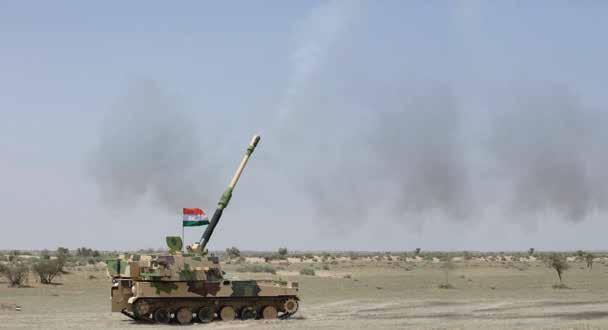

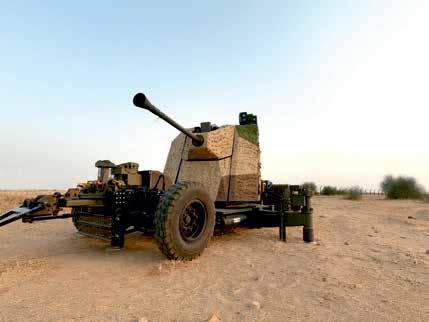
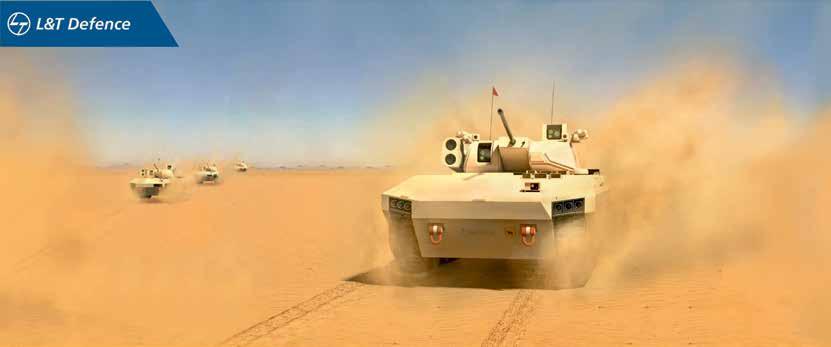
For over 4 decades, India’s foremost technology-led engineering solutions and services company, L&T has helped DRDO and the Armed Forces champion the security of the Nation.

pes@larsentoubro.com
Backed by a countrywide network of manufacturing, R&D, and excellence centres - L&T Precision Engineering & Systems’ cutting-edge, proven solutions help India’s defence forces with the decisive edge on land, sea, and in the air.
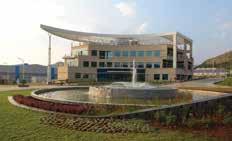


Dr Prasanta Kumar Pradhan is a Research Fellow and Coordinator of the West Asia Centre at the Manohar Parrikar Institute for Defence Studies and Analyses (MP-IDSA), New Delhi. He holds a Doctorate degree from the School of International Studies, Jawaharlal Nehru University, New Delhi. He has been researching on foreign policy, security and strategic issues in West Asia, and India’s relationship with West Asia and the wider Arab world. He is also working on the implications of Arab uprisings for the region and India. Dr Pradhan has published several research articles in reputed journals and has contributed chapters to several edited volumes on security and strategic issues in West Asia and India’s bilateral relations with the region. n
ARTICLE ON PAGE 53

Air Marshal Ravi Gopal Krishna Kapoor was commissioned into the Fighter stream of Indian Air Force on June 7, 1986. The Air Marshal is a Cat ‘A’ Qualified Flying Instructor. He has flown over 5000 hours across the entire spectrum of fighter and trainer aircraft of the Indian Air Force.
During his career spanning more than 38 years, he has held many field and staff appointments at Operational Commands, Training Establishments and Air Headquarters. He has the rare distinction of being the Air Defence Commander, Senior Air Staff Officer and Air Officer Commanding in Chief of the same command. He was also the Deputy Commander in Chief of the tri services Strategic Forces Command prior to taking over as Air Officer Commanding in Chief of Central Air Command from where he superannuated on August 31, 2024. n
ARTICLE ON PAGE 61, 215

Rear Admiral R.J. Nadkarni was commissioned on July 1, 1983 and served for 37 years in the Indian Navy. A Navigation and Direction specialist, he had the privilege of commanding four ships and also held several other important Command, Training and Staff appointments during his career. Post retirement, he settled down in Pune, where he is a member of the Indian Maritime Foundation and the Centre for Advanced Strategic Studies. He holds a M. Phil. in Defence and Strategic Studies. n
ARTICLE ON PAGE 185

Air Marshal (Dr) Rajeev Sachdeva was Assistant Chief of Integrated Defence Staff (Information and Communications Technology) at Headquarters Integrated Defence Staff (HQ IDS) and was a member in attendance at the Empowered Group of Ministers Meeting of March 2012, where the Network for Spectrum (NFS) Project was finally cleared by the group of Ministers. Later he was Deputy Chief of Integrated Defence Staff (Operations) at HQ IDS, when the projects, NFS and DCN were being operationalised for the Armed Forces. n
ARTICLE ON PAGE 149

Air Marshal Rajesh Kumar retired from the Indian Air Force after 39 years of service. During his service he has held important assignments and has commanded both an operational IAF command as well as a Tri-service command. He has considerable experience in defence production having been the Director of the Air Force Project Monitoring Team working on the Light Combat Aircraft Project as well as the Team Leader Air Force Project Management Team for Airborne Warning and Control System (AWACS) at Israel. He has been involved with the Strategic Forces while in service and has published articles in journals at the Centre for Air Power Studies with an emphasis on nuclear policy. n
ARTICLE ON PAGE 95

A media and publishing veteran, he has led Aviation, Aerospace and Defence publishing in different capacities, in the region, for over 25 years. A keen follower of geopolitical developments and security landscape around the region, especially in Asia and the Middle East, he has an extensive understanding of the political, economic, social and internal security matters that shape the military and strategic environment of the region. Based out of South East Asia earlier, for nearly 15 years, he has firsthand experience of internal security matters in the region and has regularly written on aviation, security and strategic affairs in various leading publications. n
ARTICLE ON PAGE 99, 115, 135, 277, 305, 425


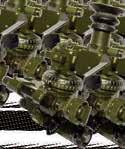



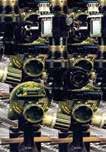

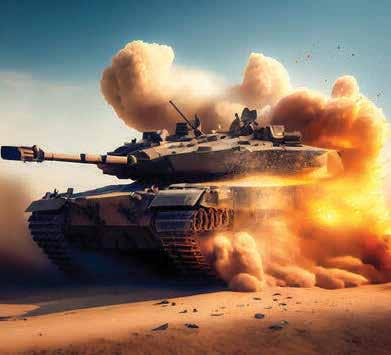







He was commissioned into the IAF in the fighter stream and after 37 years of service, superannuated on August 31, 2020. As Air Vice Marshal, he have served as Air Defence Commander EAC; ACAS Ops (Off) at Air HQ; and ACIDS (Tech Int) at IDS under the CDS where he was closely associated with ISRO and its agencies for resolving various ISR issues. As Air Cmde and later as Air Vice Marshal at Air HQ, he controlled all offensive air assets of the IAF, including operationalisation, deployment, mobility, training & exercises. He was also Chairman of weapon contracts negotiating team and also provided guidance for indigenous weapon development by DRDO labs in coordination with private agencies. n
ARTICLE ON PAGE 13, 145

Air Marshal Sukhchain Singh was commissioned in the Aeronautical Engineering (Electronics) branch of the Indian Air Force in July 1979. He was the Air Officer-in-charge Maintenance (AOM) at Air HQ, New Delhi before his retirement on October 2015.
The Air Marshal has rich and varied experience in the maintenance management of fighter aircraft, radars and guided weapons. During his distinguished career spanning 37 years, he has held several important field and staff assignments in India & abroad. He has been the Senior Maintenance Staff Officer of South Western Air Command and Maintenance Command of IAF before assuming the appointment of Air Officer-in-Charge Maintenance at Air Headquarters in November 2014. He is an alumnus of REC, Kurukshetra as Gold Medallist in BE (Hons), an M Tech from IIT Delhi and a MBA from IGNOU. n
ARTICLE ON PAGE 65

He is the Chief Executive of General Atomics Global Corporation, San Diego, California and a Distinguished Visiting Fellow, Hoover Institution, Stanford University. In October 2020 he was elected to Board of Directors of US Japan Business Council and US India Business Council. Prior to this he was Vice President of Strategy and Business Development at Lockheed Martin in Fort Worth. Prior to that he was Chief Executive Strategic Development for General Atomics appointed in August 2014. Prior to this, Dr Lall was President and CEO at Reliance Industries. Earlier to that, Vivek was appointed Vice President and Country Head, Boeing Defense Space & Security in May 2007.
Vivek earned a Bachelor of Mechanical Engineering degree from Carleton University in Canada and a Masters of Aeronautical Engineering degree in Florida. He also has his Ph.D. in Aerospace Engineering in Kansas and his MBA in Washington. n
ARTICLE ON PAGE 81

An alumnus of the Naval War College, he holds advanced degrees in Naval Architecture, Shipbuilding, and Marine Hydrodynamics from Cochin University, IIT Delhi, and IIT Madras. His naval career spans leadership roles in warship design, indigenisation initiatives, and logistics operations, contributing to critical projects like guided missile destroyers and floating dock construction. Hemanth’s expertise extends to policy formulation, ERP integration, and strategic vendor development, demonstrating exceptional technical and managerial acumen. Hemanth is pursuing a PhD at IIT Madras, focusing on Ocean Engineering, and has authored numerous scientific papers in reputed journals and international conferences. n
ARTICLE ON PAGE 39


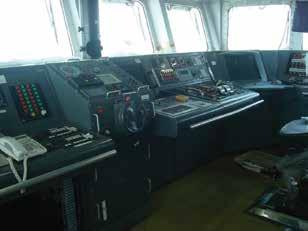
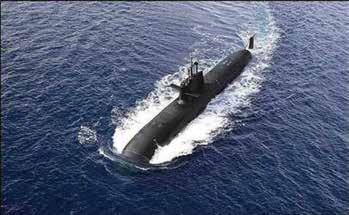
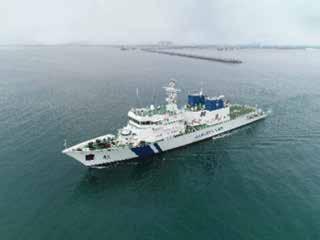
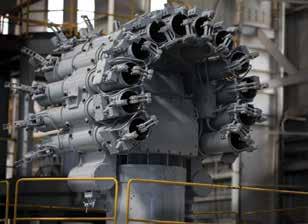

1. New Delhi (HQ Integrated Defence Staff)
2. New Delhi (Integrated HQ of MoD (Army)
3. New Delhi (Integrated HQ of MoD (Navy)
4. New Delhi (Integrated HQ of MoD (IAF)
5. New Delhi (HQ Strategic Forces Command)
6. Udhampur (HQ Northern Command), Army
7. Chandimandir (HQ Western Command), Army
8. Kolkata (HQ Eastern Command), Army
9. Jaipur (HQ South-Western Command), Army
10. Pune (HQ Southern Command), Army
11. Lucknow (HQ Central Command), Army
12. Shimla (HQ Training Command), Army
13. Vishakhapatnam (HQ Eastern Naval Command), Navy
14. Mumbai (HQ Western Naval Command), Navy
15. Kochi (HQ Southern Naval Command), Navy
16. New Delhi (HQ Western Air Command), IAF
17. Shillong (HQ Eastern Air Command), IAF
18. Allahabad (HQ Central Air Command), IAF
19. Gandhinagar (HQ South-Western Air Command), IAF
20. Thiruvananthapuram (HQ Southern Air Command), IAF
21. Bengaluru (HQ Training Command), IAF
22. Nagpur (HQ Maintenance Command), IAF
23. Port Blair (HQ Andaman & Nicobar Command)
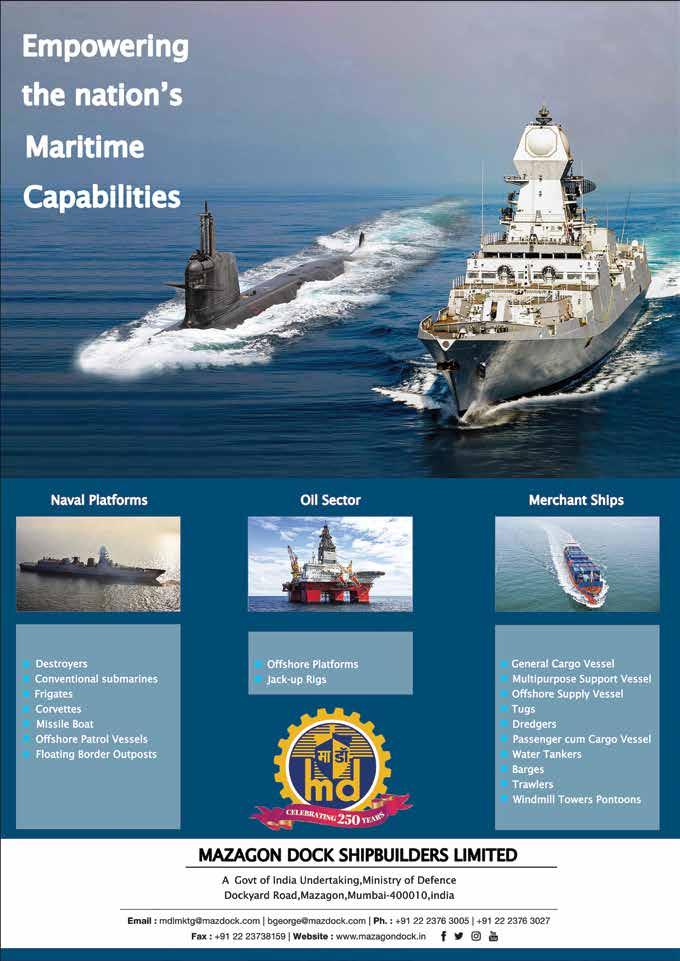
1. Defence Research and Development Organisation (DRDO), New Delhi
2. Hindustan Aeronautics Ltd, Bengaluru
3. Bharat Electronics Ltd, Bengaluru
4. Bharat Earth Movers Ltd, Bengaluru
5. Mazagon Dock Ltd, Mumbai
6. Garden Reach Shipbuilders & Engineers Ltd, Kolkata
7. Goa Shipyard Ltd, Goa
8. Hindustan Shipyard Ltd, Visakhapatnam
9. Bharat Dynamics Ltd, Hyderabad
10. Mishra Dhatu Nigam Ltd, Hyderabad
11. Aeronautical Development Agency, Bengaluru
12. Indian Space Research Organisation, Bengaluru
13. Aeronautical Development Establishment, Bengaluru
14. Centre for Airborne Systems, Bengaluru
15. Combat Vehicles Research & Development Establishment, Chennai
16. Defence Electronics Research Lab., Hyderabad
17. Defence Research and Development Est., Gwalior
18. Defence Research and Development Lab., Hyderabad
19. Naval Science & Technological Laboratory, Visakhapatnam
20. Integrated Test Range, Balasore, Odisha
21. Cochin Shipyard Ltd, Kochi, Kerala
22. Munitions India Ltd, Khadki, Pune
23. Armoured Vehicles Nigam Ltd, Avadi, Chennai
24. Advanced Weapons and Equipment India Ltd, Kanpur
25. Troop Comforts Ltd, Kanpur
26. Yantra India Ltd, Nagpur
27. India Optel Ltd, Dehradun
28. Gliders India Ltd, Kanpur







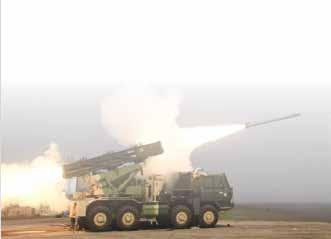



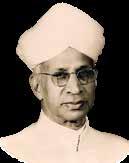
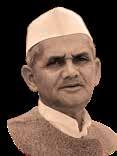
It (Military Yearbook) is a valuable book.
Dr Sarvepalli Radhakrishnan, Second President of India
The Guide Publications of New Delhi have brought out the Military Yearbook. It is useful to have suitably compiled information in one volume. I commend the efforts of the Publishers.
Shri Lal Bahadur Shastri, Second Prime Minister of India

Powered by artificial intelligence and relentless innovation, we develop advanced technologies that will enable a secure future – everywhere from day-to-day mission support to ground-breaking platforms and systems.
At EDGE, we are inspired by the potential of tomorrow. You’ll find us at the cutting edge of technology and the leading edge of tomorrow.
To us, impossible is just the beginning.
edgegroup.ae
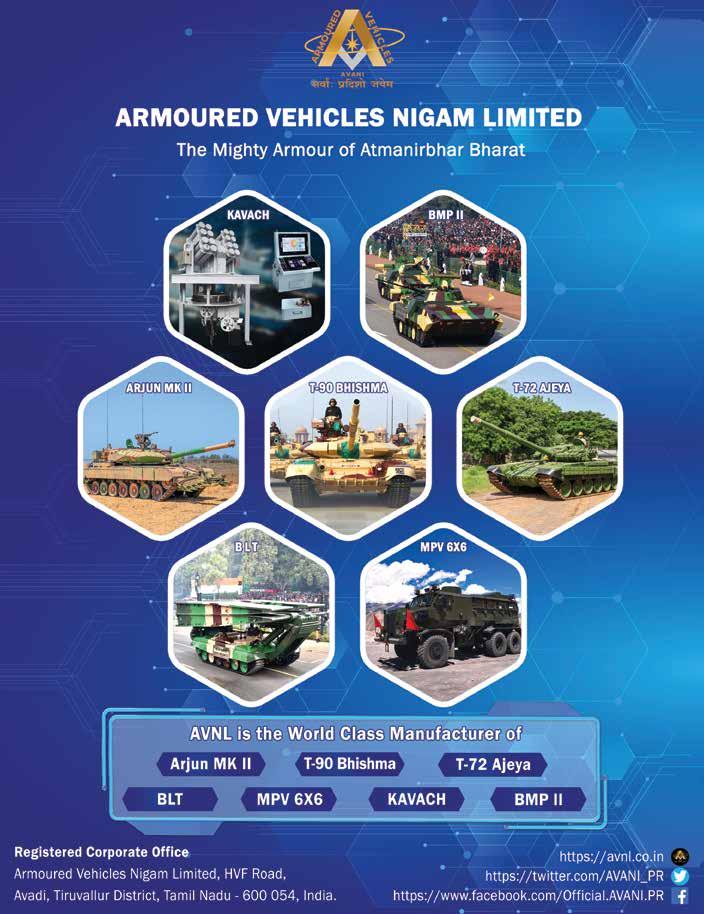
Thank you for sending me a copy of your flagship “SP’s Military Yearbook 21-2022”. It is an excellent and a well-researched magazine which is awaited by one & all for our libraries. It serves as a very useful reference document that provides insight into latest developments/trends.
We wish you the very best in your future endeavours.
Lt General S.S. Mahal General Officer Commanding-in-Chief Headquarters Army Training Command C/O 56 APO6
May 29, 2023
The SP’s Military Yearbook 21-2022 provides a comprehensive assessment of present day, global military scenario with a focus on each Nation’s military capabilities. It also gives an exclusive overview of defence trends.
I wish you and SP Guide Publications a very best in all future endeavours.
Air Marshal A.K. Arora Director General (Aircraft)
Air Headquarters, Vayu Bhawan
New Delhi 110 106
May 3, 2023
Thank you very much for sending me new edition of SP’s Military Yearbook 21-2022.
The Yearbook has been well compiled, very informative and made an interesting reading. Please convey my compliments to the Editorial Team.
Air Vice Marshal Rajiva Ranjan Assistant Chief of the Air Staff Ops (Space) Air Headquarters, Vayu Bhawan Rafi Marg, New Delhi 110 011
May 2, 2023
Thank you very much for sending me a copy of SP’s Military Yearbook 21-2022.
The Yearbook is well designed and presented. Section on ‘Strategy and Perspective’ aptly covers contemporary issues of geopolitics relevant to India. Section on Emerging Military Technologies is particularly very interesting and informative. Please convey my compliments to your entire editorial team for their in-depth research towards compiling a very informative Military Yearbook.
Lt General J.B. Chaudhari Deputy Chief of the Army Staff (CDJS) & Colonel of Brigade of The Guards IHQ of MoD (Army)
New Delhi 110 011
May 25, 2023
I thank you for sharing the new edition of SP’s Military Yearbook 21-2022. I commend the efforts put in finalizing the Yearbook.
Dipti Mohil Chawla
Additional Secretary, Ministry of Defence Government of India
April 25, 2023
I would like to thank you for forwarding me a copy of the new edition of SP’s Military Yearbook 21-2022
I am sure that the document will be of immense use to our Directorate.
Thanks a lot. My first glance at the publication, indicated an excellent effort. Compliments to you and your team.
Lt General M.U. Nair Signal Officer-in-Chief & Senior Colonel Commandant, Corps of Signals Directorate General of Signals, General Staff Branch Integrated HQ of MoD (Army), Sena Bhawan New Delhi 110 011 April 19, 2023
I am grateful for the SP’s Military Yearbook 21-2022 sent across by you. It is a well compiled and exhaustive edition covering evolving geopolitics & military technology subjects. The content regarding current initiatives of Atmanirbhar Bharat, details of defence & homeland security set up of India as well as Asian Nations is indeed quite handy for security professionals. Formations of Southern Command will be placing orders for the latest yearbook as per their requirements.
Please convey my compliments to all those involved in the research work and compilation of documents/articles during publications of the Yearbook.
I have always admired this wonderful publication.
Lt General Ajai Kumar Singh General Officer Commanding-in-Chief President Gorkha Brigade Colonel 11 GR & Sikkim Scouts Headquarters Southern Command PIN - 908 541, C/O 56 APO June 3, 2023
The evolved SP’s Military Yearbook 21-2022 has a new look and is rich in contents.
Strategy and Perspective presents a comprehensive overview. The Asian Who’s Who is interesting. Emerging technologies is contemporary.
It certainly will be a rare possession for me.
Major General K. Narayanan Joint Secretary (Army & TA) Government of India, Ministry of Defence Department of Military Affairs South Block, New Delhi 110 011 April 26, 2023
I take this opportunity to thank you for sharing a copy of SP’s Military Yearbook 21-2022. This effort by all team members of SP Guide Publications indeed is a very useful reference book. Please convey my compliments to the entire editorial team for a well researched and compiled publication.
Lt General C. Bansi Ponnappa
Adjutant General & Colonel of Mahar Regiment
Adjutant General’s Branch
Integrated HQ of MoD (Army), New Delhi 110 011 April 23, 2023
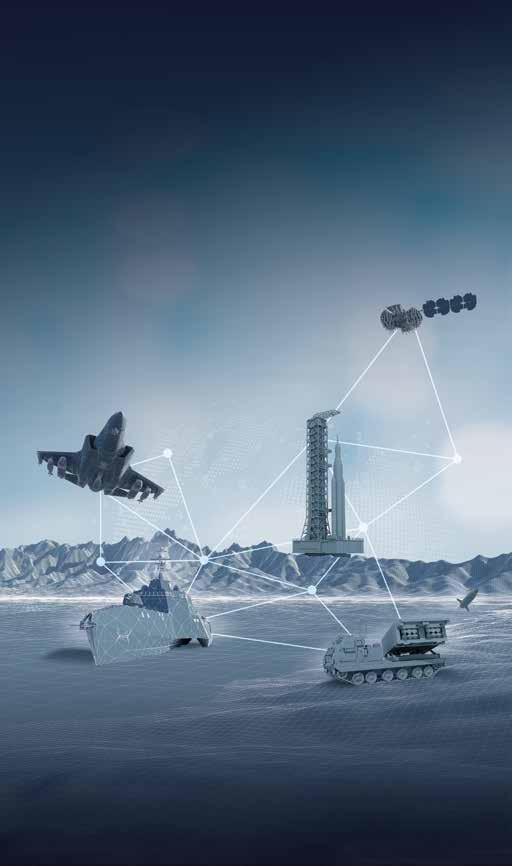
As the Trusted Disruptor, we innovate relentlessly and deliver capability with the speed, passion and determination that our customers demand in executing their most challenging missions.

As the Trusted Disruptor, we innovate relentlessly and deliver capability with the speed, passion and determination that our customers demand in executing their most challenging missions.




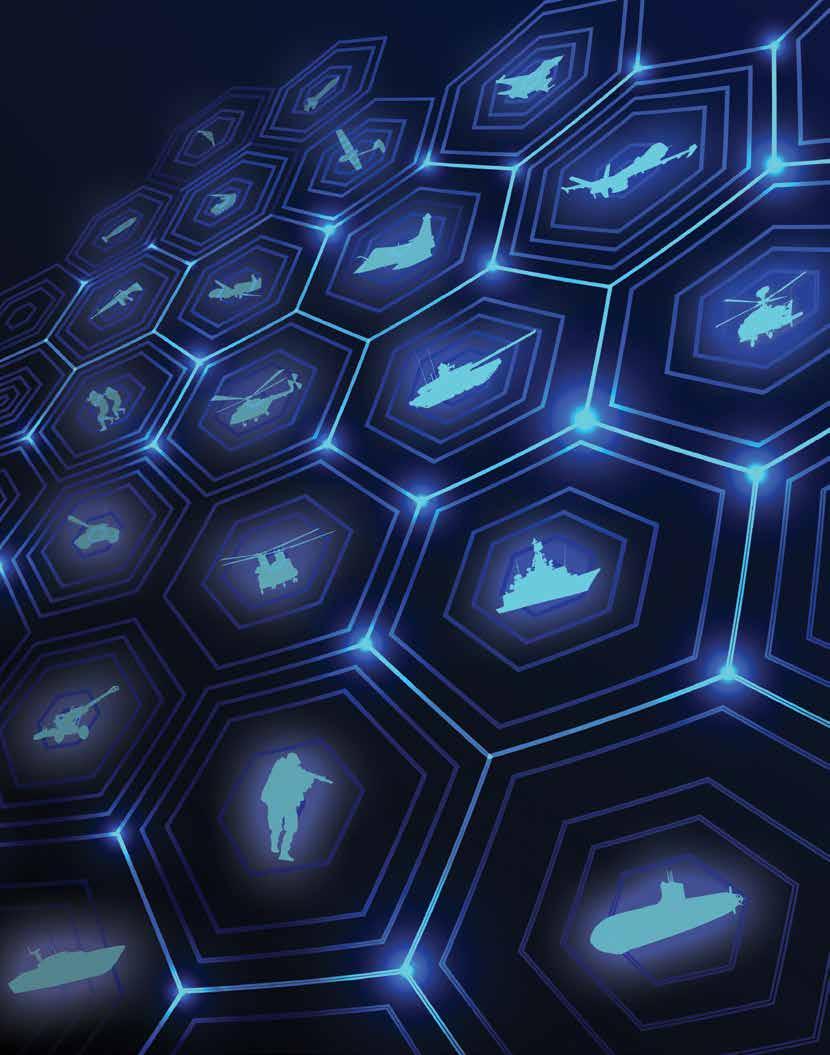



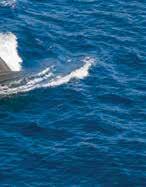
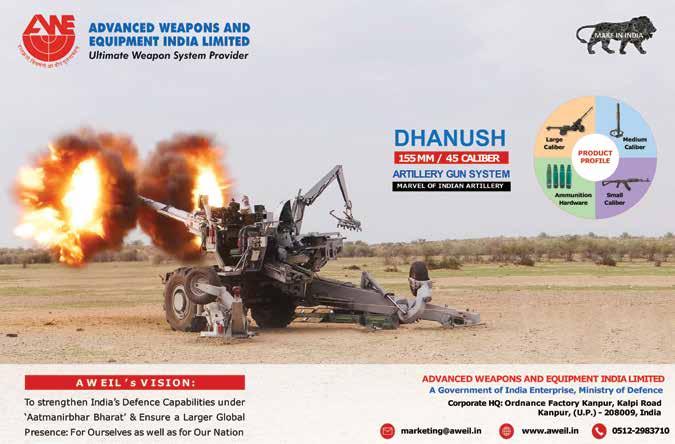
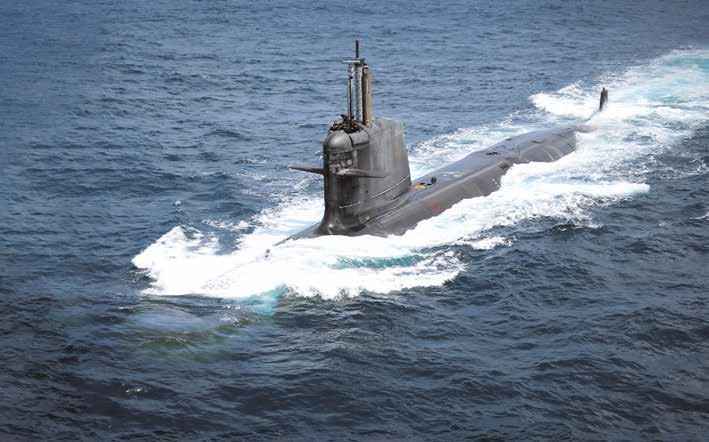



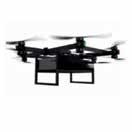
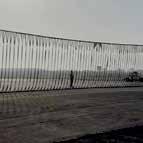

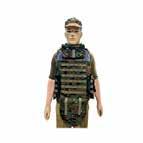



2. India’s Drone Ambition — Policy Thrust and Potentials for Military-Civil Technology Fusion..... 125 Manish Kumar Jha
3. “We do Need to Increase our Defence and Overall R&D Funding to be the Leaders in Military Technology” .............................................. 127
Interview: Dr Samir V. Kamat, Secretary DD(R&D) & Chairman DRDO by Manish Kumar Jha
Indian Programmes Towards ‘Atmanirbharta.......
SP’s Team
ISRO — Leading India’s Space Odyssey................
Interview: S. Somanath, Chairman, ISRO by Manish Kumar Jha
1. The Ministry of Home Affairs & Central Armed Police





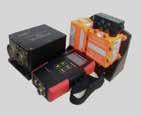
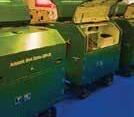









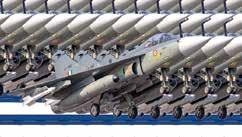

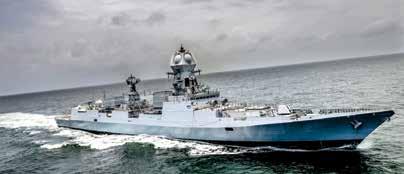










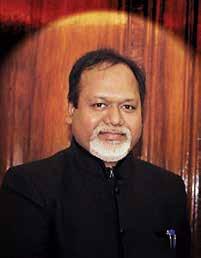
SP Guide Publications
SP Guide Publications was founded in 1964 by S.P. Baranwal, who was its Founder, Editor and Publisher. SP’s Military Yearbook was first launched as a Military Yearbook in 1965 as a reference book on the Armed Forces of India. In its early years, the Yearbook was endorsed by the second President of India, Dr Sarvapalli Radhakrishnan, the second Prime Minister of India, Lal Bahadur Shastri and several other eminent national leaders. From a humble beginning, the Yearbook has transformed into a comprehensive reference book for the Asia-Pacific region covering, not just the regional military balance, but also geostrategic perspectives, advances in military technology, defence equipment and indigenisation, and several other related topics, all contained in a handsome, illustrated and hard-bound reference book of nearly 700 pages.
SP’s Military Yearbook today is a trusted compendium of reliable and high-quality reference information for understanding of the Indo-Pacific military markets, with the quality of its content being at par with international standards. SP’s Military Yearbook 2024-2025 has been further enhanced, as is the practice every year, consequent to inputs received after a detailed online survey involving many armed forces officers, the defence industry, think-tanks and academia. Based on the feedback, this year’s Yearbook has not just focused on the needs of its readers, but also included several perspectives to give a wider view of global defence developments, especially those that impact the Indo-Pacific region. We have attempted to make the information as extensive and accurate as possible and have expanded some chapters to include unique content, which is probably not available elsewhere. The contents have been updated and complemented with info-graphics, charts, graphs, etc.
A set of kind words from Dr S. Radhakrishnan, Second President of India, addressed to our Founder Editor-in-Chief, in March 1966.
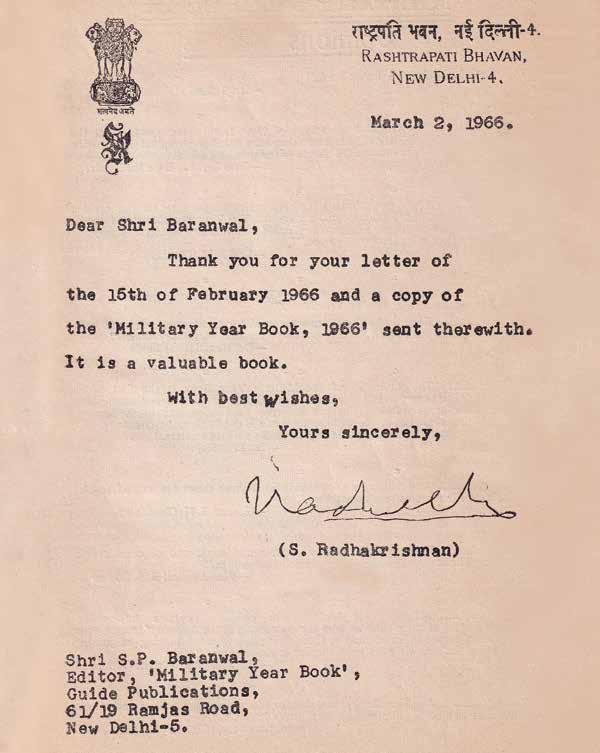
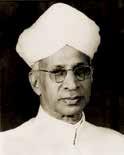
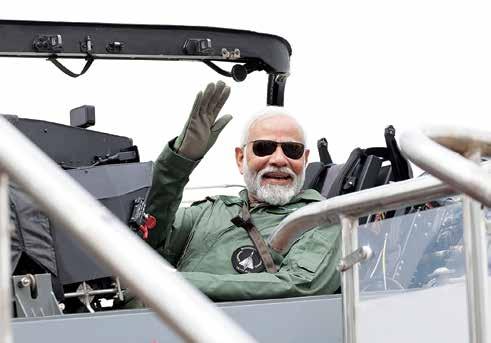
The first article under this section by Lt General P.R. Shankar (Retd) looks at the changing dynamics in the New World Order. With the global landscape being marked with dramatic shifts and uncertainty, traditional geopolitical alliances and power structures are undergoing significant transformation. This offers emerging powers a chance to create more equitable and inclusive global governance. The author opines that India is uniquely placed to benefit from the new order provided it has the strategic confidence to assume its place in the comity of nations. As the Ukraine war inches towards the completion of its third year, becoming the longest inter-state conflict since World War II, Major General B.K. Sharma (Retd) examines the several geopolitical, economic and military lessons for India thus far. After examining the genesis of the conflict, he opines that our policy of strategic autonomy demands display of deft diplomacy to balance our relations with antagonistic Great Powers, especially due to our continued reliance on military imports, both from Russia and the US. He concludes that in the face of a collusive hybrid threat from the two nuclear-armed adversaries, India needs to correctly identify capability and capacity gaps and upgrade our defence preparedness adopting a whole of government approach. In an article on War in Space, Air Vice Marshal Sanjay Bhatnagar (Retd) assesses that the space domain is fast evolving with significant changes technologically as well as doctrinally. Nations are seeking modern technologies to dominate the final frontier.
TRUSTED
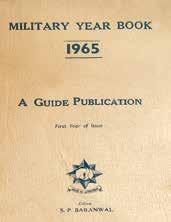
The cover of Military Yearbook 1965

The next article examines the role of BRICS as the new power grouping. The author, Major General Pattanaik (Retd), opines that with an expanding membership and ambitious plans to challenge the US-led financial order, BRICS seems to be emerging as a credible alternative to G7, which could reshape the world’s economic and political landscape. An incisive piece on AUKUS by Cmde Anil Jai Singh (Retd) examines whether the arrangement can shape maritime security dynamics in the IndoPacific vis-à-vis China. Since its inception, AUKUS has evolved to cover the development of ‘joint capabilities and interoperability’ across a wide spectrum of critical technologies, and the author opines that India stands to be a net beneficiary of this arrangement.
This edition of the Yearbook continues its focus on China, as an increasingly aggressive and expansionist China remains the foremost challenge for the global community, especially India. The first article by Vice Admiral Dasgupta (Retd) examines China’s growing maritime presence in the Indian Ocean Region and proposes an eleven-point programme for India to address its maritime security concerns. The next article by Vice Admiral A.K. Chawla (Retd) examines China’s continuing
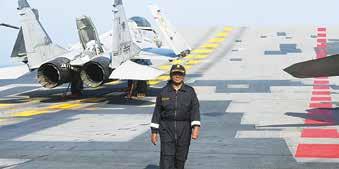


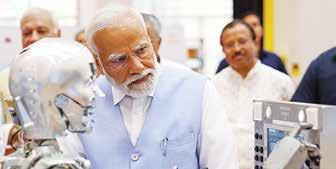
Proactive leadership and commitment to Indian Defence: (clockwise from top left): President of India Droupadi Murmu attending the ‘Day at Sea’ event on board INS Vikrant; Prime Minister and Defence Minister witnessing a Tri-Services Exercise; PM at Vikram Sarabhai Space centre (VSSC); Defence Minister Rajnath Singh visiting Siachen to assess the security situation
encroachments in the South China Sea. China’s relentless assertiveness has led to a situation where conflict in the South China Sea is now more likely than at any other Indo-Pacific flash point. With the US attention currently on the Ukraine war, the tensions in the South China Sea are likely to worsen in the year ahead, and the fallout of any conflict that may arise will have adverse effects across the IndoPacific region. The second article by the same author attempts to answer the oft-asked question whether China will invade Taiwan. It is evident that Taiwan being the ‘core of core issues’ for China, continuance of the current status quo is not acceptable. While a full-scale military invasion seems remote, as it would lead to a global crisis much worse in magnitude than the Ukraine crisis, it cannot be ruled out. To deter such an attack, adequate military power will need to be maintained by both Taiwan and its allies, principally the US. However, the greater likelihood is of escalation of grey zone warfare against Taiwan by China, which will require the sustained use of all levers of power by both the US and Taiwan to counter.
With autonomous platforms proliferating across the world in all spheres of human existence, a detailed proposal to provide for a legal framework for autonomous shipping in India is presented by Admiral Karambir Singh (Retd) and Cdr Hemanth Kumar (Retd). The authors conclude that is essential to present new guidelines, international standards and legal regimes for autonomous vessels at sea, in which India should play an important role.
The Middle East has been in turmoil due to the ongoing IsraelHamas War, which has since expanded to include hostilities between Israel, Iran, Hezbollah in Lebanon and the Houthis in Yemen, three articles look at this critical region. Ambassador Anil Trigunayat looks at the tinderbox that is currently the Middle East where the political and
security situation is in a constant state of flux, with the fall of the Assad regime being the latest dynamic to impact the region. Muddassir Quamar zooms in on the role of Iran and Turkey in the ongoing turmoil in the Missile East where both regional powers are aspiring to assume leadership positions which are at variance to each other, thereby further fuelling instability in the region. The third article examines the prospects of the India-Middle East-Europe Economic Corridor (IMEC) announced during the G20 Summit in New Delhi in 2023. Given the volatility of the region and the conflicting interests of various parties, the IMEC proposal faces considerable geopolitical and security challenges, which will need to be overcome through deft diplomacy.
Lt General Dushyant Singh (Retd), who has recently authored a book on Grey Zone Warfare, encapsulates the essence of this form of warfare, which is being increasingly used across the world, especially by our adversaries. He also briefly suggests what India needs to do in this context. Air Marshal Ravi Kapoor (Retd) dwells on the challenges that the IAF would face in the event of a two-front war and expounds on the capability requirements needed to face such a threat. Air Marshal Sukhchain Singh (Retd) underscores the importance of Atmanirbharta for the IAF, one which is based on development of indigenous technologies tailored to meet India’s unique operational challenges. Lt General Pradeep Bali (Retd) writes about the vital importance of India’s Siliguri Corridor, which is the lifeline for road and rail connections to India’s northeastern states. The security of this vital stretch of territory has again come into focus after the recent political upheaval and unrest in Bangladesh and will require closer attention from both policy makers and security forces.
Manish Jha looks at the resurgence of Indo-German ties, which have received a boost after Germany recently announced its “Focus

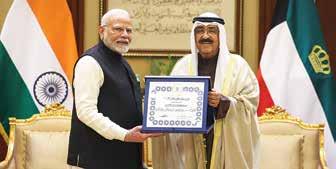


on India” as part of its Indo-Pacific policy. Defence and security are an important part of Indo-German strategic partnership, which will benefit both countries in the years ahead. An interview with the Chief of the Luftwaffe, who was in India to participate the multinational Tarang Shakti Exercise conducted by the IAF, with the largest ever component of the German Air Force to be fielded in India, covers several issues of security interest.
Technological developments are today constantly re-shaping the battlefield and methods of warfare from the strategic to the tactical level. An article on UCAV technology by Vivek Lall, the CEO of General Atomics, the global leader in UCAVs, examines the role that these unmanned craft will play in future warfare. Moving from unmanned to manned aircraft, Air Marshal Anil Khosla (Retd) looks at the shape that future fighter aircraft will take, keeping in mind the 6th generation technologies that are currently in an advanced stage of development. After covering the historical evolution of fighter aircraft the world over, he looks specifically at the future indigenous fighter currently under development, the AMCA. Air Marshal Manmohan Bahadur (Retd) examines the future of the attack helicopter, especially in the light of their spectacular failure in the Ukraine War. He opines that while their utility to attack enemy armour and ground forces is important, the equipment and tactics of attack helicopters will need to adapt to defend against the proliferation in surface-to-air missiles which have caused tremendous losses during the ongoing Ukraine War. Rounding off the air power section, Air Marshal Rajesh Kumar (Retd) looks at the latest developments in air defence, which have blunted the effectiveness
of air power in the Ukraine War. He specifically examines what the IAF needs to do to ensure that its air defence remains adequate against our potential adversaries.
As usual, SP’s team has also put together the latest developments in Emerging Military Technologies, Futuristic Military Programmes, and Futuristic Space Technologies for the benefit of our readers. The set of three reports include programmes that are a good guide to the future of weapon systems and platforms in all dimensions of warfare.
A major thrust of the Government of India in recent years has been the push for Atmanirbharta in the field of defence. The first article in this section examines the major landmarks achieved in developing India’s indigenous defence industry over the past year. India’s slow but steady march to become a leading global defence manufacturing hub is indicated by its annual defence production, which hit a record high of approximately `1.27 lakh crore in Financial Year 2023-24, with a growth of 16.7 per cent over last year and 60 percent increase since 2019-20. India’s defence manufacturing sector is undergoing a profound transformation, driven by a government-led push to reduce dependency on imports and build robust domestic capabilities. Through a well-rounded approach that integrates public and private collaboration, targeted policies, and substantial funding for MSMEs and start-ups, India is laying the groundwork for self-reliance in defence. The establishment of dedicated defence corridors and refined acquisition policies underscores the nation’s commitment to producing high-quality, locally manufactured defence solutions that meet both domestic and international demands. The trajectory towards self-sufficiency is not only
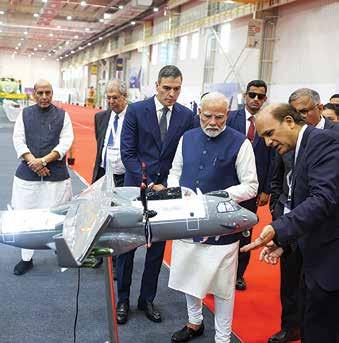

a response to immediate security needs but also part of a broader vision to establish India as a formidable player in the global defence market. This strategic shift is reshaping India’s role in the global arms industry, as it strives to become a reliable and competitive partner on the international stage. India’s defence manufacturing ambitions are more than just a pursuit of ‘Atmanirbharta’ (self-reliance); they signify a long-term commitment to national security, economic resilience, and technological innovation.
The second article looks at the drone industry in India and the potential for Military-Civil Technology fusion in the various cuttingedge breakthroughs in drone technologies. With leading global militaries rushing to redefine their capability architecture and reshape their military doctrines to accommodate unmanned craft of all varieties, there is a pressing need for India to develop strategies and policies for indigenous manufacture, particularly of critical components which are today mainly sourced from China.
Two interviews by Manish Kumar Jha, one with Chairman DRDO, Dr. Samir V. Kamat and the other with Chairman ISRO, S. Somanath, cover a wide range of issues of interest to the readers, including the strategic vision of both organisations, ongoing projects and future plans. In his interview, Chairman DRDO succinctly encapsulates his priorities including development of cutting-edge technologies and military space applications, and the realisation of several key projects such as Tejas Mk II, AMCA, the light tank (Zorawar), the Kaveri derivative jet engine, etc. His vision of DRDO over the next decade envisages the DRDO becoming a leading organisation for critical technologies required for the country, developing disruptive technologies which will give an edge to our Armed Forces and producing state-of-the-art complex systems. He visualises DRDO helping
the country transition from a net importer to a net exporter of military equipment, and in making the country a technology leader in defence systems. Chairman ISRO, in his interview, offered an exciting and ambitious agenda for ISRO, prominent among which are the Gaganyaan and Chandrayaan missions.
The final article of this section by Rohit Goel looks at how India’s space economy is being empowered. Currently valued at approximately $8.4 billion, India’s space economy represents about two per cent of the global market and the Government of India envisions expanding the space economy fivefold by 2033, reaching a projected value of $44 billion. This offers a host of opportunities to space technology ventures in the private sector in India, which are well covered in the article.
The first article in this section by Air Vice Marshal Sanjay Bhatnagar (Retd) outlines the case for India’s Space Command. Space has emerged as a critical enabler in modern warfare, transforming how nations secure their interests and conduct operations. From intelligence and surveillance to satellite communications and positioning systems, space-based technologies are now integral to defence strategies. The author urges that for India, bridging the gap in space defence capabilities is not just an option, but an imperative. The time has come to prioritise robust counter-space programmes, safeguard national assets, and position India as a key player in the evolving landscape of space warfare. Secure and efficient communication is vital for modern military operations.
The second article by Air Marshal Sachdeva (Retd) discusses the Network for Spectrum (NFS) and Defence Communication Network
Several distinguished authors and industry experts contributed to make this edition of SP’s Military Yearbook a quality product. Pages 8, 10, 12 and 14 will give a quick reference to these writers of eminence and global standing.
Our special thanks to Vice Admiral A.K. Chawla, who retired as Flag Officer Commanding-inChief, Southern Naval Command in enabling significant updates in the contents of this Yearbook.
Sincere thanks, also, to Air Marshal R.G.K. Kapoor (Retd), Major General Atanu Pattanaik (Retd) and Rear Admiral R.J. Nadkarni (Retd), for enabling important & substantial improvements to the contents.
As usual, our whole team led by Rohit Goel, including the research team of Bharti Sharma, Rimpy Nischal and Survi Massey, and the design team of Vimlesh Yadav and Sonu Bisht, at SP Guide Publications whose dedication and hard work enables an updated edition to be published every year. Neetu Dhulia and Rajeev Chugh have worked hard on the front of collaborations with the particpating companies.
Clarifications:
Most countries are reluctant to part with information on their armed forces and military equipment. Sincere efforts have been made to garner information from the most authentic open sources. It is quite possible that variations may crop up in some cases.
Articles in this volume contain the personal opinions of the contributors and do not reflect the views of the publishers or the Indian Government, including the Ministry of Defence.
Suggestions for improvements will be appreciated and carried out to the extent possible and practically viable.
(DCN), which are transformative projects that have modernised the communication infrastructure of the Indian Armed Forces, thereby strengthening India’s defence capabilities, and ensuring readiness for modern challenges. He informs that the NFS project is a landmark initiative that addresses the dual needs of enhancing defence communication capabilities and supporting the growth of mobile telephony in India. By creating a dedicated communication network for the Indian Armed Forces and releasing valuable spectrum for commercial use, the project has contributed not just to the modernisation of both defence and commercial communication infrastructure but has also significantly benefited the growing Indian economy.
The third article by Vice Admiral Chawla (Retd) addresses the five issues which have dominated public discourse around the creation of theatre commands: the savings in terms of manpower and equipment that will accrue from this restructuring; the demand for an Indian model of jointness; the assertion that the Indian Armed Forces have done well thus far without theatre commands; whether jointness is better engendered bottoms-up or top-down; and apprehensions that the Indian Army could dominate joint structures at the expense of the other two Services. With the Defence Minister of India declaring 2025 as the “Year of Defence Reforms”, focussed on creating Integrated Theatre Commands, this is a timely article on the issue.
As before, this section also carries separate briefs on the Integrated Defence Staff and the Joint organisations under it, the Indian Army, Indian Navy, Indian Air Force, Indian Coast Guard and the Who’s Who in Indian Defence. The briefs contain detailed organograms of organisational structures of all departments, Service Headquarters and other defence organisations. They also contain updated details of weapons and sensors with the Armed Forces as available from open sources. Additionally, there are separate briefs on the Department of Defence Production & DPSUs and the DRDO.
This section contains the Ministry of Defence (and equivalent structures) and comprehensive contact details of key personnel in the organisational hierarchy from Australia, Bahrain, Bangladesh, Bhutan, Cambodia, China, Egypt, Indonesia, Iran, Iraq, Israel, Japan, Jordan, Kuwait, Laos, Lebanon, Libya, Malaysia, Myanmar, Nepal, New Zealand, North Korea, Oman, Pakistan, Philippines, Saudi Arabia, Singapore, South Korea, Syria, Thailand, Turkey, UAE, US Indo-Pacific Command, Vietnam, and Yemen. Any Aerospace and Defence company wanting to do business in any of these countries will find this information extremely useful as it gives them where to start from.
As part of our coverage of the regional military balance, there are updates on the security environment, military expenditure and military equipment of the armies, navies and air forces of nearly 40 countries across the Indo-Pacific including: South Asia; Southeast Asia; East Asia the Pacific Rim & Australia; and West Asia and North Africa. In this section, we also have an overview of the security environment in the Indo-Pacific region covering vital strategic, geopolitical, economic, military and security trends in the Indo-Pacific. This overall summary is followed by recapitulation of dedicated and localised security events in each country that impacted the three mentioned regions, to provide a detailed analysis of the dynamic and fast changing security paradigms in each region.
I wish our readers an enjoyable reading experience with interesting strategic insights on international and regional geopolitics, national security developments, military technology updates and information on the business of defence and technology. We at SP Guide Publications strive to work towards continuous process of improvement and look forward to the feedback from our esteemed readers. I also take this opportunity to wish our esteemed readers a very happy, healthy and successful 2025.
Happy Reading! n

Jayant Baranwal Editor-in-Chief





Copyright © 2024
All rights reserved. The information published herein is for the personal use of the reader and may not be used for any other activity. No part of this book may be reproduced, stored in a retrieval system or transmitted in any form by any means – digital, electronic, mechanical, photocopy, recording or otherwise – without the prior written approval of the Editor-in-Chief.
The publisher shall not be liable in the event of incidental or consequential damages in connection with, or arising out of, the furnishing or use of the information, associated instructions/claims of productivity gains.
Concept
Jayant Baranwal
Editor-in-Chief & Publisher
SP Guide Publications Pvt Ltd New Delhi, India
Credits
Publishers extend special thanks to the companies who have provided the contents and respective photographs for this feature. Also gladly acknowledge their extensive support and co-operation in formulating this feature with maximum possible up-to-date and lively contents.
Printed in India at Kala Jyothi Process Pvt Ltd, Hyderabad
SP GUIDE PUBLICATIONS PVT LTD
Corporate Office
A-133, Arjun Nagar
Opposite Defence Colony, New Delhi 110003, India.
Phones : +91 11 40042498, 40793308
E-mail: info@spguidepublications.com
Order: order@spsmilitaryyearbook.com
Websites: www.spguidepublications.com www.spsmilitaryyearbook.com

Armoured Vehicles Nigam Limited (AVNL) is one of the seven new Defence Public Sector Undertakings. We are in our third year of business and are committed to excellence, growth, and self-reliance in creating a robust defence ecosystem. Our main products are T-72, T-90, BMP-II, and their variants.
As part of our steps towards indigenisation, all our units are actively engaged with Indian industries, Academia, and iDEX (Innovations for Defence Excellence). Through this engagement, we are not only upgrading our existing products but also developing new products and technology. Our Indian industry
AVNL is aiming at achieving 100 per cent indigenisation progressively by December 2025 for defence equipment being manufactured by them.
partners are promoted through Make-II procedures, source development OTE, signing MoUs, etc. Of the 31 critical LRUs/sub-assemblies/items for indigenisation, 21 have already been sourced locally. This is a testament towards our goal for Atmanirbhar Bharat for self- reliance in the defence sector.
AVNL is aiming at achieving 100 per cent indigenisation progressively by December 2025 to eliminate dependency on foreign sources for defence equipment, being manufactured by AVNL.
The T-90 MK-II is the advanced version of the T-series main battle tank built on a state-of-the-art weapon platform offering increased firepower, mobil-
ity, and protection. It is manufactured by HVF, Chennai, a unit of AVNL. Its main armament is a 125mm smoothbore gun, stabilised in both axes and enabling accurate firing on the move. It is powered by a 1000 HP diesel engine. The maximum range of aimed firing with TIFCS (Thermal Imaging Fire Control System) is 1,800 meters, and it is capable of firing a Laser Guided Missile through its main armament with a range of 5,000 meters.
The Indian Army has placed a contract for the supply of 464 T-90 MK-III tanks, valued at approximately `18,000 crores. This is part of the other orders AVNL has bagged valuing approximately ` 32,000 crores, such as Kavach, BMP-II, Arjun MK-II, T-90 Bhishma, T-72 Ajeya, overhauling of tanks and BMPs, BLT and MPV.
These products and numbers are evidence of our commitment, creativity, and steadfast determination to protect our nation and support our armed forces. Additionally, we have successfully overhauled major critical assemblies of the MBT Arjun, which exemplifies our technical prowess and our commitment to self-reliance.

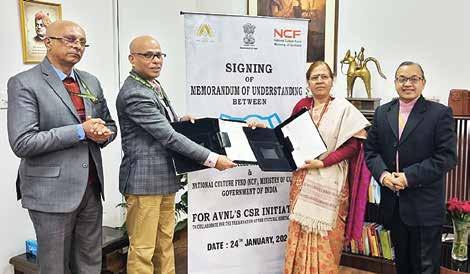
AVNL has recently signed a significant contract with the Indian Army to upgrade a fleet of 693 ICV BMP-II Sarath vehicles. These upgrades will improve the firepower, night-enabled Fire Control System (FCS), automatic target tracking, next-generation missile firing capabilities, and other advanced features. BMP2M has been developed through an inhouse R&D project and has undergone rigorous field trials to ensure its performance.
CCPT (Carrier Command Post Tracked) is designed and developed for accomplishing all tactical and technical fire control functions for the effective deployment of self-propelled (SP) Artillery guns. It serves as a common platform for command post functions of all the Indian Artillery guns. Manufactured at OFMK (Ordnance Factory Medak Office), Telangana, a unit of AVNL, it is the first of its kind with a tracked chassis housing Artillery Combat Command and Control Systems (ACCCS) for accomplishing fire control functions of both towed and selfpropelled versions. Two FoPM (First off Production Model) CCPT vehicles were indigenously developed, manufactured, and subsequently issued to the Indian Army in October 2023.
(Top) Indian Army has placed a significant contract with AVNL to upgrade a fleet of 693 ICV BMP-II Sarath vehicles;
(Above) The company signed an MoU with the National Culture Fund (NCF) to preserve India’s cultural heritage as part of its CSR efforts.
AVNL’s core philosophy and guiding principle is to balance profit with people and planet through the Triple Ps: People and Planet through Profit. This emphasises economic success while being accountable for social and environmental impact, fostering sustainable development and uplifting the lives of those who need it the most. As part of our CSR initiatives, we have partnered with the Indian Army to open an educational center of excellence providing training to underprivileged children from rural areas of J&K for competitive exams. Our partnership has also extended with the National Cultural Fund to support heritage sites in India for their protection, conservation, and restoration.
AVNL’s vision is to become a global leader in Armoured vehicle manufacturing and the immediate goal is to reach a pinnacle of $1 billion by FY 2025-2026. •
Atech, an Embraer group company, is recognized as a Brazilian “System House” and stands out for its expertise in the development and integration of command and control systems, embedded systems, cybersecurity, integrated surveillance, simulation and training, as well as solutions for air traffic management and public security. The company develops technologies that ensure operational superiority and security of military operations, contributing to national sovereignty and the protection of critical infrastructures.
Atech has a significant presence in the defense sector, with high technology used in important Brazilian strategic programs such as PFCT (Tamandaré-Class Frigates Program), DACOM (Air Defense and Military Operational Circulation), LABGENE (Nucleoelectrical Generation Laboratory), besides air and ground surveillance systems in North Africa. The company is responsible for the development of air traffic management systems in Brazil and India.
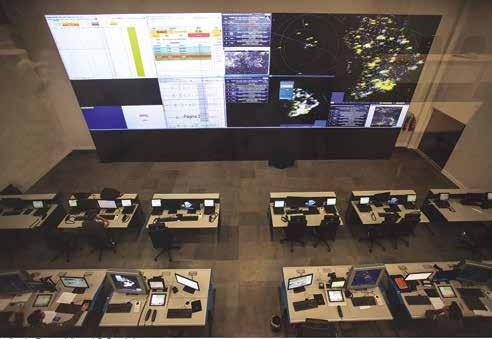
Command and Control Center
At the Brazilian Navy, Atech is involved in the PCFT (Tamandaré-Class Frigates Program), particularly in the integration of command and control technologies, and combat management (CMS - Combat Management System), and platform (IPMS - Integrated Platform Management System). Atech is responsible for the development and integration of these systems, aiming to improve the surveillance, defense, and attack capabilities of frigates.
At LABGENE (Nucleoelectrical Generation Laboratory), the company develops monitoring,
control, and protection systems, as well as works on the integration of instrumentation and auxiliary systems that will be used at the facility.
In addition to these projects, Atech is present in the H-XBR Program (Super Cougar), which is coresponsible for the development of the software for the N-TDMS (Naval Tactical Data Management System) and for developing the sensor and weapons simulation models for the system´s evaluation tests.
Atech´s systems also operate in the country´s aerospace defense, supplying technological solution to the Brazilian Air Force, which is leading a comprehensive project to modernize its aircraft and Command and Control (C2) systems, that includes the Gripen fighters, the Airborne Early Warning aircraft, E-99M, and the related software systems. Because of its expertise, Atech is participating in the program with the
modernization of the C2 solution for aerospace defense, the DACOM (Air Defense and Military Operational Circulation), the development and maintenance of simulation and training systems to support Gripen aircraft operations, and the modernization of embedded and ground systems for the E-99M aircraft.
The company is responsible for the development and evolution of the main air traffic management (ATM) systems, in partnership with the Brazilian Airspace Control Department (DECEA).
The partnership between FAB and Atech plays a crucial role in integration of the country´s aerospace defense systems.
Atech also develops technologies to support the surveillance of urban areas, such as anti-drone solutions. One example is the Arkhe GDI (Incident Management), a platform that employs advanced command and control capabilities, providing a comprehensive real-time view of the operational scenario and supporting decision-making. The system features tools that enable a prompt and effective response to incidents, whether they are of a natural origin, as weather events, or humanrelated, like equipment failures or illegal actions. In public security, the Arkhe GDI is used in various types of operations that require real-time planning and monitoring.
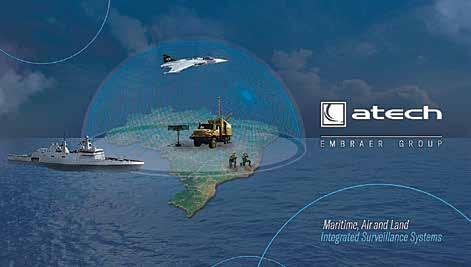
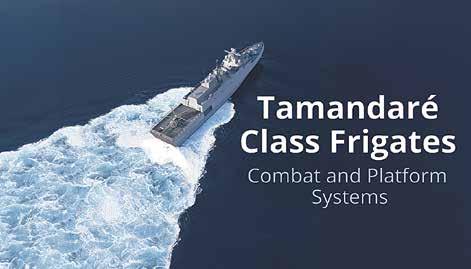
Atech values the excellence on the development of its products to meet all customers’ requirements All solutions are delivered with the necessary layers of protection and cybersecurity defense. The company regularly participates in cybersecurity exercises such as Locked Shields, organized by NATO Cooperative Cyber defense Centre of Excellence (CCDCOE), and Cyber Guardian, coordinated by the Brazilian Army, which is the largest exercise of its kind in the Southern Hemisphere.
Always seeking innovation, Atech develops and applies concepts and tools of Artificial Intelligence (AI) in several areas, including defense systems, simulation, air traffic management, wargaming, and cybersecurity. In partnership with the Technological Institute of Aeronautics (ITA), Atech invests in research focused on the application of AI.
(Top)
Intregated Surveillance systems;
(Above)
Tamandaré Class Frigate Combat and Platform Systems.
Atech’s vision for the use of AI is centered on customer needs, making its solutions more effective and precise.
Recognized and certified as an EED (Strategic Defense Company) by the Brazilian Ministry of Defense, Atech develops technologies applied in many projects, both national and international. Based on international standards, the company is responsible for the development of Brazil’s air traffic management system, which is recognized by ICAO (International Civil Aviation Organization) as a global reference system.
Additionally, Atech holds CNEN certification for Engineering Services related to the Design, Manufacturing, Supply, Installation, and Commissioning of Instrumentation and Control and Protection Systems for the Nucleoelectrical Generation Laboratory - LABGENE. •
Advanced Weapons And Equipment India Limited (AWEIL) is a Defence Public Sector Undertaking, a fully Governmentowned Company under the Ministry of Defence, Government of India.
AWEIL is a market leader in manufacturing ecosystem in India and is engaged in Production, Testing, Research & Development and Marketing of a comprehensive range of weapons. AWEIL has core competency in manufacturing Small, Medium and Large Caliber Weapons, Mortars and Ammunition Hardware including Shells, fuzes, primers and stabilizer assemblies with expertise and capability to fulfill the requirements of Armed Forces, DPSUs, Civilian Markets and Exports.
AWEIL with its Corporate Office at Kanpur (India), and its state-of-the-art manufacturing units spread across the country, has proven integrated facility for high-quality, cost-effective manufacturing of small, medium and large caliber weapon systems. AWEIL has extensive facilities for material testing and inspection with its own Accredited Labs at all units ensuring high quality standards. All units are ISO 9000-2015 certified. AWEIL has entered into a Long Term Collaboration Agreement with a major Private Defence Company for Co-development & Co-production of Large Calibre Gun System.
AWEIL is expanding its footprint with already established customer base in Asia, Africa, North America and Europe. The trust and patronage received from our domestic as well as global customers reflects their faith in our products and services. As a part of Global Outreach, AWEIL is endeavouring to forge alliance with foreign companies in defence man-
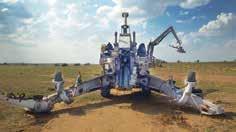
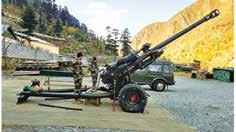
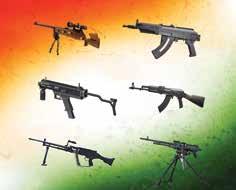

ufacturing including artificial intelligence and smart munitions to accomplish the ‘Make in India’ mission of Government of India.
Product Profile
AWEIL produces a wide range of Weapons:
Large Caliber Weapon Systems include 155 mm/45 Cal Artillery Gun System (DHANUSH); Up-Gunning of 130 mm to 155 mm/45 Cal Artillery Gun System (SHARANG); 155 mm/52 Caliber Towed & Mounted Gun Systems; 105mm Light Field Gun including its Mounted version; Tank Gun Articles (125mm/120mm).
Medium Caliber Weapons include 120 mm Mortar; 81 mm & 51mm Mortar, 76mm Naval Gun Ordnance, 40mm Air Defence Gun; 40 mm Under Barrel Grenade Launcher and 40 mm Multi Grenade Launcher; 30 mm Naval Gun Systems; 12.7mm Stabilized Remote Controlled Gun System.
Small Arms Products include 7.62 x 51 mm Medium Machine Gun; 7.62 x 51 mm Light Machine Gun; 7.62 x 51 mm Sniper Rifle; 8.60 x 70 mm Sniper Rifle; 7.62 x 51 mm Assault Rifle; 7.62 x 39 mm Assault Rifle; 7.62 x 39 mm Carbine; 5.56 x 30 mm Carbine; 12 bore Pump Action Gun; Sporting Rifles; Revolvers; Pistols.
Ammunition Hardware includes Shells (155 mm, 130 mm, 125 mm, 120 mm, 105 mm, 51 mm, 40mm, 40 mm PFFC, 30 mm); Fuzes for 81 mm & 120 mm Mortar, Fuze for 84 mm Illuminating; Fuze for 30 mm HEI/HET & Stabilizer Assembly for PINAKA. •

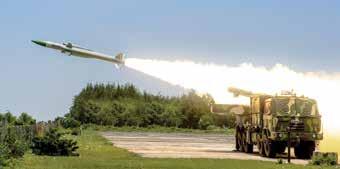
Bharat Dynamics Limited (BDL), established in 1970 in Hyderabad, operates as a premier Government of India enterprise under the Ministry of Defence. Initially tasked with manufacturing Anti-Tank Guided Missiles for the Indian Army, BDL began its journey through collaborations with foreign Original Equipment Manufacturers (OEMs), supplying missiles and allied equipment to the Indian Armed Forces.
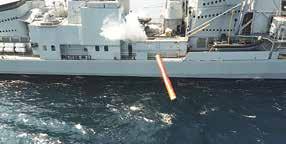
The launch of the Integrated Guided Missile Development programme by the Indian government in the 1980s marked a turning point for BDL. Designated as the Prime Production Agency, BDL collaborated closely with DRDO, adopting advanced manufacturing and programme management technologies. This evolution transformed BDL from a missile manufacturer into a comprehensive Weapon System Integrator, offering complete solutions to the Indian Army, Navy, and Air Force.
Today, BDL is a multi-product, multi-location enterprise, offering a wide array of products, including Surface-to-Air Missiles, Air-to-Air Missiles, Airto-Surface Weapons, Launchers, Test Equipment, Underwater Weapons, Counter Measure Systems, and Anti-Tank Guided Missiles. The company also provides life cycle support and refurbishment services for vintage missiles while increasingly focusing on AI-based products and future-generation technologies.
BDL is actively exploring new areas, such as dronedelivered payloads and partnerships with foreign OEMs for new weapons and potential Transfer of Technology
(Top Left-Right)
Astra Weapon System; Akash Weapon System.
(Above)
Varunastra Light Weight Torpedo.
(ToT). With over five decades of experience, BDL has expanded into the international market, offering products like the Akash and Astra Weapon Systems, Smart Anti-Airfield Weapon, Helina, and various torpedoes and Anti-Tank Guided Missiles. The company has already begun exporting its products, such as Light Weight Torpedoes, and is garnering interest from several countries.
BDL operates manufacturing facilities in Hyderabad, Bhanur, Ibrahimpatnam (all in Telangana), and Visakhapatnam (Andhra Pradesh), with new units planned in Amravati (Maharashtra) and Jhansi (Uttar Pradesh) to meet the growing demands of the Indian Armed Forces and friendly foreign nations.
BDL continuously upgrades its manufacturing technologies, incorporating Industry 4.0, robotics, and the highest quality standards, including AS 9100 and Zero Defect practices. The company has established indigenous capabilities like a warhead manufacturing facility and an integrated Radio Frequency (RF) Seeker Facility, crucial for future missile technologies.
With a strong in-house R&D Division, BDL has achieved significant advancements in indigenisation, resulting in products like the AI-enabled Counter Measure Dispensing System and the third-generation ATGM, Amogha. As BDL continues to innovate and expand globally, it is well-positioned for steady growth, aiming to redefine its stature in both domestic and international defence sectors. By staying true to its core values while embracing change, BDL is set to shape the future of India's defence manufacturing. •
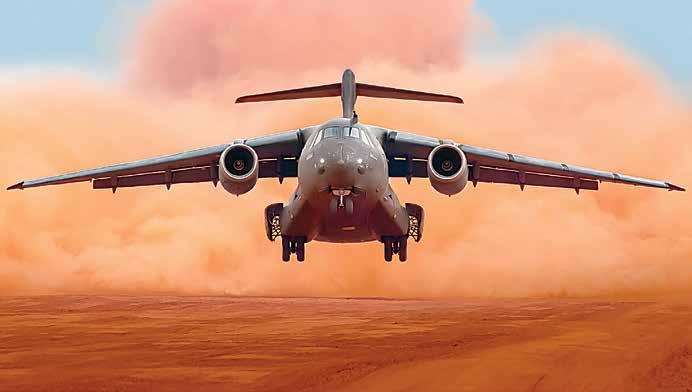
Embraer Defense & Security, a global company present in more than 60 countries and very well known mainly for its aircraft, such as the A-29 Super Tucano light attack and advanced training aircraft, and the state-of-art C-390 Millennium multi-mission transport, celebrates a great momentum with its portfolio.
Setting a new standard with an unbeatable combination of proven and innovative technologies, the C-390 Millennium is conquering the world for its flexibility and efficiency. The aircraft has aroused the interest of several nations around the world, especially NATO and NATO-allied nations, which are looking for a capable, efficient, multi-mission, new-generation military transport that requires little ground support. Countries such as Portugal, Hungary, Netherlands,
Austria, Czech Republic, South Korea, Sweden and Slovakia have already chosen the C-390 Millennium to meet their military transport needs.
To describe the C-390 Millennium as a masterpiece of innovation and perfection is no exaggeration. Embraer has developed the new military multi-role transport aircraft in close cooperation with the Brazilian Air Force (FAB) to meet their very demanding requirements and is now revolutionizing the market with a completely new concept. The C-390 positions itself as a versatile, very capable and mission-ready platform, providing added mission value for Air Forces, partners and alliances, with low operating costs, ease of maintenance, exceptional fleet performance and maximum operational readiness.
Embraer has applied on the C-390 Millennium the most advanced technologies such as fly-by-wire con-
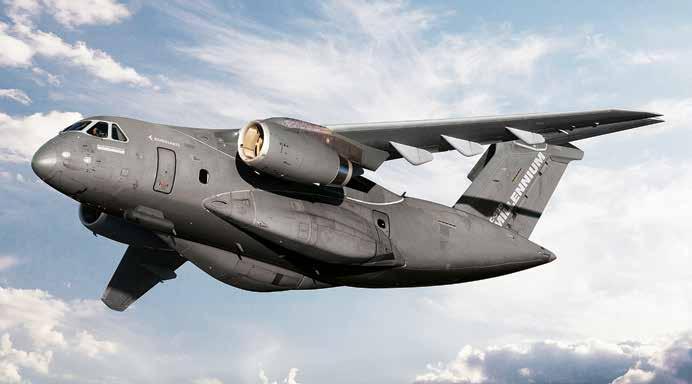
trols, night vision capability and compatibility, OBIGS, electronic warfare systems, glass cockpit, maintenance computer, among others. In addition, the communication and navigation systems assure the highest interoperability level in networked environments and multiple domains.
No matter whether you look at the tactical radar, the self-protection systems (against both IR and radar threats), the avionics or the ultra-modern cargo handling system, the C-390 Millenium will surprise you. More than that, the pinpoint-accurate computerized load drop solution for precise aerial supply, the modular roll-on/roll-off firefighting system, or the ability of using intensive care equipment during medical evacuation missions, and the embedded technologies meet the highest standards.
Very importantly, according to the motto “one aircraft - many possibilities”, the conversion to a wide variety of operational tasks and scenarios - from aerial refueling to cargo tasks - is quickly possible. The C-390 can also be equipped with a detachable EO/IR pod to perform search and rescue (SAR), aerial reconnaissance or special operations, for example. In addition, the aircraft can easily withstand even the most demanding conditions and challenges - from ice, snow and freezing temperatures in the Arctic and Antarctic to extremely high humidity in rainforest areas and exceptionally hot and dry environments such as deserts, there are no limitations to its usability. And this also applies to the surface on which the aircraft is to land or take off: With the C-390, safe flight operations can also
Since entering operation with the Brazilian Air Force in 2019, the Portuguese Air Force in 2023 and the Hungarian Air Force in 2024, the C-390 has proven its capacity, reliability, and performance
be made possible out of unpaved or damaged runways. Embraer has achieved something quite rare with the C-390: With this airlifter, the Brazilian company has developed nothing less than a new generation of aircraft that enables air forces to operate in completely new dimensions and offers unrivaled capabilities in the category of military tactical transport aircraft - and the C-390 has already confirmed this in operation.
Since entering operation with the Brazilian Air Force in 2019, the Portuguese Air Force in 2023 and the Hungarian Air Force in 2024, the C-390 has proven its capacity, reliability, and performance. The current fleet of aircraft in operation has accumulated more than 16,000 flight hours, with a Mission Capable Rate above 93% and Mission Completion Rate above 99%, demonstrating exceptional productivity in the category.
Another advantage is that the C-390 Millennium can carry more payload (26 metric tons) compared to other medium-lift military cargo aircraft and flies faster (470 knots/870 km/h), resulting in a more effective operation. The C-390 has been fully certified to perform a wide range of missions such as transporting and dropping cargo and troops, air-to-air refueling, medical evacuation, search and rescue, firefighting, and humanitarian missions, operating out of unpaved runways such as packed earth, soil, and gravel. The aircraft configured with air-to-air refueling equipment, with the designation KC-390, has already proven its aerial refueling capacity both as a tanker and as a receiver, in this case by receiving fuel from another KC-390 using pods installed under the wings. •

FFV Ordnance AB, part of the global defence and security company Saab AB, has for decades been one of the world’s leading suppliers of man-portable multi-purpose weapons as the Carl-Gustaf® system and the AT4 family. The Carl-Gustaf® system, along with a wide range of ammunition, have been in in service with the Indian Armed Forces since the mid-seventies.
To fulfill the requirements of Make in India, ‘Atmanirbhar Bharat’ and support the indigenous production, Saab has, after approval of 100% foreign direct
investment, established a new company Saab FFVO India Pvt Ltd.
Saab FFVO India will produce the Carl-Gustaf M4 weapon system including the sighting system FCD 558. The setup will include transfer of key technologies and manufacturing methods for production and supply of the system to the Indian Armed Forces and to be a part of the global supply chain. The construction of the new Carl-Gustaf® manufacturing facility in India started beginning of March 2024 and the first production is planned in 2025. The factory will be located in the state of Haryana.
FFV Ordnance has developed the new HE 448 highexplosive round and fire control device including a modern sight (FCD 558) that takes the Carl-Gustaf user experience to a new level, providing troops with solutions to common battlefield challenges.
A key concern for every operation is the first-round hit. To enable better system performance, the Carl-Gustaf M4 system is equipped with a two-way communication protocol, known as Firebolt®. Exact and vital information is transferred between the round and the FCD 558 and are, together with the settled target distance, used for ballistics calculations and thereafter automatically set the correct elevation of the sighting system, which greatly enhance the hit probability. This enables more precise ballistic calculations and also increased simplicity and durability of the system.
While the previous fire control system required handling of a number of different range knobs for different ammunition types, the electronics and the digital interface on the FCD 558 removes this requirement to obtain accurate ballistics. Also, the legacy elevation unit were a pure mechanical solution with much more coarse range and ambient temperature setting scales, this is in FCD 558 achieved electro-mechanically based on data input from different sensors.
When a Fireboltcompatible round is loaded, the FCD 558 will immediately identify the type of round. Once the gunner set the target range, the ballistic computer uses the range, type of round, fuse setting along with propellant temperature, air pressure and ambient temperature to calculate the elevation for best trajectory and a successful hit.
distribution and lethality of the round with e.g. better ability to defeat body armour.
HE 448 round is equipped with the Firebolt interface which communicates with the FCD 558, greatly enhancing accuracy and also allows the electromechanical fuse to be set in either direct attack or air burst mode.
The 800 steel balls in the HE 441 have been replaced with 4,000 tungsten pellets in the HE 448, increasing fragment density and the overall probability of striking vulnerable areas on the enemy combatant. The reduction in weight of the HE 448, by 500 grams compared to the HE 441, is down to a lean 2.7 kilogram. The reduced weight gives higher muzzle velocity and ability to cover more ground. At the same time, advances in ballistics ensure that not only does the HE 448 has longer effec-
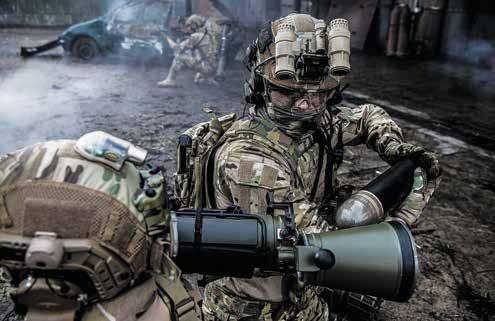
tive range, it is able to maintain outstanding levels of accuracy over the distance.
The FCD 558 and Firebolt ammunition will produce optimal results when used together, however the FCD is compatible with legacy ammunition. The gunner can simply enter the round type via a toggle button, set the target distance and the ballistics computer will calculate based on existing information.
The successor to the HE 441, the HE 448 is a powerful high-explosive round designed for use against unprotected troops, troops in defilade, and soft skin targets including vehicles. The reduced weight and modifications to the composition increased the range, fragment
FFV Ordnance is constantly evaluating the market requirements and demands to improve and adapt all system components. Hence new Firebolt-compatible ammunition types are under development for overall improved performance with respect to e.g. effective ranges, improved accuracy and warhead performance, all to meet the requirements of the future battlefield.
In parallel, a common Firebolt Cartridge for the legacy ammunition is under final stages of development. This will enable auto detection of round and actual propellant temperature to be transferred to the FCD for ballistic calculation, all resulting in improved performance of the system. •

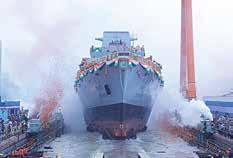
SP Guide Publications (SP’s): There are good tidings in store for GRSE with significant orders being approved by the Defence Acquisition Council (DAC). Could you tell us more about these developments?
PR Hari, (CMD): Our current orderbook is healthy and considering the project execution plan, our shipbuilding facilities shall be optimally loaded during the coming years. Further, the focus of our Government on “Atmanirbharta”, especially in Defence Manufacturing is evident from the recent approvals accorded by the
(Left)
Launching of 3rd P17
A Advanced Frigate Vindhyagiri
(Right)
Cmde PR Hari, IN(Retd), Chairman & Managing Director, GRSE
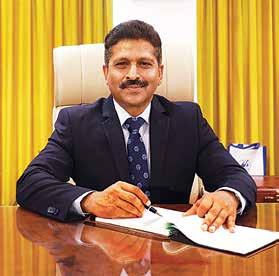
Defence Acquisition Council for multiple shipbuilding projects for the Indian Navy and the Indian Coast Guard. We have already submitted our bid for the 8-ship Next Generation Corvette project and we are eagerly waiting for the L1 declaration. In addition to this, GRSE are also looking forward towards the RFPs for the other projects already approved by the DAC – the MCMV, MPV, FIC, NG-WJFAC & NG - Survey Vessel projects for the Navy and the NOPV, NG-FPV and FIB projects for the Indian Coast Guard. In a nutshell, I expect the future to be bright for our Shipyard.
SP’s: With such large orders in the pipeline, how is GRSE managing its capacity and execution timelines?
CMD : This is definitely a very valid question. Yes, we have not only enhanced our capabilities but also our shipbuilding capacity. During the last two
years, we focused on revitalizing our core shipbuilding infrastructure & facilities and as of now, GRSE can build 24 warships concurrently in its own yards. In addition to this, we also have tie-ups with capable private shipyards. Hence, capacity is not an issue. Further, by adopting the latest technology, such as Artificial Intelligence, Virtual Reality, Robotics, and modular shipbuilding, we have also brought down construction time significantly, and this helps in maintaining project schedules. That is why GRSE can look forward to additional orders, even while building 17 warships of four classes for the Indian Navy & 27 more vessels across eight other diverse projects, (11 vessels across 4 international projects and 16 vessels across 4 domestic projects) which are currently under construction at GRSE.
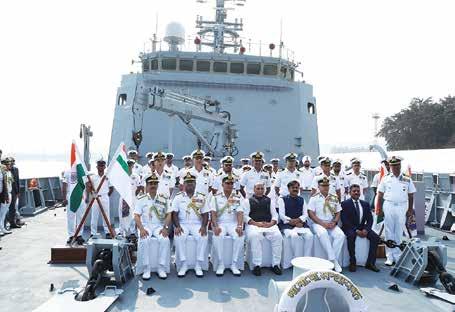
SP’s: Export growth has been a key focus for GRSE. Could you shed light on your recent international projects?
CMD : Exports has been a focus area for us, and we are now building six specialized multi-purpose commercial vessels for a European customer. In addition to this, we are building five platforms for another Friendly Foreign Country. There is a strong demand from Europe and the Middle East for various types of vessels including Short Sea Ships, Offshore Support Vessels, Wind Farm Support Vessels, and Product Tankers. The current geopolitical scenario, characterized by regional tensions with impacts at a global level, together with the growing need to safeguard the integrity of international energy and communications infrastructure, is likely to increase demand for defense vessels as well. Tapping these emerging opportunities, we aim to secure more export orders for warships and commercial vessels by forming strategic alliances with global shipbuilders and defence contractors, helping us leverage joint expertise and access new markets. We also export portable steel bridges and other equipment to friendly foreign nations.
1st
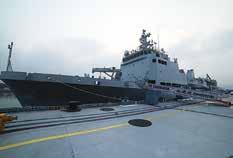
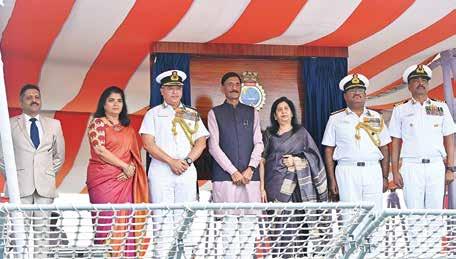
of 2nd SVL, INS
SP’s: With sustainability coming into critical focus globally, how is GRSE addressing environmental concerns in its operations?
CMD : Green shipping and greening of ports are key focus areas of the Government of India. We have
built on the expertise gained through execution of the Next Generation zero-emission Ferry project and bagged an order for 13 hybrid ferries from the Government of West Bengal. GRSE is also endeavoring to make forays into design and construction of hydrogen powered vessels and hybrid tugs. The shipyard is also adopting renewable energy sources and implementing energy-saving measures towards sustainable shipyard operations. •
Established as a defence PSU in the year 2021, IOL specializes in the manufacturing of opto-electronics, vision devices and communication products, catering to the ever growing requirements of the armed forces, various defence establishment, MHA, other DPSU’s etc. IOL product range includes laser range finders, multi-spectral night vision devices and thermal imaging systems for surveillance and targeting, enhancing situational awareness and surveillance capabilities etc.
The New Products Developed by IOL are:
• Commander’s Thermal Imaging Sights for AFVs.





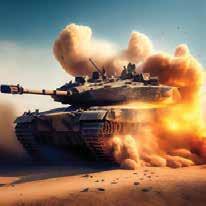

• Thermal Imager Fire Control System (TIFCS) for Tank T-72.
• Fusion Technology based Driver Night Sight (DNS) for BMP-II.
• Telescopic sight for Assault Rifle.
• Spool – A and Spool – B for Torpedo for Indian Navy.
• Missile firing sight for night environment (thermalised).
The New Products under Development are:
• Automatic Target Tracker & Digital Ballistic Computer. Fusion technology based sight.
• Gunner’s Main Sight for MBT Arjun Mk-1A.
• Inertial Navigation Systems for the Aircrafts and Artillery Guns.
• New Generation Sighting System for AFVs.
• Nano Drone Technology for Narrow Space Intervention.
• Simulation Testing and Interrogation Kit for Missile Firing(STIK).
IOL has developed and secured Indian Army’s Order for Fusion technology based DNS for BMP-II which is first time ever developed in India. IOL has

Innovating Defence with Advanced Vehicle Optronics, High-Performance Surveillance Systems, and Precision Artillery Sights


also developed Day Telescopic Sight for Assault Rifle and have secured order for Qty. 13482 nos. from Indian Army.
Furthermore, IOL has signed 13 MoUs for Cooperation in designing, development, manufacture, up gradation etc. of new products / technologies with various industry leaders including new DPSUs.
Innovation and R&D
India Optel Limited places a strong emphasis on continuous innovation, assured quality, precision and adaption to emerging trends of technology and keeps an eye on the existing & emerging threats in the defense landscape. Collaborations with DRDO, IITs and industry partners drive continuous advancements in technology.
In addition to its focus on technology assimilation & development, IOL is also committed to fostering indigenous manufacturing capabilities and promoting self-reliance in defence production. By sourcing components locally, collaboration with domestic vendors and adhering to stringent quality standards, the company contributes significantly to the government’s “Make in India” initiatives while ensuring reliability and cost-effectiveness in its offering.
In line with the Make-II scheme of Government of India, IOL has placed 54 Project sanction orders on Indian Manufactures. IOL has proactively sponsored five innovative technology development projects under the aegis of IDEX (Innovation of Defence Excellence) scheme of Department of Defence Production, Ministry of Defence. Total 68 IPRs have been filed by IOL so far. IOL has also conducted awareness sessions regarding COLT Platform for its employees.
India Optel Limited is working towards technological advancement, is committed towards quality, and dedicated to provide the State-of-the-Art defence equipment for national defence and thus playing a pivotal role in bolstering India’s defence capabilities on the global stage. •
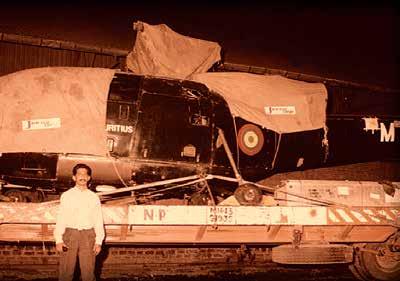
For over 125 years, Jeena & Company has set the gold standard in logistics and freight forwarding.
As the first Indian-owned enterprise in this sector, Jeena’s legacy is defined by transformative achievements—serving as the pioneering clearing and forwarding agents for the Indian Armed Forces and managing extraordinary cargo such as live human organs and rally cars. These milestones exemplify their relentless pursuit of excellence and innovation.
Jeena & Company’s comprehensive logistics solutions encompass air, sea, and over-dimensional cargo movement, customs clearance, project cargo handling, and multimodal logistics. With expertise in critical logistics—handling time- and temperaturesensitive cargo—they serve industries ranging from Pharmaceuticals and Chemicals to Automobiles, Engineering, and Fashion. Every operation underscores Jeena’s commitment to precision, reliability, and efficiency.
Aligned with the Atmanirbhar Bharat vision, Jeena & Company is a vital partner in advancing India’s Defence and Aerospace ambitions. Over the past year, Jeena has forged strategic collaborations with Defence Public Sector Undertakings (DPSUs) like Hindustan
(Left)
From Port Louis, Mauritius to HAL, Bangalore via Mumbai: Jeena & Company Delivers Excellence in Aviation Logistics; (Right)
Jeena's Defence Head, Cdr Shrawan Kapila, and Partner, Cyrus Katgara, joined by Keku Bomi Gazdar.
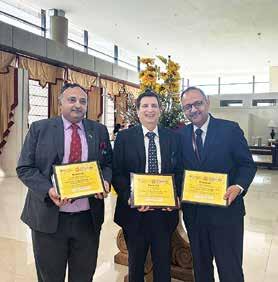
Shipyard Limited, as well as MSMEs and start-ups, driving innovation. Their extensive global network ensures secure and seamless cross-border operations, anchored by strict compliance, safety, and confidentiality standards.
Recognizing the pivotal role of MSMEs and startups in India’s Defence ecosystem, Jeena goes beyond logistics to provide strategic guidance and customized solutions. By empowering these enterprises, they contribute to their growth and India’s self-reliance in Defence manufacturing.
Innovation remains Jeena’s cornerstone. From serving as Tata Airlines’ first booking agent to introducing air cargo consolidation in India, Jeena continuously redefines industry benchmarks. Today, they manage air charters, exhibitions, and complex project cargo with seamless door-to-door solutions for imports and exports.
Jeena & Company operates with unwavering integrity and an enduring commitment to excellence. Guided by a proud legacy, Jeena & Company delivers cutting-edge logistics solutions that empower India’s Defence and Aerospace sectors. Together, Jeena is shaping a future defined by resilience, innovation, and unparalleled service, promising Service Excellence. •

Asmall fishing trawler is out somewhere in the Arabian Sea, carrying men with arms out to destroy important targets on an Indian Harbour. As it nears its target, that if destroyed would be immensely damaging to the pride of a rising nation, well trained men launch a commercial drone with explosives, one of the few carried on the boat. The drone is still 2.5km away from its intended target, when a stream of 30mm shells on their multi-function display surprises the terror operatives and their display becomes black. Next, the terrorist’s fishing trawler, which has been shadowed from 20kms is engaged at 4km range. An accurate burst of 30mm shells from the same CRN-91 Naval Gun streaming across the bow of the target, gives a warning to halt or be destroyed. A likely scenario but an unlikely outcome with the present capabilities.
However, now this has been made possible by the Merlinhawk Aerospace Pvt Ltd’s homegrown Universal Electro Optical Fire Control System (EO-FCS) for the Indian Defence Forces. This was achieved with Ordnance Factory Medak (OFMK), now Armoured Vehicles Nigam Ltd.
Universality of Merlinhawk’s EO-FCS. While the project was for CRN-91 30mm Cannon & Turret, inci-

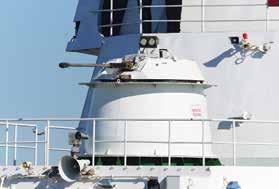
dentally the Naval Version of the BMP-2 Sarath Infantry Fighting Vehicle, it is universal in nature. This means that the homegrown EO-FCS can be used with any direct firing weapon for Ground or Aerial targets both, from 7.62mm to 155mm with just modifying the System Control Unit and other parameters as required in tune with the ballistics of the calibre of the gun.
Merlinhawk Aerospace Pvt Ltd., with this success, remains dedicated in providing Atmanirbhar solutions to Ministry of Defence. •

Navantia is a Spanish strategic defence and technology company, mainly specialised in shipbuilding (surface and underwater), design and integration of complex systems with a high technological content, life cycle support and high value-added services.
The principal advantage of Navantia, achieved with many years of experience and clients, is the flexibility to adapt to different requirements of the client, both technical and commercial, as well as the capability to offer global solutions throughout the entire life cycle of all its products - ships, systems, propulsion and energy; providing engineering capability, transfer of technol-
S-80 Submarine for the Spanish Navy
ogy and technical assistance to its clients in every part of the world
Navantia is currently working on the S-80 submarines programme for the Spanish Navy. It has entirely designed and is building four units, the first one already in service. This is an exceptional 3000 tons submarine provided with a revolutionary third generation AIP System, being proposed as baseline for the future P-75(I) submarine project in India.
The S-80 programme is conceived as one of the most advanced conventional oceanic submarines, with an outstanding combat system, enhanced indiscretion rate thanks to a next generation AIP (Air-Independent
Propulsion), a unique technology based on a bioethanol reformer, that will result in a substantial extension of its submerged range and thus in increased stealth. In addition, the submarine can be operated by a reduced crew without reducing its capabilities
Also, Navantia has contracted five F-110 frigates for the Spanish Navy with new and state-of-the art frigate design, which incorporates cuttingedge technologies, innovations and developments for further crew reductions, low life cycle cost and high level of survivability.
The F-110 frigates are multipurpose and versatile escort ships, with anti-aircraft, anti-surface, and anti-submarine capabilities to perform their force protection and naval power projection duties, in combination with other units, that can also perform functions related to maritime security and support to civilian authorities. The frigates, whose first unit is under construction, will incorporate a digital twin, a virtual replica of the ship that constantly receives information from the vessel.
In the international market, Navantia has commercial delegations in Norway, Turkey, India, Canada, the Middle East and subsidiary companies in Australia, Saudi Arabia and UK, which serve as a lever to strengthen collaboration agreements with local industry in these countries.

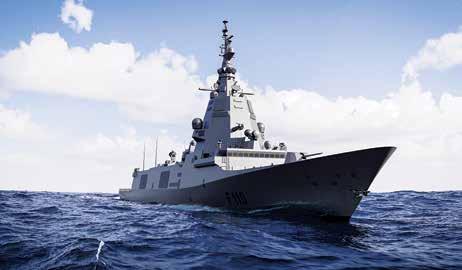
Regarding exports, Navantia has just started a second batch of three 3000 tons light frigates for the Saudi Arabian Navy, that will add to the five units already built and commissioned in the last four years, as a consequence of the excellent results of the programme.
Also, Navantia has contracts with the Moroccan Navy, for whom it is building a patrol boat; with the United Kingdom, for the construction, in consortium with BMT, of three logistics ships for the Royal Fleet Auxiliary; and has an agreement with the Saudi Navy for future contracts.
Finally, it strengthens its commercial activity in various countries, such as Turkey, not only for the construction of a second LHD, but also for future frigate and submarine programs. Likewise, the S-80 submarine is a very interesting product in the international market. Countries like India, Canada, Poland, or the Philippines have shown interest in the Spanish submarine. In Poland, the shortlist is expected to happen during the next months. Canada has just sent the RFI and Navantia can confirm that they will participate in the tender.
(Top)
Al Jubail Corvette for the Saudi Arabia Navy;
(Above)
F-110 frigates for the Spanish Navy.
Navantia is not only a reference in the design and construction of state-of-the-art ships, but also develops high value-added services in order to offer an integral service to the clients.
NAVANTIS is an example of this kind of services. It is a step beyond in ship training solutions and a bet to consolidate ship training needs in a single product. From already existing Platform Control simulators, mainly focused on crew engineers training, Navantia has extended the capabilities towards bridge pilots’ world, providing an overall solution for both kinds of crew members to face training scenarios together during the same sessions.
Furthermore, unlike other existing bridge simulators in the market, NAVANTIS runs on a generic modular hardware, based on an extensible touch surface that lets the use of the same bridge training room for multiple boats just by running specific configuration software. •



Sanathan Allied Industries (SAFESURE RUNFLAT SYSTEM) was established in 2008 to provide an indigenous source for design, development and manufacturing of Runflat, Bead lock systems in India and as a quality alternative supplier of Runflat and Bead lock system to the world.
SAFESURE Runflat systems and beadlocks are suitable for combat and non-combat vehicles, from 4000 Kg GVW to 78000 kg GVW used for continuous mobility of armoured and VVIP vehicles.
SAFESURE RUNFLAT SYSTEM are the first indigenous Runflat manufacturer for Indian Mine Protected vehicle YukthiRath manufactured by VFJ Jabalpur, added to this We serve OEMs likes of Ashok Leyland, TATA, Mahindra and Bharath Forge that manufacture Mine Protected, Bullet proof vehicles.
(Left Top) Safesure Runflat System;
(Left Middle) Safesure Runflat Wheel Assemblies;
(Left Above) Safesure Bead Lock System;
(Right Top) With Out Runflat System;
(Right Above) With Runflat System (Safety & Security).
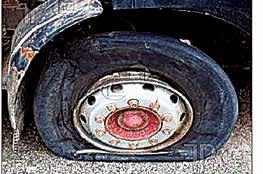
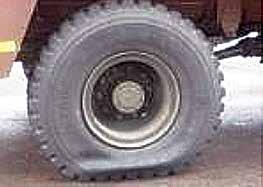
At SAFESURE, innovation and technology are paired together to deliver cost-effective, application suitable, reliable, and high-performance products. SAFESURE Runflat Systems and bead locks complies with NATO and FINABEL (20.A.5) standards and are approved by Armoured Vehicle Nigam Ltd Ministry of Defence (GOI) after required Ballistic and Field Trials. Our products were tested successfully against Armor Piercing Rounds B32 (HP White USA) and Splinter Hand grenade for Ballistic Resistance. Every SAFESURE Runflat Systems and bead locks passes through stringent quality control procedures at each level of production to assure products of highest quality reach customers.
Our Product performance is superior to our Global peers, Our runflats are supplied to more than 30 countries. •

Troop Comforts Limited (TCL) is one of the seven new Defence Public Sector Undertakings, 100 per cent owned by the Government of India under the aegis of Department of Defence Production, Ministry of Defence. Commenced its business activities as DPSU w.e.f. October 1, 2021 with its corporate office at Kanpur (Uttar Pradesh), TCL is one of the leading Indian manufacturers of troop comfort items, military gears and other personnel protective equipment required by Indian Armed forces.
Units & Product Profile
Troop Comforts Limited comprises of 04 dedicated
Chief of the Army Staff (COAS) General
Upendra Dwivedi visit to TCL HQ
state-of-the-art manufacturing units and 01 training academy in different geographical locations across India.
Unwavering commitment of Troop Comforts Limited (TCL) lies in providing highest standards of troop comfort items, which are meticulously tailored to cater the specific needs. All the TCL units are having prestigious certifications such as ISO 9001:2015 (Quality Management), ISO 14001:2015 (Environmental Management), ISO 45001:2018 (Occupational Health and Safety), and ISO 50001:2018 (Energy Management).
TCL leverages cutting-edge technology to ensure precision and efficiency. State-of-the-art CAD/CAM system coupled with around 7000 nos. of Industrial Sewing machines ensures precise fabric cutting for meeting the exact dimensions in the finished products. This combination allows TCL to produce a staggering 60 lakh clothing items annually apart from having dedicated infrastructure for the manufacturing of variety of Blankets, Boots, Jerseys etc.
Beyond production prowess, TCL has further strengthened its R&D initiatives through collaborations with renowned research and academic institutions like, IIT Delhi, IIT Madras, CLRI Chennai, and NIFT Delhi thus promoting the vision of Atmanirbhar Bharat in Defence.
Indigenisation Efforts:
TCL's dedicated R&D team is continually working in developing indigenised versions of imported troop comforts items being imported by the Indian Army at present such as:
• ECWCS (Extreme Cold Weather Clothing System)
• Multipurpose Boots & Boot Crampon
• Modular Gloves
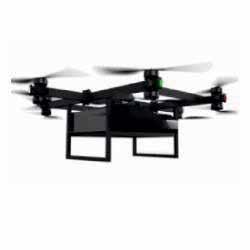


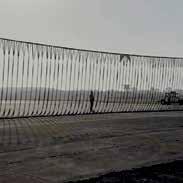
• High-Altitude Mountaineering Equipment (Karabiners, Rock & Hammer Pitons)
Samples of Boot Crampon were submitted to Army Headquarters for user trials and evaluantion and the same have been found satisfactory in the user trials. Therefore the item has been successfully indigenised by TCL.
TCL has taken pro-active action for investment in modernsation of existing facilities, diversification of TCL products for new business and developing capital infrastructure with a vision to create state-of-the-art facilities equipped with high end technology.
• Post corporatisation, TCL has already taken decision for investment of `52 crore on Capex exclusive for Plant & Machinery and already invested `16 crore approx. on Capex Expenditure.
• Further, for next five years, investment has been planned for `240 crore. In the area of modernising Plant & Machinery, In-house Reasearch & Development & diversification.
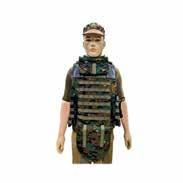
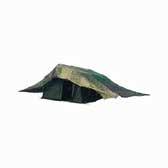

In response to the rapidly evolving market landscape, TCL has identified to diversify its customer base beyond its current customer profile, which include the Indian Defence Forces, MHA forces, and various State Police forces. As a strategic move TCL has ventured into the commercial market with the introduction of its new brand, ‘TROOPS’.
TCL Corporate office has implemented the policy of Corporate Social Responsibility with the concept where businesses integrate social and environmental concerns into their operations and interactions to the penurious. It involves practices that benefit society beyond maximising profits, encompassing areas such as environmental sustainability, philanthropy, ethical labor practices and community engagement. By embracing CSR, TCL contributed positively to the society by donating the amount of `45 Lacs approx. during the year 2022-23 for providing mid-day meal to the poor & needy children in association with ‘Akshaya Patra Foundation’. •
Yugoimport–SDPR was founded 75 years ago as the state-owned company fully authorised and supported by the Government to deal in foreign trade of armament and defence equipment. The one thing that has not changed from the early beginnings to the present day is the quality of the products and services that Yugoimport–SDPR is able to offer to its customers and end users. The quality of the material and our tailormade approach to customers is the key to the rock-solid foundations of the Company.
The business mission of an integrator that promotes and sells defence products on the world market is extended to include the development & production of modern complex artillery systems and combat vehicles, with new advances in the field of unmanned aerial vehicles, guided missiles, cyber security and other cutting-edge technologies that contribute to a better position of our country in the world.

Development of complex combat systems requires intensive research, knowledge and analysis of global solutions for similar-concept combat systems that could help us find the optimum design and analogous tactical and technical specification customised to each particular user, always in communication with the user’s representatives, employing all available technological resources of YugoimportSDPR and its local and foreign partners-subcontractors. This way, the Company has rounded off the entire technical and technological process, relying on its own resources.
Yugoimport–SDPR’s offer includes complex combat systems, primarily armoured vehicles. Following global trends, in cooperation with manufacturers of automotive components from the West (primarily
engine and transmission), from 2015 until today, we have developed two models of armoured vehicles 4x4 – Milos (14 t) and Milos 2 (18 t), two generations of 8x8 vehicles – Lazar (28 t) and Lazar 3M (28 t), as well as a completely new model – vehicle Lazanski (up to 36 t).
We are particularly proud of Nora artillery system that joined the global players in the field of artillery in the early 2000s, which makes us a completely equal competitor to the world’s leading manufacturers. The latest generation of this system – Nora B52 NG, with increased quantity of projectiles in the automatic loader ready for fire, is the most powerful, fully automated fire support artillery weapon in cal. 155 mm, with increased level of the protection.
The vision of Yugoimport–SDPR’s future is rooted in our in-depth business analysis, good market predictions and well-steered development activities. In view of this, the Company’s identity, as a recognised brand in many countries of the world, is synonymous with quality, continuity and loyalty. •







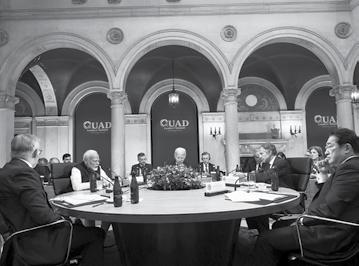
The global landscape is marked by dynamic shifts and uncertainty, as traditional geopolitical alliances and power structures undergo significant transformation. This evolving order presents challenges and opportunities, especially for historically marginalised nations seeking a greater voice in global affairs. Departing from established norms offers a chance to create more equitable and inclusive governance, fostering stability and fairness in addressing the complexities of this new era.
The Extant World Order and its institutions including the UN were put in place by the victors of the second world war. It suited and served a bipolar world, which was then dominated by the USA and USSR. This was also the time when colonial powers declined. Later, the breakup of USSR heralded the unipolar era of USA. The power of unipolarity enabled USA to tighten its global grip and virtually run the world as its policeman. It tweaked the world order to suit its interests. It then ushered in the concept and practice of globalisation. The turn of the century witnessed the ‘US enabled’ rise of China. Over the next decade and a half, China stopped hiding its strength or biding its time to assertively vie for bipolarity and began its attempt to establish an alternate world order. The turn of the century also saw USA getting enmeshed in the war or terror in Iraq and Afghanistan. It was also the period in which USA was expending its power as other nations like China and India were rising or like Russia were reviving. As they made their presence felt, the world transmuted into multipolarity. The multipolar world is now characterised by USA as the totem pole, challenged by a risen China and populated by lesser but important rising poles like India and Russia some middle powers and the Global South. This multipolarity is here to stay and is defining a new world. What Constitutes ‘The World Order’ needs clarity as it is often misunderstood. The term generally refers to the arrangement of power and authority that provides the framework for the conduct of diplomacy and geopolitics on a global scale. Often this framework is referred to as the ‘Rules Based Order’ which is effected through global institutions like the UN, its affiliates, World Bank, IMF, WTO and others. Many security and economic groupings NATO, OPEC, OIC, EU, ASEAN, BRICS, African Union and others are in some sense derivatives of the ‘World Order’. They have taken the essence of the extant order to suit local requirements and realities. These
groupings have enabled new security and economic architectures to come up. The ‘World Order’ as it exists is also the global prescription to maintain peace, justice, economic growth, equity, human rights, environmental conditions and sustainability. In essence it is an established global hierarchy in which the well set powerful nations rule the roost. The ‘World order’ as it exists is changing as a new one is on the horizon.
A ‘Black Swan’ Pivot and Two Fundamentals are changing the World Order. The ‘Black Swan’ Pivot around which the current ‘World Order’ started turning was undoubtedly the Covid pandemic. The pandemic which existed for two odd years changed the way people and nations exist and behave. It wrought many transformative changes in global behaviour. These transformations have been driving the world into a new order. Besides this, two fundamental factors which have always dominated the ‘World Order’ need discussion.
The First Fundamental is that traditionally, the ‘World Order’ has been the fief of rich and powerful nations. These nations derived power from their people, natural resources, industrialisation, economic and military prowess. That constituency is changing now as the erstwhile colonial powers like UK, France and Japan are declining and powers like China, Russia and India are rising to exercise their muscle. The change in the set of nations in the global hierarchy top will also change the ‘World Order’.
The Second Fundamental is the will of the people. It may seem strange but people have always guided the fate and direction of nations including those which govern the world. However, this aspect was never prominent till 2024. In this year of mega elections, more than 70 nations and more than half the world’s population voted for their governments. 2024 has seen a healthy dose of antiincumbency with a pronounced shift away from liberalism. People have put leaders and governments in place who have promised
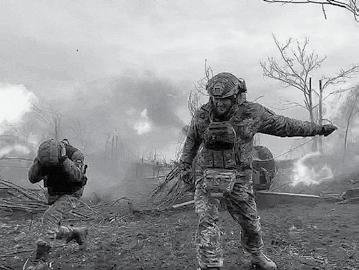
The Russian invasion of Ukraine in February 2022 has served as a global testing ground for the latest weapons and technologies and also a learning laboratory for the joint force across all levels of war—tactical, operational, strategic, and institutional—revealing lessons that certain fundamentals of warfare, such as the necessity of industrial capacity and raw firepower, remain unchanged
The Russia-Ukraine war has germinated from the seeds of deep historical antagonism, civilisational and ideological contestation and conflict of vital interests between Russia and the collective West. Russia perceives itself as a saviour of Europe, having resisted Mongol invasions in the 13th Century, Napoleon’s invasion in 1812, and Hitler’s invasion in 1941. Russia believes but for its sacrifices the geopolitical landscape of Europe would have been different. The narrative used to justify Russia’s broader geopolitical aims, to reclaim the former Soviet space, including territories like Crimea, and the more recent invasion of Ukraine, is that these regions are inherently Russian due to historical, cultural and linguistic ties. Additionally, in the security calculus of Russia, Ukraine and Belarus form a strategic buffer to address the vulnerability of the 500-mile-wide Carpathian gap, the historical route for invasions from Europe.
Donbas region. The Minsk Accords of 2014 and 2015 for conflict resolution were ineffective. Russia’s decision to invade Ukraine stemmed from the continued expansion of NATO, strengthening of military deployments along NATO’s Eastern flank, military support to Ukraine and economic sanctions by the West. However, Russia miscalculated the duration, course and complexion of war and its strategic consequences, as did Ukraine and its Western supporters.
After the breakup of the Soviet Union on December 21, 1992, Ukraine emerged as the bulwark of the US-led western strategy to attain a favourable balance of power for the Euro-Atlantic alliance. US assurances to accommodate Russia into Europe’s economic and security architecture did not materialise due to deep differences on both sides. Instead, a new Cold War manifested in the eastward expansion of the North Atlantic Treaty Organisation (NATO) and the European Union (EU) to amalgamate the Former Soviet Union States (FSUS) into the Western alliance ecosystem. After the Bucharest NATO Summit in 2008, when Russia perceived that its strategic interests in Georgia were being undermined by the US, it launched military operations in Abkhazia and South Ossetia. Unliteral abrogation of arms control and disarmament treaties and US-engineered Colour Revolutions further accentuated Russia’s fears of another balkanisation. In 2014, Russia claimed an ‘external hand’ in the Maidan uprising and launched grey zone military operations to seize control of Crimea and the
Russia’s military offensive, launched on February 24, 2022, had several politico-military objectives. These included: deterring Ukraine from joining the EU and NATO; foisting a pro-Russia regime on Kiev; neutralising Ukraine’s military; controlling the Black Sea and the Sea of Azov; establishing a secure land corridor to Crimea; and eliciting recognition of Donbas as an autonomous region. However, Russian planners underestimated the level of resistance they would face from the Ukraine Defence Forces (UDF) and Ukraine’s population, and the quantum of support Ukraine would receive from the West. Russia’s initial plan of capturing Kiev petered out by mid-March 2022. Russia quickly learned from its military outreach and soon pivoted to Donbas (Donetsk and Luhansk). Russia captured Mariupol by May and made slow progress in the Donbas. Severodonetsk fell in June. From July to August 2022, the campaign morphed into attrition warfare, resulting in a strategic stalemate.
Ukraine began receiving significant Western military aid, including HIMARS (rocket systems), modern tanks, AD weapons, Starlink satellite-based secure communication systems, drones, etc which improved its combat capabilities. A surprise Ukrainian counter-offensive led to recapturing swaths of territory in Kharkiv and southern Kherson region. The winter months saw incremental advances, mainly by Russian forces in Bakhmut, which was finally
COPY NOW!
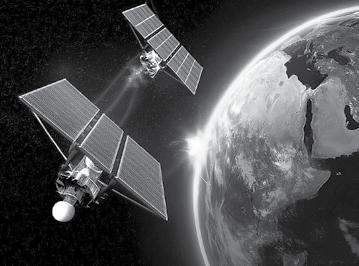
The space domain is fast evolving with significant changes technologically as well as doctrinally. Nations are seeking modern technologies in space. Today, space has integrated itself into our daily lives in a way that affects our everyday functioning.
Agrowing number of countries and commercial actors are getting involved in space industry. 35 nations have their own national space research institutions. The space has over 8,000 operational satellites orbiting Earth for various purposes including Intelligence, Surveillance and Reconnaissance (ISR), telecommunications, navigation, positioning, early warning, earth observation, meteorological and military etc. China has more than doubled its satellite from 350 in 2019 to 650 now. US has close to 6,000 satellites (including mega constellations by Elon Musk owned SpaceX). All this is resulting in more benefits on Earth, but also more congestion and competition in space.
In the military domain, utilisation of Space-based assets has revolutionised warfare by enhancing our capacities in ISR, communications, early warning, weather forecasting and navigation. An increasing number of countries are looking to use space to enhance their military capabilities and national security. Societies are increasingly dependent upon geospatial applications employment of counterspace capabilities by any nation is likely to have global consequences beyond the military, into global economy. This is making the space highly contested. Nation’s interests in space have to be protected from space based threats of hostile action by adversaries using counterspace weapons.
China’s increasing capabilities in outer space
The US leads the tally of currently deployed satellites in space with specific applications for government, civil industry, commercial purposes, research projects and military applications, China has been leaping forward in enhancing its space capabilities. It has undertaken 45 launches in 2020 (despite the Covid pandemic), 54 in 2021 and 64 in 2022; in 2023 67 launches, including 17 by its private entities, thereby putting more than 200 satellites in various orbits. In 2024, it has undertaken more than 60 launches. China today has more than 250 military satellites utilised for ISR, ELINT,
PNT and Communication purposes.
Since 2014, China’s State Council opened up its private sector to participate in space ecosystem. Now it has come out of its infancy, with rapid growth witnessed in last five years in various segments. Some 300 private space companies have now been registered in Chinese space ecosystem.
Chinese private space sector is buzzing with activity essentially due to heavy investment contributed by the government; an opaque ToT in various field from the government agencies to private sector; and most significantly the encouragement being offered by the state governments in terms of land, infrastructure and ground facilities. Also, China’s emergent space capabilities have led it to become a leader in aspects of research and development (R&D) as it seeks to leverage these capabilities to support its military, economic, geopolitical and societal development objectives.
China as the most assertive player in the space sector has a well laid out plan to dominate outer space. It is systematically accelerating the development of key capabilities in outer space. It has embarked upon asteroid mining, having a stabilised Beidou PNT system as a rival to the US GPS constellation. Tiangong space station, launched into LEO in April 2021 has since hosted twelve separate astronaut crews, it has plans of doubling the size of Tiangong space station over next two years to be able to undertake over 100 scientific research operations in orbit. In addition, China has successfully collected Lunar material in 2020 with its Chang’e-5 mission, landed its Zhurong rover on Mars in 2022. It has bold lunar plans, along with Russia it is jointly working to build the International Lunar Research Station (ILRS), a scientific experiment base on the moon.
China seems to be making tangible as well as symbolic gains in space domain. Its sole objective as declared earlier is to bolster the country’s comprehensive national power, “To explore the vast cosmos, develop the space industry, and build China into a space power is our eternal dream.”
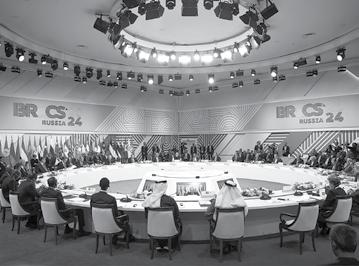
The BRICS bloc is rewriting the global power script. With its expanding membership and ambitious plans to challenge the US-led financial order, BRICS is evolving into a credible alternative to the G7. Its efforts to counter neo-colonial exploitation and dollar dominance are beginning to reshape the world’s economic and political landscape.
BRICS is on a roll.
The threat from this emerging bloc must be real and credible enough for President-designate Donald Trump to threaten it unequivocally with 100 per cent tariffs if they float an alternative BRICS currency which challenges the unchallenged hegemony of the US Dollar as the global reserve and preferred exchange for trade and commerce. The grouping of some of the most populous emerging economies of the so-called Global South appears to gather winds in its sails. Nine nations from across continents such as Belarus, Bolivia, Indonesia, Kazakhstan, Cuba, Malaysia, Thailand, Uganda and Uzbekistan have confirmed readiness to join the grouping as ‘BRICS Partner Countries’.
With nine member countries and nine partner countries effective January 1, 2025, BRICS accounts for over half of the world’s population and 41 per cent of the global economy. That’s a credible challenge to the G7 grouping that accounts for 10 per cent of the world’s population but 45 per cent of the global economy, as the western nations face economic and population decline that appear irreversible in the foreseeable future.
The G7 versus BRICS matrix brings up a question. Why does the developmental divide persist even after colonialism ended by the 1960s after WWII and the Cold War in 1991? Are the prosperous North more resource-rich, more hardworking and more industrious than what is loosely called the Global South? How have the former colonial powers and the new-age hegemon, the US, continued to prosper when exploitation and extraction from the colonies presumably should have come to an end with the end of colonialism?
Some of the answers to these profound questions are coming to the surface. There can be a range of reasons for the emerging economies of the Global South to have remained poor despite
being resource-rich and despite being populated by hardworking masses. Three major external factors have had the most pernicious impact on their growth; financial loot perpetrated through offshore tax havens established mainly by the British, Switzerland and others; resource loot through exploitative arrangements entered by France while exiting its colonies in Africa, and by the US and its allies in countries flush with oil and minerals; and finally the financial system of petrodollar as the global reserve currency operated and muscularly protected by the US through the Bretton Woods institutions and through direct wars, assassinations, engineered regime changes, coups and coloured revolutions.
Colonialism graduated into neo-colonialism, changing little in terms of the exploitation of native populations. The coups in Africa and the anti-French sentiments sweeping the region are a stark pointer to the extractive arrangements that France established through the Franc CFA (French Colonies in Africa) since 1945. With binding and exclusive rights to exploit the strategic mineral of these countries, France imported uranium, cobalt, oil and gold not in US dollars or euros which it has to earn but in Franc CFA which it prints for these countries. In a sense, France got these resources almost free. The US took on a central role in the practice of neo-colonialism when it virtually took control of oil in the Middle East through the introduction of the petrodollar since July 1974.
TO READ THE COMPLETE ARTICLE
The US delinked the dollar from gold in August 1971 going back on the commitment that had been the foundation of the international monetary system created in 1944 at Bretton Woods establishing the World Bank and IMF. The petrodollar system allowed the US to export dollars to the world by purchasing oil, manufactured goods and commodities, and other countries return to the US by purchasing American weapons, American monopolised InfoTech
GET YOUR COPY NOW!
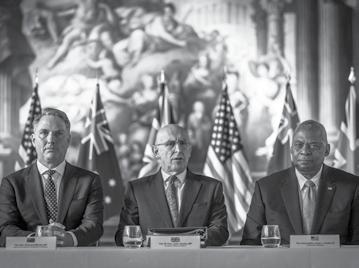
AUKUS envisages trilateral cooperation amongst the AUKUS members in developing ‘joint capabilities and interoperability’ across a wide spectrum of critical technologies. However, what is the progress made by AUKUS, the motivation behind its creation, its implications on regional security and will India will benefit from this arrangement?
On September 15, 2021, the leaders of Australia, UK and the US, Prime Minister Scott Morrison, Prime Minister Boris Johnson and President Joe Biden issued a joint statement announcing “the creation of an enhanced trilateral security partnership called AUKUS- Australia, the United Kingdom and the United States”.
The statement spoke of strengthening the ability to support each other’s defence and security interests, and stated that “as the first initiative under AUKUS…we commit to a shared ambition to support Australia acquiring nuclear powered submarines for the Royal Australian Navy.” This capability, restricted to conventionally armed nuclear powered attack submarines (SSN) will not include strategic nuclear ballistic missile platforms (SSBN). The statement also went on to highlight trilateral collaboration focussing on “cyber capabilities, artificial intelligence, quantum technologies, and additional undersea capabilities”.
However, the latter part of the statement pertaining to technology development got lost in the din that followed the announcement of nuclear submarine cooperation amongst these three countries. France was the first to react, as its lucrative order to build 12 Short Fin Barracuda class diesel-electric submarines in Australia was cancelled. This should have not come as a surprise as the programme was multiplying in cost without adequate outcomes on ground, and was also facing extremely critical political and media scrutiny in Australia. In a fit of pique, France went to the extent of withdrawing its Ambassadors in Canberra and Washington DC. Fortunately, within a year, things were back to normal and even the AustraliaFrance-India trilateral which had got temporarily derailed, regained track. China, as is its wont, went to town with its propagandist media declaring that AUKUS is a direct provocation and warned of a nuclear arms race in the region. The Chinese Foreign Ministry spokesman said that it “seriously undermines regional peace and stability and intensifies the arms race”, and its embassy in Washington spoke of a
“Cold War mentality and ideological prejudice”. It likened AUKUS to an ‘Asia-Pacific NATO replica. Reactions from other nations were more muted, though largely positive, with some countries expressing concerns about nuclear proliferation, and others choosing to remain silent. However, it was the secrecy with which such a major arrangement had been negotiated that elicited universal surprise and wonder in all quarters. Till it was officially announced in September 2021, there had been no indication that it was in the offing.
The outline of the AUKUS trilateral began taking shape soon thereafter. In March 2023, the heads of the three governments, President Joe Biden, Prime Minister Rishi Sunak and Prime Minister Anthony Albanese met again in Washington DC to finalise the way ahead, which has been termed the ‘Optimal Pathway. More recently, on April 8, 2024, the Defence Ministers of the three AUKUS nations met to take stock and issued a Joint Statement highlighting “the progress our nations have made, both to deliver the capabilities and to deepen our work on other advanced capabilities”.
This article will examine the progress made by AUKUS, the motivation behind its creation, its implications on regional security and finally, whether India will benefit from this arrangement?
The AUKUS arrangement has been compartmentalised under the following two broad pillars.
Pillar 1 is primarily aimed at developing nuclear submarine capability for the Royal Australian Navy. At the time of the inception of AUKUS, it had been decided that, by March 2023, an ‘Optimal Pathway’ would be finalised. This has happened on schedule, and envisages a calibrated multi-pronged approach towards delivering a complete SSN build and sustain capability to Australia in the following three steps:
n The first phase which began in 2023 includes visits by US SSNs to Australia, the training of Australian industry workers and
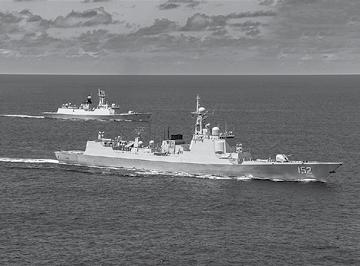
Chinese activities continue to impinge upon Indian security interests in the Indian Ocean Region (IOR) impacting maritime military security issues between India and China
The deep sense of distrust between China and India after the 1962 War and the vexed relationship between the two countries today presents uncertainties and challenges in the future, as both rise in economic and military stature. The rapid growth of China’s maritime military might along with other components of its comprehensive national power, notably its rapid strides in cyber, space and other high-tech domains betrays its expansionist and coercive intentions in the future. And that future may not be too distant.
consider whether or not India should be concerned about them and if so, whether enough is being done to offset the future threats that they could pose to India’s maritime and military security.
It is, therefore, necessary to present the maritime military security issues between India and China in perspective, especially Chinese activities that impinge upon Indian maritime security interests and recommend the absolute essentials that must find their way into any present or future China strategy formulated by India.
It is obvious that developments in the maritime space do not often get the attention that is given to terrestrial happenings because people live on land and the oceans are alien space for most of human beings. This has been a historical affliction with India, which is sometimes termed as ‘sea-blindness.’
Fortunately for India and the Indian Navy, there is realisation that the maritime domain will gain pre-eminence for resources and competition in the coming decades and that the Blue Economy will be an essential component of the Indian growth story. The rapid growth of Chinese military power, particularly that of the PLA Navy, has also been noted with concern because of the maritime forces it could bring to bear in the Indian Ocean Region and put Indian naval forces under stress. However, this realisation is not enough unless it is backed by swift and robust action to contain the rising asymmetry of combat power between the Chinese and Indian maritime components and shifting material focus to the East.
Before attempting to outline the essentials of India’s China strategy in the maritime domain, it will be appropriate to briefly describe the major military and non-military Chinese activities in the maritime spaces of the Indian Ocean Region for the nation to
The PLA Navy has seen exponential growth over the past two decades or so and is today the largest Navy in the world with 370 warships and submarines. This number is projected to grow to 435 by 2030. Their rate of production of warships and capability to reverse engineer high-end military hardware is difficult to be matched by the Indian defence industrial complex and hence the force level differential with India is likely to rise in the future. Additionally, the PLA Navy has operationalised two aircraft carriers and will soon have a third, larger and more potent, carrier. Their naval modernisation has three objectives – first, to bring force to bear on Taiwan and US-led forces in a crisis; second to enforce their ambitious maritime claims by sheer force and third, to project power beyond their primary areas of interest including the Indian Ocean Region. It is a matter of time before a PLA Navy Carrier Task Force ventures into the IOR.
Since 2008, when anti-piracy patrols began in the Gulf of Aden, the PLA Navy has maintained a constant of presence of three to four major warships including a tanker in the Gulf of Aden. This presence doubles during the turnaround period of their anti-piracy escort force. It has also been observed that the ships, at times, proceed on overseas deployments further West, on completion of their anti-piracy duties. A likely future scenario could be a constant presence of six to eight major PLA Navy units in the IOR, with a surge of maritime forces through the eastern choke points, which could include a carrier task force and nuclear/conventional submarines. As has been stated by several experts in strategic and military discussions, collusion of Pakistan with China in any conflict scenario
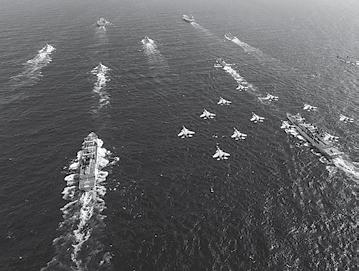
The most important commodity transported through this region is oil, catering mainly for the energy needs of China, Japan, and South Korea
The South China Sea is an enclosed sea, whose average depths are about 1,200 metres with large parts being less than 100 metres. It contains more than two hundred small islands, rocks, and coral reefs, only about three dozen of which are permanently above water. The South China Sea connects the Western Pacific to the Indian Ocean via the Malacca, Sunda, Lombok, and Makassar Straits, through which passes more than half the annual global merchant traffic in tonnage, comprising an approximate value of $3.37 trillion. The most important commodity transported through this region is oil, catering mainly for the energy needs of China, Japan, and South Korea. Connectivity of the South China Sea to the Pacific Ocean is equally restrictive, being largely through the Luzon and Taiwan Straits.
Vietnam claims full sovereignty over the Paracel and Spratly Is; Philippines asserts ownership of the Spratly archipelago and the Scarborough Shoal; Brunei and Malaysia claim sovereignty over the southern parts of the sea and some of the Spratly Is; and Indonesia contests the nine-dash map as it impinges on the EEZ accruing to it from its Natuna Is (which lie outside the nine-dash line). Most maritime nations across the globe do not officially align with any of the claimants and propagate the freedom of navigation and over-flight in the South China Sea, and settlement of the conflicting claims in accordance with UNCLOS. While all claimant countries have taken pro-active actions to occupy various islands, China has used its growing maritime power to obtain a stranglehold on large parts of the disputed area.
The South China Sea is assessed to have a rich trove of mineral and non-mineral resources with estimates of 11-12 billion barrels of oil and 190 trillion cubic feet of natural gas deposits, thought to lie mostly along the margins of the sea, rather than under or near disputed islets and reefs. Of the total estimated reserves, only 100 billion cubic feet of proved and probable reserves of natural gas lies in fields near the Spratly and Paracel Islands (Is), which are at the heart of the South China Sea dispute. A substantial amount of money has been invested by stake-holder nations in oil and gas exploration, with the China National Offshore Oil Corporation (CNOC) alone having invested $20 billion. This is also one of the most fished waters, amounting to 10 per cent of the total global production, with catch now dropping because of over-fishing. In fact, since 1999 China has started enforcing an annual fishing ban between May 1 and August 16, up to the 12th Parallel. This includes the Spratly and Paracel Is and is seen as another way of enforcing China’s sovereignty over the South China Sea.
The South China Sea holds geostrategic and geoeconomic criticality for East Asian and Southeast Asian countries, most of them being either enclosed or fronted by this water body. Not surprisingly, this region is mired in territorial disputes. While China and Taiwan lay historical claim to more than 80 per cent of the South China Sea,
Shortly after its establishment the People’s Republic of China (PRC) became acutely aware of its disadvantage in maritime geography, its coastline being enclosed by island chains under the sovereignty of other countries in the region, which restricted its free access to the open oceans. Its limited natural resources and arable land, combined with a large population, also meant that it was dependent on imports for critical commodities. These shortfalls played a central role in shaping China’s island-grabbing and island-building spree in the South China Sea. China commenced its campaign with the conquest of islands close off its coast held by ROC forces (based in Taiwan), which it apprehended could be used as a springboard to attack the mainland. The capture of Hainan Island in 1950 was the first step, the island being quickly transformed into a major naval base with an airstrip. Woody Island, the largest island in the Paracels, was next to be occupied in 1955, where again a naval base and runway was established, thereby extending China’s reach farther into the South China Sea.
The early 1970s saw the next major steps by China to claim islands in the South China Sea. Taking advantage of its rapprochement with the US in 1971, the reduced US military assistance to
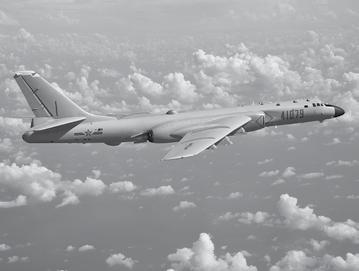
Unification of Taiwan is central to China’s core interests, not only because of the salience it holds in its domestic politics, but also because of the implications it has for a rising China’s broader strategic aims
The rugged and mountainous island of Taiwan, named as Ilha Formosa (the beautiful island) by the Portuguese four centuries ago, lies 160 km off the southeastern coast of China in an almost north-south orientation. In addition to the main island, Taiwan has suzerainty over 22 islands in the Taiwan group and 64 islands in the Penghu (Pescadores) archipelago. Other island groups controlled by Taiwan – Kinmen, Matsu, Wuqiu, Tungsha/ Dongsha and Nansha – lie close off the Chinese coast and have witnessed armed attempts to take them over by China in the 1950s, with one island group, the Dachen, being annexed by China in 1954. Roughly the size of Netherlands, it is almost 395 km long and 145 km across at its widest point. Geographically, one-third comprises densely populated western plains, with the balance two-thirds being a sparsely populated mountainous interior, which slopes sharply towards the east coast of the island. Its rich volcanic soil makes it fertile for agriculture. The island also possesses mineral resources such as coal, sulphur, iron, jade, opal and coral. Taiwan is bounded to its north and northeast by the East China Sea and Japan’s Ryukyu Is. To the east is the expanse of the Pacific Ocean and to the south is the Bashi Channel, which separates Taiwan from the Philippines. To its west is the 180 km-wide Taiwan Strait, which separates Taiwan from the Chinese mainland.
In 1622 Dutch naval forces captured the Pescadores archipelago, but in 1624, signed an agreement with the Chinese Government to evacuate the archipelago in return for the right to settle on Taiwan. This marked the start of Dutch colonial rule in Taiwan, which lasted till 1662, when the Zheng dynasty evicted the Dutch and briefly established control over the island. It was the Qing dynasty that finally succeeded in capturing Taiwan in 1683, using its naval forces under the command of Admiral Shi Lang. However, Taiwan remained quasi-independent as the Qing Empire had other pressing issues to confront on the mainland.
China claims that the earliest reference to Taiwan is a historical record dating back to 206 BCE, which calls it the ‘Land of Yangzhou’, and that in 239 CE the Kingdom of Wu sent a 10,000-man expeditionary force to occupy it. Contemporary records indicate that Chinese settlement seem to have commenced around 1000 CE by the Haka people from northern Guangdong province, who moved to the island to escape persecution. In succeeding years, Taiwan became a refuge for migrants from the Chinese mainland, such as minority Hakka, Ming loyalists defying Qing rule, as also traders and farmers. It became a haven for pirates, traders and adventurers in the 15th and 16th centuries, the most powerful of whom was Zheng Chenggong, of Japanese descent.
As Chinese power declined in the 18th and 19th centuries, Japan rose as a major maritime power and inevitably came into conflict with China over control of Northeast Asia. In the war over control of Korea, then a Chinese protectorate, China’s Beiyang Fleet was comprehensively defeated in the Battle of the Yalu River by the Combined Fleet of the Imperial Japanese Navy on September 17, 1894, leaving the seas in control of Japan. The Japanese Navy thereafter occupied the Pescadores archipelago giving them control of the Taiwan Straits and a springboard to capture Taiwan. In the Treaty of Shimonoseki signed at the end of the war on April 17, 1895, the Qing Empire ceded the Liaodong Peninsula, Taiwan, and the Pescadores archipelago to Japan in perpetuity. Japan also annexed the Senkaku Is (known as Diayou in China). Massive reparations were paid by the Chinese to Japan, estimated to amount to over 13,500 tons of silver. The subjugation of Formosa (Taiwan) took another two years of bitter struggle for the Japanese, as Qing officials declared Formosa an independent republic to protest the signing of the Treaty of Shimonoseki. This move was to reflect in later Chinese history, as events today show.
Taiwan became a part of the Republic of China (ROC) in October 1945 in the terms of surrender after Japan’s defeat in World War II. However, after the communist take-over of China in 1949, the Government of the ROC fled to Taiwan, making Taipei its capital. The ROC occupied a permanent seat in the UN Security Council until October 1971, when it was replaced with the People’s Republic

As the industry evolves with new technologies, particularly autonomous shipping, it is crucial to understand the foundational legal frameworks to address the operational imperatives and implications of such advancements
Merchant shipping is the lifeline of India’s global trade, seamlessly connecting it with markets across the world’s oceans. There is an increasing trend in the global maritime industry to adopt autonomous ships powered by cutting-edge advancements in artificial intelligence (AI) and the Internet of Things (IoT). The interconnected nature of maritime trade necessitates that India aligns its maritime regulatory environment with international developments, ensuring seamless integration into the maritime ecosystem. This paper emphasises the need to develop a legal framework in India to address the issues emerging from autonomous shipping. By analysing the current legal landscape of traditional shipping the paper identifies legal gaps that must be bridged to effectively manage this transition.
The shipping industry is governed by a complex web of laws and conventions that aim to ensure the safety, security, and sustainability of maritime activities. Among the most foundational and influential is the United Nations Convention on the Law of the Sea (UNCLOS), the International Convention for the Safety of Life at Sea (SOLAS), the International Convention for the Prevention of Pollution from Ships (MARPOL), and the International Regulations for Preventing Collisions at Sea (COLREGS). UNCLOS, adopted in 1982, provides a comprehensive regime governing the world’s oceans and seas, establishing rules for their use and resource management. It contains numerous provisions requiring states to conform to applicable international rules and standards, particularly those set by the International Maritime Organization (IMO). SOLAS, first adopted in 1914 and last updated in 1974, sets minimum safety standards for ships and shipping, covering construction, equipment, and crewing requirements, as well as navigation, communication, and emergency procedures. MARPOL, adopted in 1973, aims to minimise marine pollution from ships, covering a
wide range of pollutants and requiring ships to carry pollution \prevention equipment and emergency plans. COLREGS, established by the IMO, sets rules for safe navigation to prevent collisions at sea, applying to all ships operating in international waters. In addition to these, the carriage of goods by sea is regulated by the Hague-Visby Rules (HVR), the Hamburg Rules, and the Rotterdam Rules. The HVR, adhered to by over 80 countries, requires carriers to exercise due diligence to ensure the ship is seaworthy at the voyage’s start. The Hamburg Rules extend this obligation throughout the voyage, while the Rotterdam Rules, though not yet in force, also mandate maintaining seaworthiness before and during the voyage. As the industry evolves with new technologies, particularly autonomous shipping, it is crucial to understand these foundational legal frameworks to address the operational imperatives and implications of such advancements. The existing laws and conventions ensure safety, security, and environmental protection, forming the basis for developing future regulations for emerging technologies in maritime operations.
Autonomous shipping represents a significant shift in the maritime industry, leveraging advanced technology to operate ships with minimal or no human intervention. The International Maritime Organization (IMO) classifies the degree of autonomy into four levels including ships with automated processes and decision support, where seafarers onboard control the ship with some automated decision-making assistance, remotely controlled ships with seafarers onboard to oversee operations, remotely controlled ships without seafarers onboard, and fully autonomous ships, capable of making decisions and determining actions independently. Critical operational imperatives include robust cybersecurity measures to protect against cyber-attacks, effective monitoring and control systems to ensure compliance with laws and regulations, and the necessity for human oversight to provide guidance and make
NOW!
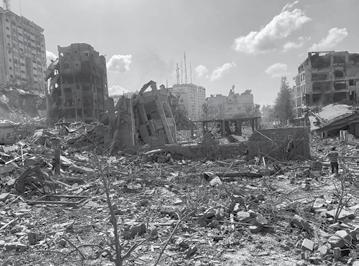
The year 2024 has proven to be a defining moment for the Middle East, as the region grapples with unprecedented challenges. The ongoing Middle East war has reshaped the region’s power dynamics. Israel’s unyielding actions against Iranian-backed proxies, including Hamas, Hezbollah, and the Houthis, have shifted the balance of influence, while new alliances and fractures in old ones leave the region facing an uncertain future.
Year 2024 perhaps has been one of the most difficult one for the West Asia or Middle East region and the world when immediately in the aftermath of the crippling pandemic the Eurasian and Middle Eastern wars have led to destabilising the so called rules based order and the multilateral system. Defiance of the international law became a norm not only by the super powers but also the middle powers. While the outcome of the Russia-Ukraine war could expedite the onset of Cold War 2.0 at least geopolitically, the ongoing Middle East war has changed the geo political and power balance in the region as was vouched by Israeli Prime Minister Benjamin Netanyahu at the UNGA and thereafter. This became possible due to Israeli unabashed and unremitting war on Hamas, Hezbollah and now Houthis – the proxies of Iran. Power dynamic in the region has changed drastically with Russia and Iran losing the most and USA in its international esteem and inability to restrain Israel from carpet bombing the civilians in Gaza. Turkey has also regained its influence with the demise of Saddam regime.
Shifting Sands of Geopolitics
and have engaged in direct attacks against each other in retaliatory strikes. Even Egypt and Ethiopia are threatening military action to sort out the water flow of Nile and Renaissance dam.
Middle East is replete with hotspots and smoldering conflicts which could any time escalate into a volcano. Post NATO intervention in 2011-12, divided Libya continues with its two governments and state of despair and instability. Yemen and the Houthis are causing havoc, after confronting the mighty regional power of Saudi and its Sunni coalition, but are also afflicting heavily the international shipping and maritime trade in the name of their solidarity with the Palestinians and Hamas in their war against the Israelis and their western benefactors. Iraq and Lebanon remain unstable. Sudan has seen millions displaced and thousands killed in a war between the two Generals supported by their own foreign benefactors from the region and beyond. Iran and Israel continue to engage in the Mutually Assured Destruction (MAD) syndrome
GCC countries comprising of Kuwait (current chair), Oman, Bahrain, Qatar, Saudi Arabia and UAE have become major drivers of the regional policy as they continue to try to work on regional stability and have also followed a pro-Palestine policy to keep the lid on the Arab street, but broadly have diversified and dehyphenated their policies as well. Post Hamas -Israel war of over 14 months – while they - except for Qatar and Egypt and Turkey and Iran, have had no love lost for Iran’s powerful proxies in Hamas (Gaza), Houthis (Yemen) and Hezbollah (Lebanon and Syria)were not averse to the idea of normalisation of ties with Tel Aviv in their diversified interests. The leadership in the Gulf countries would not mind if these 3Hs were decimated or decapitated by Israel but they did not bargain for such a long war of attrition of civilian casualties and carpet bombing of Gaza which reignited the Arab street sentiment thereby forcing them to refocus on the Palestinian cause. Saudi Arabia that like the UAE and Bahrain and Sudan and Morocco was almost ready to normalise the ties with Israel that became a major trigger for the Hamas to carry out the unprecedented terror attacks of October 7, 2023 killing some 1,200 and taking about 250 Israeli hostages of whom some 100 odd are still in the captivity of Hamas. Israel, which boasted of the best intelligence, technology and most powerful regional army was humiliated by these utter failures to keep a watch and prevent the incursion and terror attack by Hamas militias who partially achieved their objectives of reviving the Palestine cause and prevent further normalisation of ties between the Arabs and Israelis especially Saudi Arabia which would have killed the very cause or relegated it to the lowest priority level had the leader of Muslim and Sunni world also established diplomatic ties with the Jewish state like the Abraham Accords.
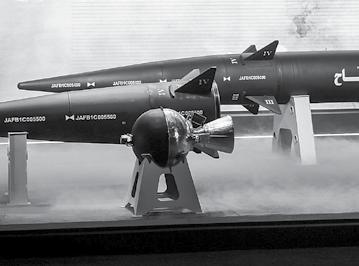
The Middle East, a region steeped in history and conflict, finds itself at another critical juncture in 2024. The Israel-Hamas conflict reignited deep-seated tensions, drawing regional powers and global stakeholders into its orbit. Amid shifting alliances and enduring rivalries, the actions of key players like Iran, and Türkiye continue to shape the region’s volatile future.
As the first quarter of the twenty-first century is close to an end, the Middle East remains mired in a turmoil that seems eternal and unending. The political problems in the region go back to the end of the Ottoman Empire in the early twentieth century that has kept the region in turmoil ever since. The political divisions rooted in the socio-economic challenges often manifest through violent eruptions and conflicts causing humanitarian crises. The human and material consequences of the turmoil in the Middle East have faced shockwaves throughout the world. The region remains divided into camps with Israel, Iran and Türkiye along with a fragmented Arab world forming the four major blocs. The United State remain the most influential and dominant international power despite China emerging as a distant competitor and Russia continuing to remain at odds with the former. In the given geopolitical situation, the future of the Middle East will depend on how the relations between the international super powers, namely the United State and China, shape in the near future. What is of greater importance, however, is the actions of regional actors, especially the non-Arab powers, Israel, Iran and Türkiye as the Arab states remain relatively militarily weak and intent on a reconciliation with Israel with help from the United States. This means how Iran and Türkiye respond to the developments in the Middle East will have a decisive impact on whether the region can hope for a stable and prosperous future or is heading towards a continuation of the turmoil that has kept the region preoccupied for decades.
the Gaza Strip witnessed one of the worst years of bombings and Israeli military assault since the outbreak of the IsraeliPalestinian conflict after the World War II. As of December 2024, nearly 45,000 casualties have been reported in the tiny enclave of the Gaza Strip which is one of the world’s most densely populated areas. Besides, hundreds of thousands of Palestinians residing in the Strip have been injured or maimed while nearly the entire 2.2 million population has been displaced. The continuation of the war between Israel and Hamas also meant that the humanitarian situation in the Gaza Strip has worsened with no food, water and medical supplies allowed inside the besieged enclave, except the humanitarian aid being allowed through Egypt under strict Israeli scrutiny. Israeli military has also been accused of committing war crimes, targeting civilians, especially children, and following a policy of “ethnic cleansing” and “genocide.”
The Middle East once again plunged into a conflict due to the eruption of the Israel-Hamas War as a result of the Hamas and Palestinian Islamic Jihad (PIJ) attack in Israel on October 7, 2023. The Israeli decision to launch a full-fledged war targeting Hamas military and political organisation and infrastructure meant that
The Gaza War led to involvement of other regional actors in the military conflict with Israel on behalf of the Palestinians. While the Arab states criticised Israel and condemned its military actions targeting unarmed population and civilian infrastructure, Türkiye was more vehement in condemning Israel and calling for international action to end the war and prevent the annihilation of the Gaza’s population. On the other hand, Iran and its regional allies—the non-state actors, often considered as Iranian proxies—joined the war against Israel. Hence, the Israel-Hamas war widened to become a regional conflict between Israel and Iran and its proxies. Besides Hamas, Hezbollah in Lebanon proactively engaged in targeting Israel from the north. Similarly, the Ansarallah (Houthis) in Yemen targeted Israel through drones and missiles. The Yemeni militants also attacked international shipping in the Red Sea to force Israel to end its military operation in the Gaza Strip. Israel and Iran too exchanged rounds of missile and drone attacks leading to fear of a full-blown war in the Middle East.

Announced during the G20 summit in New Delhi in September 2023, this corridor brings together a coalition of global and regional powers united by shared economic and strategic goals. By linking India, the Middle East, and Europe through an integrated network of maritime routes, railways, and renewable energy initiatives, the IMEC aspires to transform traditional trade patterns while fostering deeper collaboration across diverse sectors.
The establishment of the India-Middle East-Europe Economic Corridor (IMEC) was announced on the sidelines of the G20 summit held in New Delhi in September 2023. A Memorandum of Understanding was signed by the governments of India, the UAE, Saudi Arabia, France, Italy, Germany, the European Union and the USA. As it is clear from the participating countries, the corridor will have a multi-modal connectivity linking India, Middle East and Europe. India will be connected to the Gulf countries like the UAE and Saudi Arabia through the maritime route which further connects the neighbouring Middle Eastern countries such as Jordan and Israel through railway lines up to the Mediterranean Sea ports of Israel. Thereafter, the corridor will be connected to Europe through the maritime route. The IMEC would significantly enhance interregional connectivity between India, Middle East and Europe. This will also work towards enhancing economic cooperation, development and prosperity. The successful functioning of this corridor could result in strong Asia-Europe collaboration in multiple fields. At the same time, this corridor would also act as an alternative to the existing trading routes and corridors.
the IMEC also intends to cooperate on renewable energy such as electricity and the export of clean hydrogen. Strengthening digital connectivity and infrastructure is yet another area of cooperation in the corridor. By increasing interconnectedness and economic integration, this corridor has the potential for cost reduction and further facilitation of trade and businesses among the participating countries. But despite its stated economic objectives, there are concerns in different countries about the longterm strategic implications of the IMEC.
The Partnership for Global Infrastructure and Investment (PGII) has agreed to provide financial support to the IMEC. PGII is a G7 initiative which supports infrastructure development in low- and middle-income countries. PGII Works in the direction of clean energy, global health infrastructure, information and communication technology and gender equality. Thus, the objectives of the PGII gels well with the objectives and vision of the IMEC corridor. It is also believed that the wealthy Gulf Arab Countries such as the UAE and Saudi Arabia are also in a good position to provide funding for this corridor.
The MoU signed by the participating countries states that there will be two corridors in the IMEC. The ‘East Corridor’ – which is a maritime corridor – will connect India to the Arabian Gulf; while the ‘Northern Corridor’ will connect Arabian Gulf to Europe. The corridor will include a railway in the Middle East. Thus, the establishment of a cross-border ship-to-rail transit network will supplement the existing maritime and road transport networks in these regions. The participating countries believe that the corridor will facilitate a seamless movement of goods and services between India, Middle East and Europe. Apart from the movement of goods and services,
There is a strong convergence of interests among the partnering countries of the IMEC. For India, the Corridor is of huge economic and strategic significance. It will enhance India’s maritime connectivity and maritime security thus giving a boost to India’s trade and commerce with Middle East and Europe. This will result in greater economic integration with these regions. India believes that this will lead to “lower logistics cost, faster connectivity and secure movement of goods is dependent on better cooperation in this area.” Besides, other sectors like tourism, renewable energy and digitisation will also benefit from the cooperation with Middle East and Europe. The

Manipur violence broke out on May 3, 2023 in India. And lo and behold, even before the people in India were aware of the situation, New York Times carried a detailed article on the violence based on incomplete information carrying the headline, “A Rising India is also a Blood Soaked Zone in one Remote Pocket, a Blood Soaked Warzone”, dated June 9, 2023. Was that factual reporting or an effort to spread discontent among the people of India and break its social cohesion. Welcome to the world of Grey Zone. There are traces of conflict waging in this act but then also a scope of deniability and getting away with it in the name of freedom of speech.
Modern conflicts are increasingly described with terms like ‘grey zone wars’ and ‘hybrid wars,’ reflecting their ambiguous and unconventional nature. These terms often overlap, but all point to a departure from traditional warfare, characterized by ambiguity, non-kinetic means, and the blurring of lines between military and civilian spheres. To effectively address these challenges, a cohesive understanding of these concepts is imperative.
Chanakya, the ancient Indian strategist, articulated a comprehensive framework for conflict, encompassing open wars, clandestine operations, covert actions, and diplomatic manoeuvres. This framework remains highly relevant today, offering valuable insights into the multifaceted nature of modern conflicts. Chanakya’s principles of Sham (conciliation), Dam (inducement), Dund (punishment), and Bhed (division) provide a timeless foundation for navigating complex strategic landscapes.
In the intricate global security landscape, mastering grey zone operations—strategies below the threshold of open conflict—is imperative. This demands tailored tactics, the seamless integration of diplomatic, informational, and economic tools to deter adversaries non-kinetically, and robust response mechanisms to navigate ambiguity while safeguarding stability and sustainability. TO READ THE COMPLETE ARTICLE GET YOUR COPY NOW!
The consolidated term, “Grey Zone Warfare,” encompass all forms of warfare that involve non-kinetic actions, whether covert, clandestine, or masked as overt operations with ulterior motives. This definition distinguishes Grey Zone Warfare from Hybrid Warfare, which, while incorporating non-kinetic elements, retains a significant component of overt kinetic action.
The premise underlying this analysis is that both China and the West, particularly the United States, seek to maintain India as a middling power. They aim to prevent India from emerging as a major global player while simultaneously ensuring access to its vast market. This pursuit of strategic advantage is often pursued through subtle, non-kinetic means that fall short of conventional warfare but can have profound and lasting consequences.
To maintain India’s current trajectory, adversaries employ a range of “grey zone tactics” designed to impede its rise. These tactics aim to prevent India from becoming a formidable “Tiger” on the global stage. Our adversaries prefer to impede India through grey zone activity only for the following reason:
n India is Reasonably Strong Militarily: So, any conflict with India will incur heavy cost to its opponents also.
n Low Cost of Grey Wars: The Grey Zone offers a significant advantage, minimal costs but maximum gains. It enables the pursuit of strategic interests, often without direct combat. Even when confrontation becomes unavoidable, actors often rely on proxies to avoid escalation and crossing established redlines.
Galwan and Doklam are few examples.
n Deniability and Difficulty of Attributability: Information and cyber operations are among the most favoured methods of grey zone conflict due to their inherent deniability, nonattributability, and ability to control escalation. Examples of these tactics include “colour revolutions,” the Intifada, stonepelting incidents, and controversies surrounding policies like NRC (National Register of Citizens) and CAA (Citizenship Amendment Act) in India.
The nature of warfare is undergoing a rapid and transformative evolution, driven by several key factors:
n The Technological Tsunami: The advent of advanced tech-
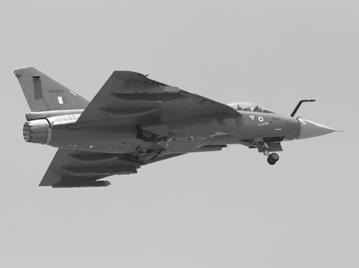
An analysis of Indian Air Force capability development requirements to meet the combined threat of Pakistan Air Force and China’s PLAAF
Indian Air Force (IAF) has played a pivotal role in every conflict and operation, starting from airlifting of troops at short notice to defeat Pakistani designs of annexing Kashmir in 1947 to the daring Balakot strikes against a prominent JeM terrorist camp in February 2019. IAF has, transformed from being an air power to a modern aerospace power with full spectrum capability. The service is capable of undertaking integrated operations in all five domains of warfighting.
with PL-15 Beyond Visual Range Air to Air Missiles (BVRAAM) have enhanced its offensive capability. It is also in talks with Turkey to procure BVRAAMs to replace and augment AMRAAMs. Development of Link 17 datalink provides them the capability to integrate all fighter aircraft on a single network, this boosts their combat capability. Pakistan could potentially convert its F-7s into UCAVs for saturating Indian Air Defence and as decoys.
Air power has been instrument of choice in all recent conflicts. Many lessons have emerged on optimal and suboptimal use of air power in accomplishment of military objectives. The character of war is evolving with technological advancements and so is employment of air power since, air power is technologically intensive and is therefore sensitive to technological evolution.
The latest World Directory of Modern Military Aircraft (WDDMA) report of 2024 places IAF as the third strongest Air Force followed by China, with PAF taking the 15th place. The WDMMA annual ranking utilises a formula which takes into account values related to total fighting strength of the various air forces of the world.
“The global security environment is in a state of constant flux. The ongoing conflicts demonstrate the inescapable requirement to have a strong and capable Air Force. Therefore, there is a need for the Indian Air Force (IAF) to be prepared to meet any contingency that challenges our national interests. The IAF should develop capability to dominate aerospace in its area of responsibility.” Air Chief Marshal A.P. Singh, Chief of the Air Staff said on October 8, 2024 at Air Force Day celebrations in Chennai.
Pakistan Air Force (PAF) Capability Assessment
Pakistan has, since independence modernised PAF to match growing capability of the IAF. It procured “Sabre Jets” from USA in response to induction of Mysteres, and this trend has continued with procurement of J-10CE in response to induction of Rafale by the IAF. PAF has continuously upgraded and systematically modernized its capability. It has consistently maintained a strength of about 450 fighter aircraft. Procurement of JF-17 and J-10CE armed
PAF has strengthened its Air Defence with induction of LY-80, LY-80 ER and HQ-9 systems from China in addition to short range systems like Crotale and SPADA. It has a network of ground-based radars augmented with 12 AEW&C aircraft for gap free, 24x7 surveillance.
PAF has developed indigenous UAVs while importing Byraktar TB2 and Akinci UAVs from Turkey, Wing Loong-II and CH-4 from China and Luna from Germany. It may be pertinent to note that in eventuality of a conflict with India it’s UAV fleet will be supported by both Turkey and China. PAF currently holds 15 C-130 transport aircraft. PAF has good airfield infrastructure with sufficient hardened aircraft shelters to safeguard its aircraft against air attacks.
Overall assessment of PAF clearly brings out its progressive shift towards China in its quest to remain relevant against IAF. It has acquired capabilities to match IAF and is now trying to procure around 40 J-35A fifth generation fighters from China in a timeframe ahead of the IAF inducting AMCA. It is pertinent to note that during one of the Red Flag exercises conducted by USAF it emerged that F-35 achieved extraordinary kill ratios against fourth generation fighters equipped with similar weapons. PAF is also in the process of inducting long-range precision weapons including air launched cruise missiles.
PLAAF Capability Assessment
TO READ THE COMPLETE ARTICLE GET YOUR COPY NOW!
Till 1990s PLAAF believed in quantity, with an inventory of more than 3,200 aircraft. PLAAF commenced its modernisation process two decades back and has methodically enhanced its technological threshold by rapidly developing latest generation platforms, equipment and weapons. It recently surprised the entire world by flying two latest generation tailless stealth aircraft bordering on sixth gen-
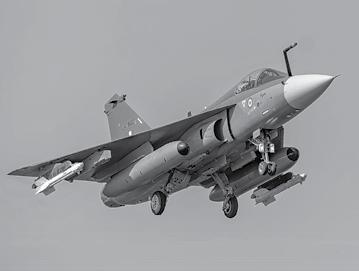
Achieving ‘Atmanirbharta’ or self-reliance in defence is imperative in the face of evolving global security dynamics. This requires the development of indigenous technologies tailored to meet unique operational challenges. Furthermore, shifting international alliances and geopolitical uncertainties underscore the importance of a robust, self-sufficient defence ecosystem to safeguard national security and strategic interests.
The Air Power theory was first propounded by Giulio Douhet, an Italian theoretician in 1921. This was followed by Hugh Trenchard, Billy Mitchell, John Slessor, and Alexander P de Seversky based on their expertise acquired in their active military service. However, Giulio Douhet and Alexander de Seversky are the only two classical Air Power theorists who highlighted the necessity for developing a domestic aerospace industry emphasising the importance of research and development in the aerospace sector. They stressed the significance of a vibrant scientific and industrial base for the successful projection of air power. The IAF Doctrine 2022 at page 18 expounds that, “To foster and contribute towards enabling the required degree of selfsufficiency in the aerospace industry and aerospace technology through indigenisation to achieve the desired degree of technological independence.” This is indicative of the IAF’s commitment to Atmanirbharta at the doctrinal level. The concept of ‘Air Power’ will be comprehensive only when it includes the country’s capability and capacity to design, develop, and manufacture civilian and military aircraft, their critical components like engines, sensors, materials and all the military command and control structures to execute the Air Will of the nation.
like Prachand attack helicopter, Netra Airborne Early Warning and Control (AEW&C) and Akash Surface to Air Missiles (SAM) actively participated throughout the exercise in various missions of Large Force Engagement (LFE). The favourable comparison with the well-known, battle-proven war fighter of Air Forces of advanced nations has immensely enhanced the morale of the technicians, scientists and the air warriors of the IAF.
During the Indian Air Force’s annual press day on October 5, 2024, Air Chief Marshal A.P. Singh, the Chief of the Air Staff, stated that the IAF is looking at having the entire inventory produced in India by 2047. He articulated that, “It is important to have indigenous weapons systems to deal with any future security challenges. You cannot afford to have them being bought and rely on that supply chain. We must have these things being produced in India.” Exercise Tarang Shakti held in Indian skies during August and September of 2024 has showcased the necessity for self-reliance in military aviation. IAF has exhibited immense faith in the versatile indigenous Tejas aircraft. All the Indigenous platforms
The IAF is committed towards the vision of ‘VIKSIT BHARAT - 2047’. The most preferred option for capital acquisition is Buy Indigenously Designed Developed and Manufactured (IDDM) followed by Buy (Indian) category. IAF has signed contracts with Indian DPSUs like HAL and BEL for procurement of LCA Mk1A fighter aircraft, Light Combat Helicopter, Aslesha Radar, Low Level Tracking Radar, weapons etc. Contracts with Indian private industries have also been signed for procurement of Counter Drone Systems and other defence equipment. Additionally, production of 40 C295 aircraft by Tata Advanced Systems Ltd (TASL) conforms with the vision of Atmanirbhar Bharat. This is the first project of its kind and will help in developing an aerospace ecosystem in India. The indigenous manufacturing and supply-chain of defence equipment assures availability as per our requirement and hence guarantees that the conflicts terminate favourably as per our interests. A canvas of such projects and contracts of the path IAF has embarked for Atmanirbharta are profusely available in the print and internet giving a sense of pride, transparency and confidence in the government, public and industry. These are enumerated in this article.
The Tejas Mk1 light combat supersonic fighter aircraft is designed for offensive air support, close combat, and ground attack roles. It is a 4.5 generation, lightweight, high-agility supersonic multirole fighter aircraft, which entered service with the IAF in July
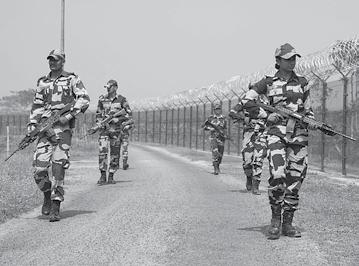
Security Dynamics of the Siliguri Corridor, often termed India’s “Chicken’s Neck,” a vital lifeline to the northeast, remains vulnerable in one of the country’s most critical regions. Surrounded by Nepal, Bhutan, and Bangladesh, this narrow stretch is exposed to significant security risks. Recent unrest in Bangladesh threatens to exacerbate existing challenges, including illegal immigration, smuggling, and insurgency. As tensions rise, the corridor’s strategic importance as a hub for transportation, energy, and military operations cannot be overstated.
The turbulence and violence in neighbouring Bangladesh, is reflective of latent security threats and implications which may well spill over across the borders, especially in the sensitive region of the Siliguri corridor. The geographical attributes and the cartographic peculiarities of this area, create vulnerabilities which can be exploited by inimical elements using non-conventional methods.
This corridor, which links India with eight of its states in the north east, is formed due to the sudden decrease in width as Indian territory extends eastwards across the land mass linking north Bengal with Assam; with Nepal, Bhutan and Bangladesh, hedging in this area from west, north and south. The shortest expanse is 20 kms between Naxalbari on the India-Nepal border and Phunsideva on the India-Bangladesh border. In proximity to this is the 30 km transit route for third party trade permitted by India, between the border checkpoints of Kakarbhitta in Nepal and and Banglabandha in Bangladesh. The width of Indian territory between Bhutan and Bangladesh is 43 kms at its narrowest. Known as the ‘gateway to the north-east’, major communication arteries, which include NH 17 and 27, broad gauge rail lines, oil and gas pipe lines, as well as the national power grid pass through it. The strategic airfields of Bagdogra and Hashimara, important military formation HQs and the large towns of Siliguri, Jalpaiguri and Cooch Behar, are located within this corridor.
In the north, this area is over 40 kms from the Chinese territory of Chumbi Valley, across undeveloped mountainous terrain of south Bhutan till the Indian border. However, all along its southern length it is flanked by the undulating border with Bangladesh, as it meanders across riverine terrain and swampy areas. Guarding such a border primarily against illegal immigrants and smugglers, is a herculean task as it is also densely populated on either side.
In June 2017, when the Indian army crossed the watershed at Doka La, into Bhutanese territory to physically stop the PLA from constructing a road towards Jampheri ridge, the Bhutan government had been somewhat subdued in their denouncement of the Chinese intrusion. China has also occupied areas in western Bhutan across the Amo chu river and settled a few border villages thereby broadening the tip of the Chumbi Valley, which lies between India and Bhutan. Surprisingly however, Bhutanese govt has denied any Chinese installations within its territories.
Looking beyond this, it is apparent that Bhutan sees building bridges with China imperative in its future. It may be more than willing to trade off the Doklam territory, including some pockets east of Amo chu where Chinese villages have come up, in exchange for the much larger disputed areas of Pasalmlung and Jakarlung, totalling about 500 sq kms, along its northern borders with China. It may also be looking at greater economic benefits by further opening relations with China. The Bhutanese monarchy has mostly been pro-India in its public stance. However, given the internal complexities of the “Hermit Kingdom,” where the influence of the monarchy and the monastic order may be somewhat waning, the aspirations of an increasingly democratic Bhutan cannot be wished away.
Indian territory may well be visible from Jampheri through high powered optical devices, but the PLA can observe it just as easily from much further north through satellites and high-altitude drones and engage it with various long-range systems if required.
Chinese ingress into western Bhutan, whether by tacit understanding or otherwise, may not immediately threaten the Siliguri corridor. However, this possibility necessitates re-calibration of the Indian army deployment on India-Bhutan borders with the area south of Jampheri, requiring increased attention. The armed forces will surely be at grips with this and fully up to the task.
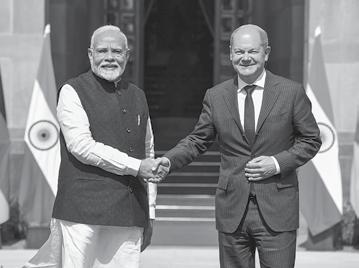
According the “Special Status” in the conservative policy framework, German Chancellor Olaf Scholz, in his visit to India, opens a historic chapter in the Indo-German ties. The newly defined status surpasses the barriers beyond trade and commerce to defence and security with the potential to collaborate across the strategic and military domains from submarines to next-generation aircraft.
In such a “breakthrough bilateral talks” according to a senior German diplomat, all important issues were discussed, including the free trade with the European Union (EU). Olaf Scholz greatly endorsed a free trade agreement, and said, “it would benefit all sides”.
Responding to the breakthrough ties, Prime Minister Narendra Modi highlighted the building of defence and security sectors with Germany, as a reflection of their strong mutual trust.
As the Prime Minister emphasised the ongoing joint initiatives in defence cooperation, such as the German Navy ship’s port call in Goa, and said “Our partnership has gained new momentum and direction. Germany’s ‘Focus on India Strategy’ offers a comprehensive blueprint to modernise and elevate relations between two of the world’s largest democracies.”
Just one week ahead of the annual intergovernmental consultations, the German government published its first strategic document solely focused on its engagement with India. The paper is the outcome of the government’s long-standing deliberation as to how it wants to engage with India and prioritise its policies. The “Focus on India” is a comprehensive manual outlining Germany’s planned approach towards India.
“We want to intensify our strategic partnership with India”, is the message that cuts across Germany’s new approach towards India which the government liberally outlines in his policy document.
Moreover, during Scholz’s three-day visit to India, he also cochaired the 7th Intergovernmental Consultations (IGC) after a gap of 12 years.
The significance is larger in terms of building a concrete outline for India as it was being seen as ambiguous at best, in the overall policy framework while the concern for China is also increasing within the German politico. Additionally, the historical reference towards India’s freedom struggle is worth mentioning in analysing the resurgence of India-Germany ties. Germany is India’s big-
gest trading partner within the EU, and Olaf is determined to strengthen strategic ties to counter China’s growing influence on the West.
On October 16, 2024, the Cabinet adopted the key strategic document Focus on India. The vision document—Focus on India— attempts to redefine the strategic relations on the future actions within the Indo-Pacific realm, centred on India. Why so?
The centre of global growth lies at the heart of the Indian Ocean region (IOR). For Germany, it only connects Europe and Asia but opens a great deal towards the oil-rich Arab states. Today, the IndoPacific is home to 60 per cent of the world’s economic output and two-thirds of global growth while more than 80 per cent of global trade is shipped by sea.
According to the document, the German Government wants to raise the strategic partnership that has underpinned their relationship with India since 2000 to a new level. The first steps towards implementation are to be agreed upon at the next Indo-German intergovernmental consultations at the end of the month.
The paper cites the German perspective and key role of India as a stabilising influence in a region where the global order based on the principles of the UN Charter and international law is facing considerable pressure. “The geopolitical lines of conflict in the Indo-Pacific and the high economic dynamics in the region will play a significant role in shaping the international order of the 21st century. In this process, India has expressed a clear aspiration to shape future developments and aspires also to promote the interests of developing countries throughout the world as “the voice of the Global South”, the paper outlines and acknowledges the need to have greater alignment on issues.
NOW!
A central component of this is intensifying security cooperation – both in the continuous efforts to find strategic convergence on key foreign and security policy challenges and through practical
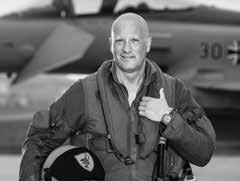
‘ZEITENWENDE’
In an exclusive interaction, Chief of Luftwaffe (German Air Force) Lieutenant General Ingo Gerhartz speaks with Consulting & Contributing Editor Manish Kumar Jha, in New Delhi on a comprehensive range of issues concerning German forces’ modernisation, NATO’s role, military acquisitions, and Germany’s presence in the IndoPacific building a new era of military cooperation with India.
The ‘Zeitenwende’ speech of German Chancellor to the Bundestag, at the beginning of the Russia-Ukraine war, signified the changing times while reversing Germany’s previously cautious defence policy. In this interview, Lt General Ingo Gerhartz, Chief of German Air Force refers to this ‘historic turning point’ as a cornerstone of the ongoing German military modernisation.
With Zeitenwende, Germany aims to restore the glorious legacy of the Luftwaffe for its air power and resurrect its technological prowess with new generation acquisitions like the stealthy fifth generation F-35 and Patriot air defence systems while simultaneously modernising its assets with “supersonic speed”. In a sweeping move, Germany has raised the defence budget by 2 per cent of the GDP with an additional fund of a staggering Euro 100 billion to modernise its ageing assets. On August 15, the US announced the sale of 600 Patriot air defence missiles to Germany, at an estimated cost $5 billion. At the same time, the Eurofighter, as the frontier combat jet, will undergo massive upgradation for electronic warfare purposes.
For the Luftwaffe and German military, it is equally a new era for Indo-German partnerships which also echo a historic bond. The unfolding of the next-generation submarine under P-75(I) with AIP and calls for acquiring next-generation military transport aircraft (A400M) to refuelers (A330 MRTT) puts Germany at the heart of strategic collaboration with India.
Manish Kumar Jha (Manish Jha): Luftwaffe has an impeccable legacy, technologically ahead of the times. Give us an overview of the German Air Force’s capabilities today. We also understand there’s a lot of debate within the German parliament for modernising the Luftwaffe in terms of the defence budget and acquiring new assets in the wake of ongoing regional conflict.
Lt General Ingo Gerhartz (Lt General Gerhartz): When I entered service in the Air Force (Luftwaffe), it was mid-80s. All my qualifi-
cations, pilot training and other training was at that time and when that period finished, we had the German reunification.
Now, for more than three decades, we had a declining defence budget. Since we had low budget numbers, we had a lot of modernisation gaps. When Russia attacked Ukraine, the German Chancellor, made a historic speech in Parliament and announced to give the modernisation of the Armed Forces, an extra Euro 100 billion while also increasing the defence budget, eventually to 2 per cent of the GDP.
Manish Jha: So, the Euro 100 billion is added to the top of the Air Force budget?
Lt General Gerhartz: Overall, the budget of the armed forces is 2 per cent of the GDP. The Euro 100 billion increase is on top of that. We don’t have particular Air Force, Army, or Navy budgets. We all have only one budget so that, as a result, gave us a lot of options for modernisation.
For example, we need a new helicopter. Someone asked me recently, as a high-tech nation, why are we buying from the US. We didn’t have the time. We could have easily developed, for example, with Airbus, a new helicopter. But in recent times, in the last decades, we didn’t have the money. We were only focused on mission support like Afghanistan, but we were not focused on defending our country. This changes now. It’s what we call, this speech from the German Chancellor in 2022, turning point in history —Zeitenwende – the German expression for that. So now we are buying 60 Chinook helicopters. We will be one of the biggest transport helicopter nations in the world. We will also have 53 A400M, A330 tankers and C-130 aircraft. We will be the biggest nation of air transport in Europe!
TO READ THE COMPLETE ARTICLE GET YOUR COPY NOW!
And then the modernisation of the fighter fleet. One of the most important decisions was what is the next fighter? Now we are going for the F-35. But, simultaneously, we modernise the Eurofighter. We will make the Eurofighter fit for electronic warfare purposes, and that was possible only due to this rapid change in budget.






Future applications are virtually unlimited — unmanned systems are set to take on every role that traditionally only was possible for human-crewed aircraft as well as new ones that conventional aircraft can’t perform.
Unmanned aircraft have been around for decades and changed the world several times over — but they’ve only scratched the surface of what’s possible.
Technical and diplomatic developments unfolding by the day have placed the most advanced users of unmanned systems, including nations such as India, on the verge of a whole new era in which these aircraft and supporting concepts write the next chapter in defense, security, intelligence, and much more.
One reason is that the aircraft and their associated systems can do more than ever. Another reason is that new partnerships, including the one between India and the United States that has set the stage for collaboration on unmanned aircraft, are letting new users get their hands on these new aircraft and employ them in new ways.
Future applications are virtually unlimited — unmanned systems are set to take on every role that traditionally only was possible for human-crewed aircraft as well as new ones that conventional aircraft can’t perform.
Air domain awareness, anti-submarine warfare, communications relay, and more — these are only some of the roles coming into reach with the new generation of hardware and software.
To understand how it’s coming about, it helps to understand the state of technology today, starting with the Indian Navy.
The foundation stone for this new era was laid when the Indian Navy began to fly preproduction MQ-9B SeaGuardian® aircraft in a contractor-owned, contractor-operated agreement with the U.S. manufacturer General Atomics Aeronautical Systems, Inc.
These are the most advanced systems of their kind anywhere in the world. The SeaGuardian can fly for more than 30 hours, in some configurations, and carries a number of highly sophisticated onboard sensors and other equipment, as well as external payloads, that enable it to do things no human-occupied aircraft can.
The MQ-9B proved to be an optimal complement to the Indian Navy’s expanding area and tempo of operations throughout the Indian Ocean. Some eastern portions of this huge area were plagued by pirate attacks, prompting the Indian Navy to respond — swiftly.
In a typical case, pirates in a small skiff would hijack merchant ships sailing east of the African continent. The attackers would imprison the ships’ crews and demand a ransom for their safety. Indian authorities refused to tolerate it.
The Indian Navy responded with warships, helicopters, humanoccupied patrol aircraft, and, critically, MQ-9B SeaGuardian. These aircraft are ideal for these sorts of missions.
One reason is their ability to cover great distances and stay overhead for long periods of time. This enables commanders to search, locate, and stay with captured vessels, monitoring their position and condition and coordinating the other responding units.
Another reason is the high fidelity of intelligence, surveillance, and reconnaissance provided by the MQ-9B. The aircraft can transmit high-quality, full-motion video any time of day or night. It can sense through clouds, mist, smoke, or other obscuring conditions with its synthetic aperture radar.
So, when the time came to act against the pirates, Indian Navy commanders could do so with complete understanding about where the stricken vessels had been, where they were heading, and what material condition they had reached after the crews’ ordeal. In cases when special operations troopers assaulted the ships, perhaps dropping from the sky via parachute, supervisors could watch the raid and rescue in real time from their command center on land.
TO READ THE COMPLETE ARTICLE GET YOUR COPY NOW!
This is possible thanks to the high degree of networking built into the MQ-9B, which communicates via satellite and radio link. Pilots and mission crew can fly the aircraft from a remote ground control station that can be sited anywhere. But the aircraft also can share data with other units as needed, making it useful to the whole fleet.
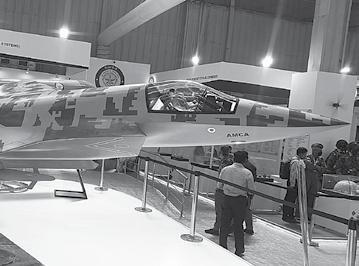
The evolution of fighter aircraft is a journey punctuated by lightning-fast technological strides, dynamic tactical doctrines, and the ever-shifting demands of aerial combat. The ability of these machines to adapt and evolve, constantly morphing to meet the needs of modern warfare, is truly awe-inspiring.
The first fighter aircraft made their debut during World War I. They were basic biplanes constructed from wood and fabric, primarily used for reconnaissance. As machine guns were installed, their role evolved to dogfighting. With significant technological advancements, aircraft transitioned to more robust metal frames during the interwar period. World War II propelled fighter aircraft development. Speed, agility, and firepower skyrocketed. The war’s end witnessed the advent of jet propulsion, signifying the shift from piston engines to jet engines. The Cold War era saw the birth of supersonic fighters and the introduction of guided missiles. Aircraft like the F-86 Sabre and MiG-15 gained fame during the Korean War, marking a significant shift in aerial combat. Later, more advanced fighters like the F-4 Phantom II and MiG-21 emerged, capable of air superiority and ground attack roles. The latest generation of fighters, such as the F-22 Raptor and F-35 Lightning II from the United States and the Su-57 from Russia, are designed with a strong emphasis on stealth, advanced avionics, and multirole capabilities. China also boasts that its indigenous Chengdu J-20 and Shenyang FC-31 are of equal calibre. These latest fighter aircraft are engineered to dominate in electronic warfare environments and execute various missions, demonstrating modern fighter aircraft’s diverse roles and capabilities.
the 4th generation into 4 and 4.5, or 4+ and 4++.
n The first generation of subsonic jet fighters emerged during and after the final years of World War II, a period marked by significant technological and geopolitical changes. Similar to their piston-engine contemporaries, these aircraft were primarily made of wood and light alloy and had generally straight wings. Their main feature was a significant speed increase over their predecessors, which they achieved with the introduction of the swept wing. They were equipped with basic avionic systems, no radars or self-protection countermeasures, and were armed with machine guns or cannons and unguided bombs and rockets. These aircraft were primarily designed for the air-superiority interceptor role. Examples of this generation include Meteor, de Havilland Vampire, F-86 Sabre, McDonnell FH-1 Phantom, and MiG-15 and 17.
The classification of fighter jets into different generations is a testimony to the pivotal role of technological innovation in shaping these aircraft’s evolution. Each generation represents a particular class of technology used in the aircraft, such as avionics, systems, design, features, engines, and weapons. A higher generation signifies a more technologically advanced aircraft. A generational shift occurs when a technological innovation cannot be incorporated into an existing aircraft through upgrades and retrospective fit-outs. The primary classification of fighter aircraft into five generations, with the development of a sixth generation underway, is widely accepted and recognised. Some accounts have further subdivided
n The second generation of fighter jets, a product of significant technological breakthroughs and lessons learned from aerial warfare, notably the Korean War of 1950-1953, saw substantial advancements. These aircraft had higher speeds, including sustained transonic and supersonic dash capabilities, and featured rudimentary fire control radar and the use of guided air-to-air missiles. The second-generation fighters also incorporated advances in engine design, such as afterburners and aerodynamics, like swept wings, which allowed them to reach and sustain supersonic speeds in level flight. They introduced air-to-air radar, infrared and semi-active guided missiles, and radar warning receivers. While air-to-air combat was still within visual range, radar-guided missiles extended the engagement ranges and accuracy. The aircraft were divided into interceptors and fighter-bombers based on their roles. Examples of this generation include Lockheed F-104 Starfighter, MiG-19 and 21, Hawker Hunter, and Dassault Mirage III.
n The third generation of fighters, a significant milestone in the evolution of fighter aircraft, were designed to be multirole fighters capable of performing air defence and ground attack missions. They could carry a wide range of weapons, such as
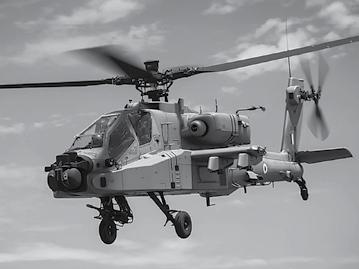
Recent conflicts, the ongoing Ukraine-Russian war in particular, have called into question the future of attack helicopters in the battlefield as Unmanned warfare systems become a destructive threat to human life
The ubiquity of helicopters has been seen the world over, ever since the first machine flew in the 1940s. The roles that it has been called upon to perform span the entire spectrum of peace and war – even Leonardo da Vinci, who first drew the ‘aerial screw’ in the 1480s, could not have dreamt what his sketch would turn out to be. Starting from the obvious logistics and personnel transportation roles, the helicopter underwent a transformation in the Algerian counter insurgency campaign of France in the 1950s when the French mounted guns, rockets and the AS-11 air to ground missile on rotary wing machines to transform them into armed helicopters. The first true attack helicopter was the legendary American AH-1 Huey Cobra that flew in 1962 as a concept demonstrator from the UH-1 Huey; the Huey Cobra turned out to be legendary because its latest version, AH-1Z, is still the mainstay in many aviation arms in the world.
It has been seven decades since ‘Algeria’ where the helicopter ruled the roost, and since then technology has revolutionised the battlefield, both the offensive segment as well as defensive systems. With the advent of artificial intelligence (AI) and autonomous systems the battlefield has become a lethal arena for ‘human’ war fighters – with unmanned warfare systems becoming a destructive threat to human life as well raising questions on the future employability of manned systems. The Azerbaijan-Armenian conflict of 2020 and the ongoing Ukraine-Russian war, in particular, have called into question the future of attack helicopters in the battlefield; this essay does some star gazing and examines the relevance of the armed rotary wing machine in future conflicts.
The ability of the armed/attack helicopter (the term, attack helicopter, will hereafter be used as a generic word to mean a rotary wing machine that has the capability to fire ordnance) down the decades to significantly affect the course of a battle has been mixed. As with the introduction of any new weapon system, its efficacy has been the resultant of its potency measured against the antidote developed to counter it, with an added, and sometimes overriding, factor of aircrew expertise determining the final result. Thus, in Algeria in the 1950s, the novelty of the armed helicopter in battle along with the unavailability of any counter to its lethality with the Algerian resistance fighters made the attack helicopter come out trumps. Helicopter dominance started with air assault missions that gave back the initiative to French forces against the insurgents, with reconnaissance helicopters giving advance information about enemy disposition followed by the massing of French troops by air assault tactics. Arming of helicopters soon started and they became indispensable during air assaults and for striking insurgents fleeing from the combat zone. Their success can be attributed to their novelty factor and the fact that, other than their personal arms and machine guns, the insurgents had no weapon to strike the helicopters.
When attack helicopter appeared on the battlefield, it brought in an element of armament delivery from a point that was relatively distant from the enemy and was elevated – bringing in an element of the attacker occupying a high ground. Also, the fact that it could fly in low and fast, decelerate quickly, pop-up to acquire the target, fire its ordnance and get away quickly accorded it an aura of invincibility. The invincibility factor got enhanced with armoured protection of the cockpit and other key points in the helicopter structure. It was for these reasons that resulted in the first extensive use of rotary wing machines in the Vietnam War. A US Department of Defense handbook of 1966 for the Vietnam War describes Vietcong tactics as “when the enemy advances, withdraw; when he defends, harass; when he is tired, attack: when he withdraws, pursue.” And on confronting an American helicopter the advice was “to hide.” Thus, the air mobility factor was what channelised American decision-making into extensive use of helicopters in an air cavalry role. Needless to add, the proximity to the Vietcong and North Vietnamese forces in such missions resulted in huge rotary wing losses. This did not result in change in helicopter tactics as what mattered was the high ‘body count’ of the adversary that was taken (in the event, erroneously) as a yardstick for success by the US military. Additionally,
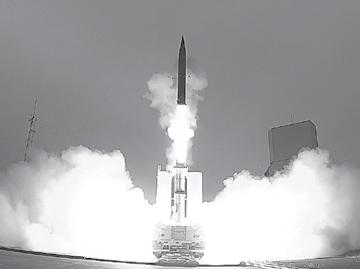
Advancements in air defence systems with the use of newer and more sophisticated technologies enable better detection, tracking and multi-target engagement achieving note able successes in intercepting advanced threats like ballistic missiles, drones and cruise missiles
In the last decade many advancements have taken place in Air Defence that have increased the lethality of Air Defence systems. Radars to detect and track have become better and more sophisticated. Advancements in microprocessors and other electronic components have made radar systems smaller as well as more powerful. Digital Signal processors are now able to handle low signal to noise ratios eking out very low strength target signals from amongst the ambient noise allowing for detection at larger ranges as well as more efficient tracking. Electronic warfare capabilities of Air Defence systems have been significantly enhanced through digital processing and sophisticated algorithms crunched through powerful chips allowing for easier operation and interpretation. Active Electronically Scanned Array (AESA) Radars offer improved detection range, target tracking, and multi-target engagement capabilities. Powerful TR (Transmit Receive) modules now dominate these latest systems and equipped with GaN (Gallium Nitride) technology these systems allow for rapid electronic beam steering making the systems much more compact and easy to maintain. Multispectral sensor fusion has enabled integration of infrared, optical, and ultraviolet sensors that has enhanced the ability to detect stealth aircraft, drones, and hypersonic weapons.
The kinetic end of the system i.e. the missiles have also increased in lethality. Many missiles come with updated sensors that are miniaturised thanks to efficient electronic processors that have revolutionised the manner in which terminal guidance is done in Air Defence missiles. Active guidance in the terminal phase is the norm leading to larger no escape zones. AESA Radars are also becoming the norm in the heads of active homing missiles. For passive homing missiles the latest IIR (Imaging Infra Red) sensors have improved tracking as well as negated the effect of Infrared flares that are commonly used to confuse earlier generation of missiles. Next generation onboard guidance computers with updated algorithms have allowed for more optimal intercept paths leading to conservation of missile energy that translates into longer
ranges. Rocket motors with better specific impulse have also yielded longer ranges. Some latest missiles also have dual pulse motors that enable energy addition in the final phased of intercept leading to larger no escape zones for the attacking missile. All in all the lethality and range of missiles has increased substantially allowing for more coverage area of these Air Defence systems.
Integrated Air Defence Systems (IADS) have also become ubiquitous. These systems connect various air defence assets (e.g., radars, missile batteries, command centers) to share real-time data and coordinate responses. Real-time Air Situation Picture (RASP) has become possible thanks to high speed data links engineered over optical fibre cable as well as encrypted high speed wireless networks. As a result many of the functions of the erstwhile Command Posts of Air Defence systems are being handled by IADS leading to a faster response to emerging threats. Advances in communication protocols and data fusion have allowed some Air Defence systems to even integrate legacy systems into the IADS leading to better utilisation of existing resources. Another aspect of this integration is that the otherwise combined elements of the Air Defence system (radars, launchers, spare missiles, communication vehicles etc) are now free to move independently and deploy in a “plug and play’ fashion into the IADS. This allows them to be significantly more mobile and able to redeploy quickly after engagements in order to avoid being targeted by the enemy. More recently Artificial Intelligence is being integrated to enhance decision-making, target identification, and threat prioritisation, leading to faster and more accurate responses.
Thus overall advances in technology have allowed Air Defence systems to have more area coverage, better response times, increased lethality and better survivability from both soft kill and hard kill attempts by the enemy. These Air Defence systems are thus a very attractive option to nations that face adversaries with potent

The rapid advancement of emerging military technologies is transforming the landscape of modern warfare, with significant implications for strategic stability and international security. The interactions between these technologies can yield unforeseen consequences, necessitating a careful evaluation of their impact on global security.
Emerging military technologies are redefining the nature of modern warfare. These advancements can shift the dynamics of conflict, creating opportunities and challenges in global security. While the United States remains a leader in the development of many of these technologies, strategic competitors like China and Russia are rapidly advancing their capabilities, aiming to close the gap and assert their influence on the future battlefield.
ROHIT GOEL
systems coordinate autonomously to overwhelm enemy defences. However, narrow AI systems present challenges, including algorithmic biases, unpredictability, and vulnerabilities that adversaries may exploit, raising ethical and legal questions, particularly in lethal autonomous operations.
This article explores the emerging military technologies like:
n Artificial Intelligence,
n Lethal Autonomous Weapon Systems,
n Hypersonic Weapons,
n Directed Energy Weapons,
n Biotechnology and n Quantum Technology
As these technologies continue to mature, they could hold significant implications for the future of war.
Artificial Intelligence (AI) has become a pivotal technology in modern defence, advancing various military operations. While no universally standardised definition of AI exists, in the context of military systems, it typically refers to computer systems that mimic human cognitive functions to perform tasks such as data analysis, autonomous decision-making, and operational functions. AI is generally classified into three types: narrow AI, general AI, and artificial superintelligence. Currently, only narrow AI is in use, widely deployed in the military for specific tasks such as surveillance, logistics, and autonomous vehicle operations. General AI, capable of a broader range of tasks, and artificial superintelligence, which would surpass human cognition, remain theoretical.
Narrow AI is integrated into numerous military functions, including intelligence, surveillance, reconnaissance, logistics, command and control, and autonomous systems. This integration enhances data analysis, speeds up reaction times, and fosters the development of new combat strategies, such as swarming tactics, where unmanned
The United States is leading the integration of AI technologies into its defence strategies. The Department of Defense (DoD) has significantly increased its unclassified AI investments from approximately $600 million in FY2016 to $1.8 billion in FY2024, currently overseeing over 685 active AI projects. These initiatives span various areas, including predictive maintenance, disaster relief, and health monitoring of military personnel.
To facilitate AI integration, the DoD has established institutional frameworks. The Joint Artificial Intelligence Centre (JAIC) initially coordinated AI projects with budgets exceeding $15 million; this responsibility has now transitioned to the Chief Digital and Artificial Intelligence Office, which reports directly to the Deputy Secretary of Defense. The DoD’s AI initiatives adhere to principles of responsibility, reliability, and governance, guided by the Responsible AI (RAI) strategy that mandates ethical standards across all AI projects. Furthermore, the US Congress has sought to enhance AI competitiveness through initiatives such as the National Security Commission on Artificial Intelligence (NSCAI), which published a report in 2021 outlining strategies to maintain US leadership in AI through research investment, national security bolstering, and international cooperation.
China’s Pursuit of AI Dominance
China has emerged as a significant competitor to the United States in AI technology. In 2017, it launched the "Next Generation AI Development Plan," identifying AI as a "strategic technology" with the objective of becoming a global leader by 2030. China has invested heavily in AI for civilian and military applications, achieving advancements in language processing, facial recognition, and
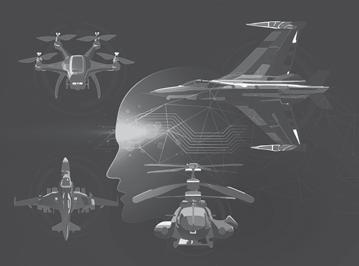
Defence R&D is a critical enabler of developing cutting-edge defence technologies to achieve self-reliance in critical defence technologies and systems, while equipping the armed forces with state-of-the-art weapon systems and equipment.
US has long been considered to be the leader in the development of mission critical defence equipment through its investment in defence R&D. The Defense Advanced Research Projects Agency (DARPA) is a research and development agency of the United States Department of Defense
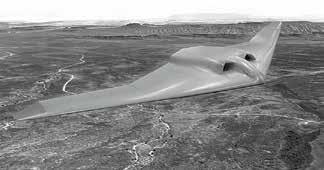
The Series Hybrid Electric Propulsion AiRcraft Demonstration programme, known as SHEPARD, has received its official X-plane designation: XRQ-73.
SHEPARD is an “X-prime” programme, leveraging the series hybrid electric architecture and some of the component technologies from the earlier AFRL/IARPA Great Horned Owl (GHO) project. The SHEPARD programme is maturing a specific propulsion architecture and power class as an exemplar of potential benefits for the Department of Defense. The XRQ-73 aircraft will be a Group 3 UAS weighing approximately 1,250 pounds. First flight of the XRQ-73 is expected by year-end 2024. n
responsible for the development of emerging technologies for use by the military. Following is an eclectic mix of some interesting technology programme being worked on at Defense Advanced Research Projects Agency (DARPA), to showcase the kind of research taking place in the development of defence technologies in the US industry.

Combining light simulation and photo-pharmaceuticals — a category of drugs that are only active in the presence of certain types of light — to target specific brain circuits, Alert WARfighter Enablement (AWARE) programme aims to safely stimulate brain function to improve alertness for a controlled time period. The AWARE programme seeks to develop a combination drug and device to non-invasively increase alertness following sleep loss in humans, without negative side effects such as anxiety, irritability, or euphoria, and with reduced addictive potential.
The goal is to design a new photo switchable stimulant that while active, behaves in the same manner as regular, unmodified drug. Through non-invasive delivery of near-infrared (NIR) light to specific areas of the brain, the combination of this photo switchable stimulant and NIR-emitting light could selectively activate the drug and therefore the regions of the brain responsible for executive function, working memory, and decision making, while avoiding off-target effects. n

The intersection of space technology and military applications has seen rapid advancements in recent years. As nations seek to assert dominance in the strategic domain of space, the development and deployment of cuttingedge technologies have become paramount. This report provides a comprehensive overview of the various space technologies being developed for military purposes.
Space has transitioned from a realm of exploration and communication into a crucial frontier for military and strategic dominance. Once primarily an arena for scientific discovery, space has now become essential to national security, where control over this domain translates to significant strategic advantages. Recognising the need to safeguard assets and interests, nations across the globe are investing heavily in advanced space-based technologies. These developments range from secure communication satellites that ensure uninterrupted connectivity to sophisticated intelligence-gathering tools that provide realtime situational awareness. Additionally, missile warning systems capable of detecting threats over vast distances, along with antisatellite (ASAT) weapons designed to neutralise hostile satellites, underscore the growing breadth of military applications in space.
visual evidence of military movements, infrastructure development, or changes in terrain. Electro-optical systems are often coupled with multi-spectral or hyperspectral imaging, which can detect materials and monitor specific activities, such as camouflage or underground facilities.
n Synthetic Aperture Radar (SAR): Unlike optical systems, SAR can capture images regardless of weather conditions or time of day. SAR satellites emit microwave pulses and measure the reflected signals to create detailed radar images. This is especially useful for tracking objects that are obscured by clouds or darkness, such as ships in the ocean or military vehicles hidden in forests.
This report explores these diverse and cutting-edge advancements, offering a comprehensive overview of each category of technology while highlighting the strides made by leading space-faring nations. As countries seek to bolster their defence capabilities and enhance national security, the militarisation of space is becoming a pivotal factor in shaping future global power dynamics. The development of these technologies can be grouped into several key areas, each designed to enhance security, surveillance, and strategic defence, thereby reinforcing a nation’s defence posture and providing a strategic edge over potential adversaries.
Satellite-Based Intelligence, Surveillance, and Reconnaissance
Satellite-based ISR systems are the backbone of modern military intelligence, providing critical data for national security operations. These satellites are equipped with advanced imaging, radar, and signal interception capabilities, enabling them to monitor, track, and assess activities across vast geographical areas. Key aspects include: n Electro-Optical Imaging: Utilises high-resolution cameras to capture images of the Earth’s surface. These images can provide
n Signals Intelligence (SIGINT): Satellites designed for SIGINT can intercept and analyse electronic signals, including communications and radar transmissions. This allows for the monitoring of enemy communication networks, providing valuable intelligence on troop movements, equipment deployment, and operational planning.
Secure and reliable communication is the lifeline of military operations, enabling coordination between command centres, units in the field, and allied forces. Modern military communication satellites are designed to support uninterrupted, secure communications over vast distances. Key features include:
n Anti-Jamming Capabilities: Communication satellites are increasingly equipped with technologies to counteract electronic jamming, which can disrupt signals. These anti-jamming capabilities ensure that critical communications remain operational even in contested environments.
n Secure and Encrypted Channels: Military satellites use advanced encryption protocols to protect data and prevent interception by adversaries. This includes quantum encryption, which is considered unbreakable under current technology, ensuring absolute security in communications.
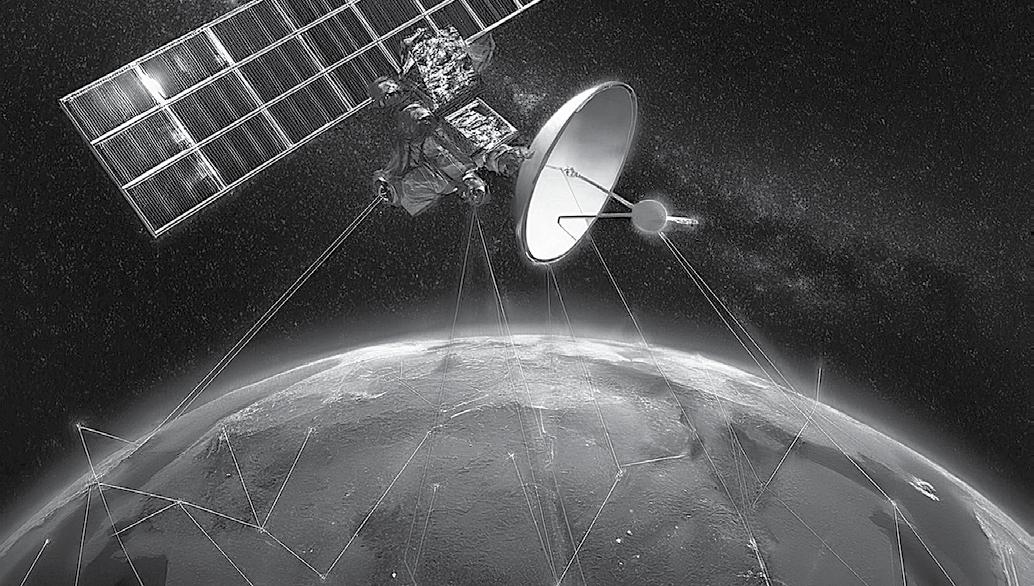
n Mobile and Tactical Communication: Beyond strategic command, satellites enable communication for mobile units, such as naval ships, aircraft, and ground troops. This ensures seamless coordination during dynamic and fluid combat scenarios.
With the emergence of new missile technologies, including hypersonic missiles, early warning systems have become a critical component of national defence. These systems are designed to detect, track, and provide alerts on missile launches, giving nations a crucial window to respond. Key elements include:
n Infrared Sensors: Early warning satellites are often equipped with infrared (IR) sensors that can detect the heat signature of a missile launch. The detection is near-instantaneous, allowing for quick dissemination of alerts to ground-based defence systems.
n Geostationary and Low Earth Orbit (LEO) Configurations: While geostationary satellites can provide continuous monitoring of a fixed area, LEO satellites offer better resolution and can cover different angles, making it harder for adversaries to evade detection. A combination of both is often employed to maximise coverage.
n Integrated Defence Networks: Modern missile detection systems are integrated with ground-based radars, interceptor systems, and command centres. This integration allows for rapid response, including the activation of missile defence systems to intercept and neutralise the threat.
Precision navigation is crucial for modern military operations, from guiding missiles to coordinating ground forces. While GPS is
the most well-known system, several countries are developing or enhancing their own global navigation satellite systems (GNSS) to reduce reliance on foreign infrastructure. Key aspects include:
n Enhanced Positioning Accuracy: Military-grade GNSS systems offer much higher accuracy than civilian versions, ensuring that missiles, aircraft, and other assets can be directed with precision. This is particularly important for precision-guided munitions, which require exact coordinates to strike specific targets.
n Independence from Foreign Systems: Nations are investing in their own navigation satellites to ensure strategic autonomy. This reduces the risk of being cut off from navigation services during a conflict and provides resilience against electronic interference.
n Augmentation Systems: To enhance accuracy, some military applications use ground-based augmentation systems (GBAS) or satellite-based augmentation systems (SBAS). These systems correct minor errors in positioning data, providing even greater precision for navigation and targeting.
ASAT weapons are designed to disable, damage, or destroy satellites, thereby disrupting an adversary’s space-based capabilities. These systems are controversial due to the potential for creating space debris, which can pose risks to other satellites and space operations. ASAT systems can be categorised as follows:
n Direct-Ascent Kinetic Kill Vehicles: These are missiles launched from the ground that can intercept and destroy satellites in orbit. The impact from these missiles can render a satellite inoperative or completely obliterate it. Direct-ascent ASAT tests have raised concerns due to the debris generated, which can linger in orbit for years.





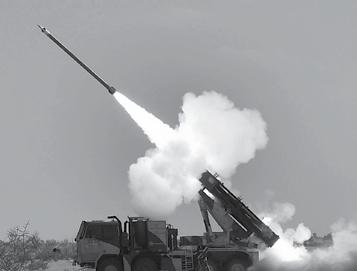
Government is committed to develop India as a leading global defence manufacturing hub as annual defence production hits record high of approximately `1.27 lakh crore in Financial Year 2023-24, with a growth of 16.7 per cent over last year and 60 per cent increase since 2019-20
Ministry of Defence has achieved the highest-ever growth in indigenous defence production in value terms during Financial Year (FY) 2023-24, on the back of successful implementation of the policies and initiatives of the Government, led by Prime Minister Narendra Modi, focusing on achieving ‘Atmanirbharta’. As per the data received from all Defence Public Sector undertakings (DPSUs), other PSUs manufacturing defence items and private companies, the value of defence production in the country has gone up to a record-high figure i.e., ` 1,26,887 crore, reflecting a growth of 16.7 per cent over the defence production of the previous financial year. The value of defence production in FY 2022-23 was ` 1,08,684 crore.
Acknowledging the achievement through a post on X, Defence Minister Rajnath Singh stated that the ‘Make in India’ programme is crossing new milestones, year after year, under the leadership of Prime Minister Narendra Modi. He voiced the Government’s unwavering resolve to develop India as a leading global defence manufacturing hub.
Of the total value of production (VoP) in 2023-24, about 79.2 per cent has been contributed by DPSUs/other PSUs and 20.8 per cent by the private sector. The data shows that in terms of absolute value, both DPSUs/PSUs and private sector have recorded a steady growth in defence production. Rajnath Singh congratulated the industry, including DPSUs, other PSUs manufacturing defence items and the private industry for taking the defence production at an all-time high.
The feat has been achieved due to the policy reforms/initiatives and ease of doing business brought in by the Government in the last 10 years with focus on attaining self-reliance. The indigenisation efforts have been pursued aggressively on a sustained basis, that resulted in the highest ever VoP. Moreover, the growth in defence exports have contributed tremendously to the overall growth in indigenous defence production. It may be recalled that defence exports touched a record-high of `21,083 crore in FY 2023-24,
reflecting a growth of 32.5 per cent over the last fiscal when the figure was `15,920 crore.
Self-sufficiency in defence includes producing the ability to design, fabricate, and assemble defence equipment and systems at home with negligible reliance on foreign supplies. Historically, India has relied heavily on defence imports, resulting in increased cost, delays, and technological obsolescence. Over the past twenty years, India’s military has modernised their equipment and inducted advanced weaponry and sophisticated weapon systems. Ranked as the fourth-largest defence spender worldwide, India has allocated a significant amount of $74.5 billion (`6,21,540.85 crore) for defence in fiscal year 2024-25, which is about a 13.04 per cent of the overall union budget.
Historically, India was one of the largest importers of defence equipment, with up to 70 per cent of its needs sourced from abroad. However, through sustained government support and a growing private sector role, this reliance has decreased sharply. Presently, approximately 65 per cent of India’s defence requirements are met domestically, with a robust industrial base that includes 16 Defence Public Sector Units (DPSUs), over 430 licensed private companies, and around 16,000 Micro, Small, and Medium Enterprises (MSMEs). The private sector’s contribution now accounts for 21 per cent of defence production, underscoring a collaborative approach in meeting national security needs.
A significant recent development in this journey was the inauguration of the TATA Aircraft Complex at the TATA Advanced Systems Limited (TASL) Campus in Vadodara, Gujarat, on October 28, 2024. This facility, set to make C295 military transport aircraft, is India’s first private sector Final Assembly Line (FAL) for military aircraft. Under the programme, 56 C295 aircraft will be delivered, with the first 16 arriving from Airbus in Spain and the remaining 40 manufactured in India. This milestone project highlights the country’s progression toward self-sufficiency in defence production,
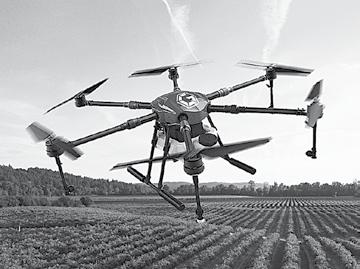
It is the era of drones. The cutting-edge breakthroughs in drone technologies are the most important tech development, cutting across Military-Civil Technology Fusion (MCTF). The leading militaries are rushing to redefine the capability architecture and reshape the military doctrines. What is needed across the policies and thrust on indigenous component-wise development?
It is the era of drones. The cutting-edge breakthroughs in drone technologies are simply the most important tech development, cutting across Military-Civil Technology Fusion (MCTF). Not surprisingly, the leading militaries are rushing to redefine their capability architecture and reshape their military doctrines.
It is estimated that in India, the drones (UAVs, Unmanned Aerial Systems and Remotely Piloted Aircraft (RPA) industry will be a `5,000 crore sector by 2026. Presently, there are 270 drone startups in India and the country will become a global drone hub by 2030. The Indian drone industry led by startups and Micro Small and Medium Enterprises (MSMEs) is growing in numbers. Interestingly, drone startups dominate the overall defence startups in India in terms of number of entities.
However, very few have the requisite technologies to match the rigour of qualitative requirements set out by the armed forces. So largely, at this stage, it is about the potential to outperform other sectors and transform into an innovation and Intellectual Property (IP)—led high-technology high-value industry.
There is no doubt that the policy reforms by the government in the civil drone sector are timely, comprising the civil drone rules-2021; Digital Sky Platform, Kisan Drone Scheme, Namo Drone Didi, Production Linked Incentive (PLI), etc. Along with its employment in the Svamitva scheme, agriculture, medical surveys, and other sectors the policy reforms had a significant impact on the expeditious adoption of drones since 2021.
However, the absence of a nodal ministry for drone technology, lack of a drone atmanirbharta policy, Research and Development (R&D) structures and import dependence on critical components, are barriers to India’s global drone hub mission. The absence of initiatives for the development and validation of emerging drone technologies such as remote tracking, detect and avoid systems, Unmanned Traffic Management (UTM),
Urban Air Mobility (UAM) etc, are immediate challenges in the integration of drones into the Indian airspace.
In the defence UAV sector, DRDO has been carrying the baton with Innovation for Defence Excellence (iDEX) and other initiatives, playing critical roles in the Indigenous development of logistics supply, loitering, ISR and swarm drones.
Largely, the drone manufacturers/integrators in the civilian space continue to rely on global partners for critical components such as semi-conductors, motors, actuators, communication systems, data links, data storage, Ground Control Stations (GCS), magnets, software, miniaturised sensors and payloads. In fact, in the process, some Indian drone manufacturers were recently banned by the Ministry of Defence (MoD) for procuring parts from China which was a blatant disregard of the MoD’s clear directive on this issue. This directive specifically highlights companies like Dhaksha Unmanned Systems, Sky Industries, and Garuda Aerospace, which have been supplying drones to the Indian Armed Forces. However, this raises concerns for sourcing of components as China is a major producer of 60 to 70 per cent of goods in the supply chain.
In the defence sector, the DRDO has been at the forefront of India’s military drone initiatives. Over the past few years, it has focused on creating advanced UAVs (Unmanned Aerial Vehicles) that cater to various operational needs—from surveillance and reconnaissance to combat and logistics support. Notable projects include the Rustom Series Short Range Unmanned Aerial Vehicle (SRUAV). The Rustom-1 and Rustom-2 drones based on TB-2 class, have been designed for long-endurance missions, featuring advanced sensors and payload capabilities that make them suitable for intelligence gathering and target acquisition.
DRDO is also developing loitering munitions, commonly referred to as “kamikaze drones,” that can strike high-value targets
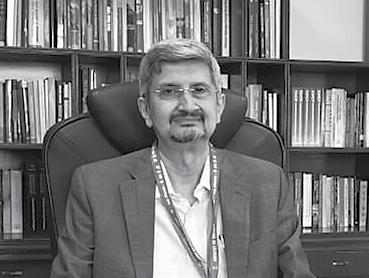
“WE DO NEED TO INCREASE OUR
AND OVERALL R&D
BE THE
In an exclusive interaction, Manish Kumar Jha speaks with Dr Samir V. Kamat, Secretary DD(R&D) & Chairman DRDO for building advanced military technology for India
DRDO is in the midst of change as the nation’s leading R&D institution with the largest network of 52 laboratories which are deeply engaged in developing defence technologies cutting across various military areas, like aeronautics, armaments, electronics, combat vehicles, engineering systems, instrumentation, missiles, advanced computing and simulation, special materials, naval and information systems among others.
However, DRDO is also bound to evolve and embrace new initiatives and structures with the changing times. Dr Kamat, having been tasked to continue building on the critical and new emerging technologies, opened up the roadmap for DRDO, and on shaping the culture of R&D in India.
Manish Kumar Jha (Manish Jha): Recently, DRDO has made a landmark achievement by developing liquid Ramjet fuel for advanced air-breathing engines. Could you talk about some of the latest breakthroughs which put DRDO as one of the world’s leading R&D agencies?
Dr Samir V. Kamat (Dr Kamat): This liquid Ramjet engine fuel is a very important development because it will be used in our BrahMos Ramjet engine. We have also developed fuel for our Scramjet engine. Similarly, several new technologies have been developed by DRDO in recent years which are going to drive the systems that we deliver. To name a few, we have developed a facechange materials-based cooling system for laser weapons. We have developed stealth materials which will go into our Advanced Medium Combat Aircraft (AMCA) platform. We have developed a variety of seekers and sensors which will make our missiles, radars and sonars more powerful.
So, the development of technologies is one of the key building blocks for delivering cutting-edge systems to our services. Our current thrust is on Hypersonic missiles both cruise as well as glide. So, this is going to be our focus area. The directed energy weapons that are both laser-based and high-power microwave-based weapons, are again going to be very crucial for us going ahead. The spacebased technologies especially for space-based surveillance, and
space situational awareness are going to be critical areas for the country and DRDO’s focus is increasingly shifting towards them. Then, underwater domain awareness where you can detect any intrusion in our waters. This technology and this capability are going to be very important for us.
Then, we are also working on several cutting-edge technologies which have recently emerged, such as AI & ML. We are introducing AI & ML in all our systems. We are working on Quantum Technologies, looking at Quantum communication, Quantum sensing as well as Quantum Computing. Further, cyber defence is again one area where we are increasing our focus. In addition to it, we are looking at photonics and smart materials. These technologies are currently being developed in the world and we need to be working with academia and startups so that we can keep pace and take leadership in these technologies as well.
Manish Jha: Dr Kamat you also talked about one of the key technologies which is in Space. In India, people do associate ISRO as a leading agency for space research and development for various programmes. Could you talk about what DRDO does in building space capabilities in defence?
Dr Kamat: So, ISRO’s focus is more on the civilian domain and our focus is how space can be used for military applications. We are looking at space-based surveillance as well as space situational awareness where most of the threats are going to come from. Currently, they are from the air but as technologies develop, space is going to be an important domain of warfare. You have to protect your space-based assets. You have to be aware of all the threats which will emerge from space. So, our focus is on building technologies and capabilities for space situational awareness which will help the country in protecting its space assets and the threats emerging from space.
Manish Jha: One of the areas where India has also achieved a higher degree of efficiency is the combat jet. In fact, upon the solid foundation of LCA Tejas Mk1A, India aims to build 5 and 5-plus generation of indigenous fighter jets. Could you talk about the next-generation combat jets like Tejas Mk2 and
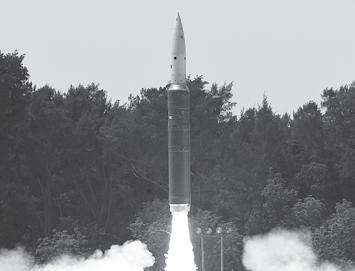
The development of indigenous technologies for military use in India has been significantly bolstered by government initiatives aimed at fostering innovation and self-reliance
The Indian government is striving for selfreliance and indigenisation in the defence and aerospace sectors, aligning with the larger vision of the “Atmanirbhar Bharat” (Self-Reliant India Initiative). This framework is critical in achieving self-sufficiency in defence production and reducing dependence on imports, thereby enhancing the strategic autonomy of India’s Armed Forces.
SP’S TEAM
Ministry of Defence in India along with Defence Research and Development Organisation (DRDO) play a central role in creating an ecosystem that encourages innovation and technology development in defence and aerospace sectors. By engaging a wide array of stakeholders, including industries, MSMEs, startups, individual innovators, R&D institutes, and academia, the Government provides funding and support to projects with high potential for future adoption by Indian defence and aerospace systms.
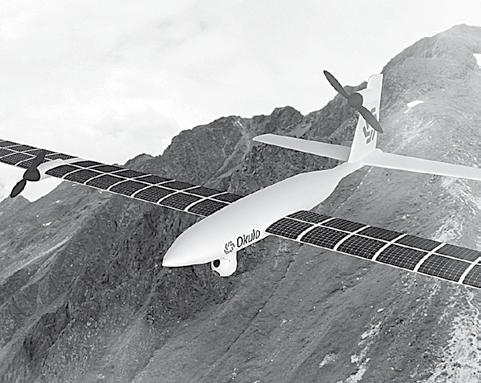
Solar-Electric Hybrid UAVs with unparalleled flight endurance of up to 8 hours enabling persistent monitoring. These UAVs offer sustained surveillance and monitoring capabilities, even in remote areas surpassing visual line of sight limitations and are equipped with fully autonomous operation capabilities. n
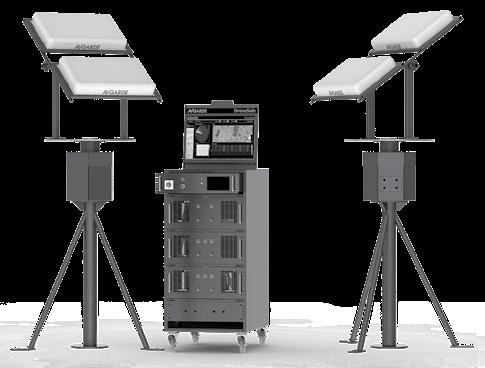
DroneSafe is a state-of-the-art AI-enabled Counter Unmanned Aircraft System (C-UAS) for airspace situational awareness, electronic warfare and intelligence, surveillance & reconnaissance (ISR) applications. It is a fully integrated solution that detects, classifies, mitigates and reports aerial risks/threats from drones, UAVs and other airborne objects. n
TO READ THE COMPLETE ARTICLE GET YOUR COPY NOW!
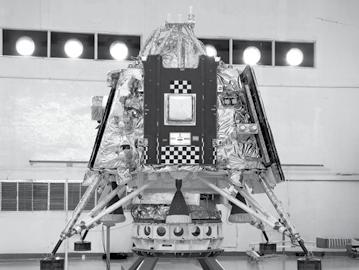
In a historic move to propel India’s space sector, the Union Cabinet, chaired by Prime Minister Narendra Modi, has sanctioned a `1,000 crore Venture Capital (VC) Fund dedicated solely to advancing space technology and innovation. This pioneering fund, launched under the guidance of the Indian National Space Promotion and Authorisation Center (IN-SPACe), aims to foster a thriving space startup ecosystem, strengthen India’s space economy, and secure the nation’s role as a global leader in space technology. This initiative marks a key step in realising India’s ambitious ‘Atmanirbhar Bharat’ (self-reliant India) vision, which seeks to empower high-tech industries through innovation, self-sufficiency, and economic growth.
The ` 1,000 crore fund is not merely a financial instrument; it is a strategic component of India’s space reforms launched in 2020. It aims to catalyse India’s space ecosystem by addressing several core objectives that are aligned with India’s broader space vision. This ambitious fund is designed to overcome challenges unique to space technology ventures, which are high-risk and demand substantial investment with long-term returns. Each objective of the fund addresses a critical gap in the current space sector landscape:
At the heart of the VC fund’s mission is to inject significant capital into the private sector, especially for startups in the nascent stages of development. Early-stage financing is crucial in the high-tech space industry, where initial development costs are prohibitive, and traditional lenders often hesitate to support ventures with uncertain returns. The government’s backing instils market confidence, potentially attracting further private capital from investors who may otherwise be cautious about entering the high-risk space sector.
Many talented Indian entrepreneurs and technologists, often educated in India, relocate overseas due to better financial support and
opportunities abroad. This fund seeks to reverse this brain drain by providing competitive financial backing within India. By fostering an environment where talent can thrive domestically, the fund helps build a robust, skilled workforce at home, preventing the loss of valuable human capital to other countries. This is a significant step towards establishing India as a global talent hub in space technology.
Currently valued at approximately $8.4 billion, India’s space economy represents about two per cent of the global market. With this VC fund, the government envisions expanding the space economy fivefold by 2033, reaching a projected value of $44 billion. This growth target reflects the government’s strategic intent to elevate India’s status from a regional to a global space economy leader. It also aligns with national development objectives, as space technology’s applications in sectors like telecommunications, agriculture, defence, and navigation offer direct benefits to India’s socio-economic landscape.
As the VC fund supports domestic startups, it accelerates technological advancement within the country. By prioritising innovation, the fund aims to cultivate indigenous expertise in satellite technology, launch systems, space data analytics, and space exploration. This shift reduces India’s dependency on foreign technology and enables Indian firms to develop and deliver solutions tailored to domestic needs, while also competing internationally.
Strengthening Indian space companies enhances their ability to compete with established international players. As the space sector continues to grow, with both governmental and private organisations seeking competitive satellite and launch solutions, India’s homegrown industry will be better positioned to offer cost-effective, high-quality alternatives. This move strengthens India’s standing as a viable supplier of space technology, opening opportunities for international partnerships and exports.
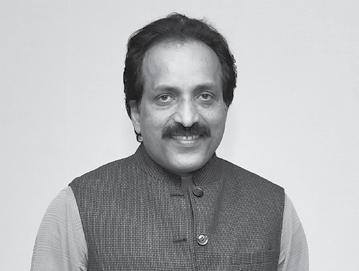
In the most comprehensive account of Indian space, its tech advancement, and its futuristic missions, Manish Kumar Jha speaks with S. Somanath, Chairman, ISRO, distinguished Scientist & Secretary, Department of Space.
Indian Space exploration is certainly moving now in a new era with such complex missions like Gaganyaan and further exploration as far as the Sun through the Aditya L1 spacecraft. However recent breakthroughs in small satellites bring the spotlight on space tech for civil and military uses. In fact, this is also about Indian private space entities working for futuristic space tech for the military and commercial arena.
On such a significant issue of national importance, Dr Somanath has led some of the key national initiatives on space - Driving National Space Policy, facilitating IN-SPACe activation, and engagement of ISRO with start-ups in the space sector. Most notably, he is pushing boundaries for Indian space startups for commercial activities including Launch Vehicle production among other initiatives. Here are excerpts of the interaction:
Manish Kumar Jha (Jha): Give us an overview of India’s Space policies and how you look at Space Vision 2047. And give an overall idea of your vision of space in India at that time.
S. Somanath, Chairman, ISRO (Dr Somanath): There was an announcement by the government in 2020 about the space sector reforms which looked at the entire space ecosystem in our country, the National Space actors like ISRO & then we wanted to bring in more and more private investment in space and bring more and more non-governmental entities into the space sector and facilitate them through the investments which are already done in the sector through our governmental investment. It also, aimed to provide a level playing field for all those who want to work in the space sector or any aspect of it, whatever may be the area.
So, this idea of the reform has been converted into a policy by 2023 and the space policy came out where the roles of different entities have been well defined. ISRO with its national space capability and research capability will continue to work on advanced technology and research. They have developed over the years which is into production and operation. We move over to private entrepreneurs who want to use it for developing its ecosystem and all those facilities that have been created in ISRO, will be also made available to those who want to develop Technologies or new systems in India.
The government has also created an entity called In-Space, where the new actors, private actors are coming in. The space is a regulated area because of international commitments and needs authorisation. So, this authorisation aspect will also be handled by In-space, especially with regards to launch vehicles, building, satellite launching and the management of orbital resources, which are very controlled. We have also empowered New Space India Limited (NSIL) to handle commercial operations, especially operating the satellites which we own. National Assets will now be over-operated by NSIL for commercial space. They will also aggregate the demand from different users and build systems that could include satellites, launch vehicles, and applications and deploy them on a commercial basis.
Then, with this, we also handle all the new startups and companies who are coming up and to help them to onboard the various activities, help them to promote this, and connect all the industries that are created as an ecosystem or supply chain upgrade them to become builders of Integrated Systems over a long period.
So, this is an essence of Space Policy 2023 and through this process what we achieve is the growth of our space economy, from the present level to a higher level which will be defined as part of the space assessment of which all thing spaces do.
Jha: You have well explained the space roadmap and plan under this mission but I would also like to know some futuristic technologies which put you ahead, in the world possibly by 2047, backing space boundaries. If you could talk about some other technology which ISRO is trying to put through under definition beginning with the quantum applications and AI in Space?
Dr Somanath: So, what we did in the past has been basically to bridge the gap that existed between us and the other developed nations in space. We have so far achieved that type of bridging the gap and are reaching somewhere closer to their skills and capabilities, which is very clearly demonstrated by our ability to go to Mars where we first launched successfully, to land on the moon, then our effort to build human space flight capability, but that’s just not enough.





Abbreviations at the end of the yearbook

Space has emerged as a critical enabler in modern warfare, transforming how nations secure their interests and conduct operations. From intelligence and surveillance to satellite communications and positioning systems, spacebased technologies are now integral to defence strategies. For India, bridging the gap in space defence capabilities is not just an option, it is an imperative. The time has come to prioritise robust counter-space programmes, safeguard national assets, and position India as a key player in the evolving landscape of space warfare.
Asubstantial part of global economy and society are increasingly reliant on various space applications. Modern day warfare too has been witnessing an exponential use of space enabled capabilities to support conventional warfare. For the armed forces, Space-based intelligence, Surveillance, and Reconnaissance (ISR), Positioning Navigation and Timing (PNT), meteorology and Satellite communication (SATCOM) are primary space applications.
We have recent examples of the Russia-Ukraine conflict and the Israel Middle East conflict wherein space has emerged as a critical enabler. During these ongoing wars, we have witnessed nations attacking SATCOM capabilities to degrade command and control, and effort to interfere with GPS to reduce its effectiveness in the region.
It is for this reason that globally a growing number of space faring nations and private commercial companies are getting involved in developing Counter-space capabilities to support robust military capabilities with an aim to enhance national security.
The Growing Role of Space in Modern Warfare Space Warfare is becoming a reality, it has established itself as a domain of war fighting. There has been a marked development in the field of direct ascent weapons, co-orbital satellite capabilities of various nations are being revealed, investment in development of directed energy weapons (laser, particle or microwave beam) has been increasing, nations are also building radio frequency energy weapons to interfere or jam communication across various frequency bands and of course there always is a looming threat of cyber weapons in space that use various algorithms and network technique.
Over a period of time, there has been a marked change in approach of space faring nations as to how they view space security, nations feel vulnerable to dangers of attack through employment of space based assets or terrestrial systems, both kinetic and nonkinetic attacks. Space faring nations are thus taking appropriate steps towards developing space defence strategy and building deterrence and measures to mitigate counter space capabilities of adversaries.
This decade has been witnessing rising geopolitical tensions in the Indo-Pacific region, China has been surging ahead in the development in the field of space and development of new technologies, thereby tending to pose a threat even to the hegemony of the US. China has close to 200 military satellites providing it the ISR, Command, Control, Communication, Electronic Intelligence (ELINT) for surveillance in oceanic region as well as precision missile deployment and tracking capabilities.
All the QUAD member states have a well established Space Commands, viz. the US Space Command was re-established in August 2019; Japan in 2020 has established a Space Domain Mission Unit- a combined space force and an operational command; Australia established its Defence Space Command in 2022. Besides Quad nations, Russian Space Command was established in 2011; Chinese space forces operate under the PLA SSF since December 31, 2015; and French Space Command, since 2019 operates under the French Air and Space Force.
China’s Space Programme and Global Implications China has a well documented strategy of including space as part of its multi-domain operations, forming an important component of China taking the strategic initiative in a conflict, in Western Theatre Command (WTC) and South China Sea (SCS), or the China-India border areas. These concepts are known to be operationalised and regularly practiced in various annual exercises by PLA.
Abbreviations at the end of the yearbook
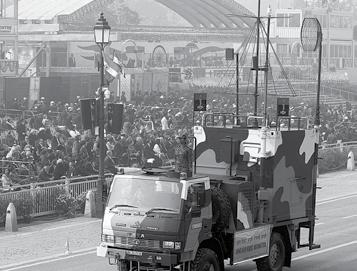
Secure and efficient communication is vital for modern military operations. The Network for Spectrum (NFS) and Defence Communication Network (DCN) are transformative projects that modernise the Indian Armed Forces’ communication infrastructure. Together, they strengthen India’s defence capabilities, ensuring readiness for modern challenges.
Imagine the radio spectrum as an invisible highway in the air all around us. This highway is divided into many lanes and each lane is a different frequency. Just like different types of vehicles use different lanes on a real highway, different types of wireless communications use different frequencies on this invisible highway.
It is a natural resource, like air or water but one cannot see it, it ranges from very low frequencies to very high frequencies and different parts of this spectrum are suitable for different uses.
Mobile phones use specific lanes (frequencies) on this invisible highway to send and receive calls, texts and data. Wi-Fi or the home internet router uses another set of lanes to connect your devices wirelessly. TV and Radio broadcast stations use other parts of this spectrum to send their signals to your devices. Even communications with satellites use certain frequencies in this spectrum. Military, emergency services, police, Railways, fire departments and ambulances have their own reserved lanes for critical communications.
The spectrum is the medium through which all wireless communication travels. Different services require different amounts of this spectrum (wider or narrower lanes). There is a limited amount of usable spectrum, so it needs to be carefully managed and allocated. As technology advances (like from 3G to 4G to 5G), it often requires new or different parts of the spectrum.
Just like traffic laws govern real highways, governments and international bodies regulate this invisible spectrum highway to prevent interference and ensure fair and optimal use.
The Indian NFAP is a key central policy roadmap document that outlines the allocation, utilisation of the radio-frequency
spectrum and defines future spectrum usage by all bodies in India. Managed by WPC Wing of the Ministry of Communications, the NFAP is essential for the orderly development and management of wireless communications, including mobile telecommunications. The plan is designed to align with international regulations and standards, set by the International Telecommunication Union (ITU), while addressing the specific needs of the Indian telecommunications sector.
The NFAP is updated periodically to reflect changes in technology, demand and international agreements. The latest version, NFAP-2022, provides a comprehensive framework for the allocation and use of the radio-frequency spectrum for various services, including mobile, broadcasting, satellite and defence. National Frequency Allocation Plan of the Government of India specifies as to which set of frequencies will be used for which service and these frequencies are termed as ‘Spectrum’.
High-speed networks are crucial for modern battle management for several key reasons:
n Real-Time Situational Awareness: It enables rapid sharing of battlefield intelligence, including enemy positions, troop movements and terrain information. This capability allows commanders to make informed decisions based on up-to-date information.
n Faster Decision-Making: It reduces the time between observation, orientation, decision and action (OODA loop) and enables forces to outpace the enemy’s decision-making process.
n Improved Coordination: It facilitates seamless communication between different units and branches of the military and enhances joint operations and combined arms tactics.
n Data-intensive Applications: It is necessary to support highbandwidth applications like live video feeds from drones or
Abbreviations at the end of the yearbook

While the creation of joint structures across the world has not necessarily resulted in reduction in manpower or equipment across the board, what jointness has certainly achieved across the board has been enhanced efficiency and effectiveness in operations
With almost 15,100 kms of land frontiers, over 7,500 kms of sea frontiers and two nucleararmed adversaries with whom India has long-standing territorial disputes, India is faced with major security challenges. The magnitude of these challenges in the face of limited resources requires synergising the disparate security capacities resident in the various agencies and departments under the Government of India. Institution of Integrated Theatre Commands (ITC) is a crucial step in this direction and has been under deliberation in India since the creation of the Andaman & Nicobar Command (ANC) in 2001. However, various factors, especially organisational inertia, bureaucratic hubris and lack of consensus amongst the leadership in the armed forces has prevented this crucial re-structuring from taking place.
Of late, public discourse around the creation of theatre commands has tended to be driven by four factors: the savings in terms of manpower and equipment that will accrue from this restructuring; the demand for an Indian model of jointness; the assertion that the Indian Armed Forces have done well thus far without theatre commands; whether jointness is better engendered bottoms-up or top-down; and apprehensions that the Indian Army could dominate joint structures at the expense of the other two Services. This article will address each of these four rocks on which the ship of jointness seems to have foundered thus far.
for Theatre Commands –Efficiency and Effectiveness, not Cost-Effectiveness
Coming to the first issue – the strong focus on savings in manpower and equipment that joint commands will engender. It is very often overlooked that the rationale for creation of Theatre Commands was operational efficiency and effectiveness in operations, not cost-effectiveness, which should be a by-product of jointness, not the end state. This discussion is also driven by the fact that costeffectiveness is easy to quantify, whereas combat effectiveness is
not that easy to measure and is best quantified during or after an operation or war.
The concept of a ‘theatre of war’ evolved in the wake of the Napoleonic wars of the late 18th and early 19th centuries, which were, until then, the largest wars fought in both space and force terms. The realisation that unity of command was essential to ‘synchronise and synergise operations’ across a wide geographical area of combat led to ‘theatres of war’ being established under a theatre commander in every major subsequent war, commencing with the American Civil War (1861-65), the Russo-Japanese War (1901-05), World Wars I and II. Interestingly, both Germany and Japan did not establish theatres of war during World War II and was one of the several reasons for their ultimate defeat.
In the Indian context, the situation was very different. India was a single ‘theatre of war’ under British colonial rule – hence the head of the Indian Army was given the title of ‘Commander-in-Chief in India’ (C-in-C, India). C-in-C, India had an operational role, with duties relating to logistics support and supply of equipment being handled by Whitehall in London, some of which were subsequently delegated to the Military Department (later Defence Department), under the Viceroy of India. This arrangement was modified during the Second World War, with Indian forces involved in operations against the Japanese coming under the South East Asia Theatre Command (SEAC) from 1943-45. After independence, the heads of the Indian Army, Indian Navy (IN) and Indian Air Force (IAF) retained the designation of Commander-in-Chief of their respective armed forces. However, they were re-designated as Chiefs of Staff through an Act of Parliament in 1955 – the title of C-in-C being transferred to Commanders of individual army, navy, and air force commands, thereby correctly reflecting their operational role.
Within this seemingly innocuous change of designation lies a major rationale for the creation of theatre commands. The designation of Commander-in-Chief denotes an individual placed in command of a geographical area for the purpose of conduct of operations in that area. However, a Chief of Staff denotes an indi-
GET YOUR COPY NOW!
Abbreviations at the end of the yearbook
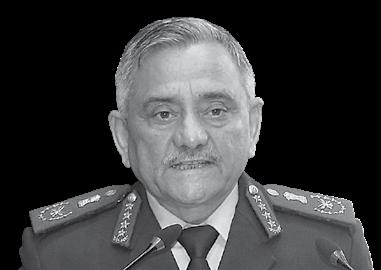
Integrated Defence Staff (IDS) acts as a point organisation for Jointmanship in the Minister of Defence which integrates policy, doctrine, warfighting and procurement by employing best practices. It is responsible for fostering coordination and enabling prioritisation across the different branches of the Indian Armed Forces.
Ending 20 years of debate and dithering, on August 15, 2019, Prime Minister Narendra Modi announced the decision to appoint the Chief of Defence Staff (CDS). The CDS will be the single point for military advice to the government and achieve jointness amongst the armed forces.
The National Democratic Alliance (NDA) government completed its first tenure in May 2019. It would be useful to assess as to how far the government has been able to achieve broad objectives of ushering
in jointness and integrating the defence forces since taking over the reins in May 2014. When the new government was installed in May 2014, there were hopes and expectations that Prime Minister Narendra Modi’s administration would hasten some of the critical reforms that had been articulated earlier. The earlier NDA government (under Prime Minister A.B. Vajpayee) had initiated defence and national security reforms after the Kargil conflict consequent to which HQ Integrated Defence Staff (HQ IDS) was established in 2001 for tak-






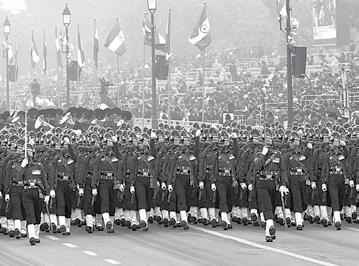
Indian Army needs to transform itself for the future, through technological improvements coupled with new joint operational doctrines and innovative operational art, which is vital for preserving India’s sovereignty and furthering its national interests
Wars in distant lands provide great opportunity for armed forces at home. They provide an opportunity to observe innovative warfighting techniques and tactics, showcase new armament, equipment and munitions and reveal path-breaking ISR capabilities, without actually getting embroiled in wars. The Indian Army today has this unique opportunity to learn valuable lessons from two wars that are at the opposite ends of the spectrum. The nearly three-years long war in Ukraine is as conventional as it gets and the war being waged by the IDF in Gaza and Lebanon is but a complex war against terror. As India strives to achieve the status of a developed nation, Viksit Bharat by 2047, the Indian Army remains its firmest pillar that underpins its unity and territorial integrity. India has endured multiple challenges and undergone many transformations in the past to be battle ready to confront the enemy within and without. In a rapidly evolving global landscape, it needs to transform itself through technological improvements coupled with new operational doctrines and training befitting its global stature and expanding sphere of influence.
The history of the Indian Army can be traced back to the period post the First War of Indian Independence 1857 when the three provincial armies of Bengal, Bombay and Madras were united and reorganised with Major Stringer Lawrence as its first Chief. The final shape and professional restructuring of the Indian Army before the onset of the First World War was carried out under General Kitchner, the Commander-in-Chief from 1902. At the start of the WW-I the strength of the Indian Army was about 1,50,000 men. It increased tenfold in numbers for the Great War of 1914-18. Over one million Indians served overseas. After WW-I, it was rapidly demobilised. By the time the Second World War started in September 1939, it had an effective strength of 1,94,373 which expanded to over 20,00,000 by the time WW-II ended in August 1945.
On gaining independence on August 15, 1947, the active strength of the British Indian Army along with countrywide movable and
immovable assets was shared between India and Pakistan under a complicated scheme, supervised by an Armed Forces Reconstitution Committee under the Chairmanship of Field Marshal Auchinleck.
The late announcement of the Boundary Award on August 16, 1947 led to the tragedy of partition witnessing killings and looting on a gargantuan scale. Out of the fourteen million refugees involved in the migration, about half a million died. Meanwhile the exercise of nation building under Sardar Patel had started. Except for three, most of the 562 odd Princely States merged with India in accordance with the laid down directives. But much before the state of Jammu and Kashmir (J&K) could exercise its option, armed Pakistani frontier tribesmen backed by Pakistan’s regular troops invaded the State in October 1947 with a view to annex it. These kabaelis (tribesmen) soon crossed over into Kashmir to precipitate an undeclared war with India. The Indian Armed Forces reacted immediately after the Maharaja of Jammu and Kashmir signed the Instrument of Accession on October 26, 1947. A massive airlift operation was undertaken starting October 27, 1947 to mobilise Indian Army soldiers into Kashmir. The marauders were hounded out of the Valley in a series of tactical engagements. Finding its forces withdrawing from Jammu and the Valley, Pakistan launched a fresh offensive through the Northern Territories in February 1948. Ridding the main portions of Jammu province and the Valley of Pakistani presence took more than a year and the entire operation ultimately took up more than 80,000 troops.
Before the remaining areas occupied by Pakistan could be liberated by Indian troops, a ceasefire came into effect on January 1, 1949. After bitter fighting lasting 14 months, UN mediation brought about an uneasy truce and the ceasefire line (CFL) later re-designated as the Line of Control (LoC) came into being. The Kashmir War gave the Indian Army its first experience of high-altitude operations amidst snow, ice and extreme cold conditions.
TO READ THE COMPLETE ARTICLE
GET YOUR COPY NOW!
Hyderabad had also signed a ‘Standstill Agreement’ for one year at the time of India’s Independence, attempting to decide
T-90S (Bhishma)
Characteristics
Crew : 3
Cbt weight : 46.5 tonne
Width, over tracks : 2.22 m
Height (over turret)
Roof : 3.78 m
Country of origin: Russia
Engine : V-84MS four-stroke 12-cylinder multifuel diesel engine, developing 840 hp
Road range : Paved road – 650 km, Unpaved - 500 km
Armament &
Ammunition
Main : 1 x 125mm 2A46M SBG which fires an ATGM as well as conventional ammunition. Has a laser range finder and thermal imaging night sight [43 (22 - in autoloader) rounds] Coaxial: 1 x 7.62mm PKT MG (2,000 rounds) AA: 1 x 12.7mm MG (300 rounds)
Main gun rate of fire : 8 rounds/min
Protection : Armour plating + ERA (explosive reactive armour) NBC protection
Fire Control &
Observation : Commander IFCS, Gunner FCS, Driver IR night viewer
Note: Manufactured in India by HVF Avadi under license.
T-72M-1 (Ajeya)
Characteristics
Crew : 3
Cbt weight : 44.5 tonne
Height (turret roof) : 2.23 m
Country of origin: Russia
Note: Other improvements include explosive reactive armour, integrated fire detection and suppression system and GPS.
Arjun Country of origin: India
Characteristics
Crew : 4
Cbt weight : 58.5 tonne
Overall length : 0.190 m
(With gun forward)
Overall height : 3.03 m (With AD gun mount)
Overall width : 3.864 m
Ground pressure : 0.85 kg/cm²
Armament Main : 1 x 120mm Rifled gun
AA: 1 x 12.7mm MG
Coaxial: 1 x 7.62mm MG
Main gun ammunition : 42 rounds (HESH/FSAPDS)
Main gun rate of fire : 8 rounds/ minute
Fire control : Director type & electro-hydraulic system & gun control
Night vision : Thermal imaging
Ballistic computer : Digital
Engine : MTU 838 Ka 501 10-cylinder liquid cooled diesel developing 1,400 hp at 2,500 rpm
Transmission : 4 Fwd+ 2 rev, Torque converter, Mech. Lockup clutch & hydrodynamic retarder
Steering : Double radii, Mechanical steering with neutral turn
Suspension : Indigenously developed hydro-pneumatic suspension system
Fuel : Renk transmission DHPP (A)
Engine : Up rated V46-6 engine; a 12-cylinder 4-stroke, V 60 turbocharged, watercooled, multi-fuel, direct injection engine developing 1,000 hp at 2,000 rpm.
Power to weight ratio : 22.98 hp/tonne
Max speed (on road) : 60 kmph
Max speed (Cross country) : 35 to 45 kmph
Gradient ability : 60°
Vertical obstacle : 850mm
Trench crossing : 2.6 to 2.8 m
Shallow fording : 1.2 m
Armament Main : 1 x 125mm SBG coaxial: 1 x 7.62mm
MG, AD: 1 x 12.7mm MG
Elevation/depression : 16° to -6˚
Traverse : 360°
Max range : 3 km
Main gun rate of fire : 8 rounds/min
Ammunition loading : Auto
Ammunition stowage : 44 projectiles/charges
Track : Original by Diehl L-German/Now by L&T
Max speed : Road: 70 kmph, Cross country: 40 kmph
Shallow fording : 2.15 m
Vertical obstacle : 0.914 m
Trench crossing : 2.43 m
Gradient : 35°
Infantry Fighting Vehicles (IFVs)/ Recce Vehs
BMP-2
Characteristics
Crew : 3+7
Country of origin: Russia/OF Medak
Weight : 14,300 kg
Length : 6.735 m
Width : 3.15 m
Height : 2.45 m
Armament Main : 1 x 30mm Auto Cannon (500 rounds) 2A42 and 9M113 Konkurs ATGM
Coaxial (Both): 1 x 7.62mm PKT MG (1,000 rounds)

The Indian Navy is leading the drive of ‘Atmanirbhar Bharat’. It has moved steadily on the path of indigenisation and today, almost all the warships and submarines being inducted into the Indian Navy, from patrol boats to aircraft carriers and submarines, are designed and built in India.
The maritime traditions of India can be traced back to the time of the Indus Valley civilisation with archaeologists discovering that a basin dating back to 2400 BC, discovered in Lothal, Gujarat was the world’s first dry dock. Historiographical evidence indicates that Indian trade and culture were carried across the seas, both to the West and East, during antiquity. This sea trade existed during the time of the Mauryan Empire in the 4th Century BCE and extensive maritime interaction continued during the rule of later dynasties such as the Satavahanas, Pallavas, Chalukyas, Kalingas, Pandyas, Cheras and Cholas. The epics of the Ramayana and Mahabharata spread by Indian seafarers can, even today, be seen in temple murals and carvings. India reached the peak of its maritime power under the Chola empire (30 BCE to around 1300 CE), which in the 11th century CE encompassed parts of South East Asia. The beginning of the 13th century CE, however, saw the weakening of India’s maritime tradition, coinciding as it did with the advent of Muslim invasions of the Indian sub-continent, first from West Asia and subsequently from Central Asia. The Mughals, in particular, did not have any maritime inclination or recognition of the importance of the seas. Consequently, after Vasco da Gama discovered the sea route from Europe to India in 1498, successive waves of Europeans – who came to trade, but remained to colonise - faced little resistance. Of these, the British through the East India Company emerged as the most powerful European nation, which ended in their colonising India and making it the ‘jewel in the crown’ of the British Empire. As succinctly stated by Sardar K.M. Panikkar in his masterpiece ‘India and the Indian Ocean’ “In fact it may be truly said that India never lost her independence till she lost command of the sea in the first decade of the sixteenth century”.
The growth of the Indian Navy post-Independence, centred around the remnants of a Navy established by the British to safeguard their interests, has been remarkable. In the first two
decades after independence, the Indian Navy acquired several blue water platforms, including two cruisers Delhi and Mysore, as well as the aircraft carrier Vikrant, from the United Kingdom. In parallel, a major thrust was launched to achieve ‘self-reliance through indigenisation’, with the establishment of a Corps of Naval Constructors in 1956 and Naval Design Directorate to commence warship design in India. Building of patrol craft started in newly set-up Defence PSUs in the early 1960s and progressed to the indigenous construction of frigates with necessary technology transfer from foreign partners. From the late 1960s, a number of ships, submarines and aircraft were also acquired from the erstwhile Soviet Union, to make up shortfalls in the force levels. India’s first entirely indigenously designed and built ship, INS Godavari, was commissioned in 1983. Since then, the Indian Navy has moved steadily on the path of indigenisation and today, almost all the warships and submarines being inducted into the Indian Navy, from patrol vessels to aircraft carriers and submarines, are designed and built in India.
Major Operations of the Indian Navy from Independence to 1965
The Indian Navy’s first major operation was the liberation of Junagadh in 1948. In 1961, the Indian Navy played a key role in the liberation of Portuguese colonies Goa, Daman and Diu, by sinking the Portuguese frigate Afonso de Albuquerque off Goa in a short and sharp gun battle, bombarding the Diu fortress as well as capturing the garrison on Anjadip Island. In the 1965 Indo-Pak war, the Navy remained in a defensive posture on both West and East coasts, and was not deployed in offensive action by the Government of India. Following the 1965 war, the Navy underwent a major expansion and modernisation and the next few years saw the induction of missile boats and submarines from the USSR, anti-submarine warfare (ASW) helicopters from the UK, construction of new naval bases, greater impetus given to the indigenous ship construction programme, and the formation of a second Fleet on the East coast, named as the Eastern Fleet.
Indian Designation : Shishumar Class
Total No. in Service : 4
Names : Shishumar, Shankush, Shalki, Shankul
Specifications
Displacement (tonnes) : 1,687 surfaced; 1,880 dived
Dimensions (metres) : 64.4 (length) X 6.5 (beam) X 6 (draught)
Propulsion : Diesel-electric 4MTU 12V 493 AZ80 GA31L diesels; 2400 hp(m); 4 Siemens alternators; 1.8 MW, 1 Siemens motor; 4600 hp(m); 1 shaft
Speed (knots) : 11 surfaced, 22 dived
Range (miles) : 8,000 snorting at 8 knots; 13,000 surfaced at 10 knots
Complement : 40 (8 officers)
Torpedoes : 8 x 21 inch (533mm) tubes. 14 x AEG
SUT Mod 1 .
Missiles : Anti-ship Exocet missiles retrofitted on all submarines.
Mines : External strap-on type for 24 mines
Countermeasures : Decoys; C303 acoustic decoys ESM
Argo Phoenix II AR 700 or Koll Morgen
Sea Sentry, radar warning
Weapon Control : CCS 90-1/ISUS 90
Radars : Surface Search, Thomson-CSF Calypso; I-Band
Sonars : Thales 2272; hull-mounted; passive/ active search and attack; MF. Thomson Sintra DUUX-5; passive ranging and intercept
Kilo Class (Project 877 EKM) Submarines
Indian Designation : Sindhughosh Class
Total No. in Service : 7
Names (with pennant nos in brackets) : Sindhughosh (S55), Sindhuraj (S57), Sindhuratna (S59), Sindhukesari (S60), Sindhukirti (S61), Sindhuvijay (S62) and Sindhushastra (S65)
Displacement (tonnes) : 2,362 surfaced; 3,125 dived
Dimensions (metres) : 72.6 (length) x 9.9 (beam) x 6.6 (draught)
Propulsion (diesel electric) : 2 Model 4-2DL-42M diesels; 3,650 hp(m); 2 generators; 1 motor; 5,900 hp(m); 1 shaft; 2 MT-168 auxiliary
motors; 204 hp(m); 1 economic speed motor; 130 hp(m)
Speed (knots) : 10 surfaced; 9 snorting; 17 dived
Range (miles) : 6,000 at 7 kt snorting; 400 at 3 kt dived
Complement : 52 (13 officers)
Torpedoes : 6-21 in (533mm) tubes. Combination of Type 53-65; TEST 71 ME. Total of 18 weapons. Wire-guided torpedo on two tubes.
Other Weapons : 24 DM-1 mines in lieu of torpedoes, some submarines carry shoulder fired SA-N-10 Igla SAM launcher placed in fin for use when on surface.
Countermeasures : ESM; squid head radar warning, Porpoise (Indigenous)
Weapon Control : Uzel MVU-119EM TFCS
Radars : Navigation: Snoop Tray; MRP-25 I-Band
Sonars : MGK-400 and MGK-400 E, MG-519;. Being replaced by BEL USHUS, fitted on five EKM and, in a progressive manner on all submarines.
Operational : The Sindhughosh class submarines were inducted into service between 1986 and 2000. They have progressively undergone midlife modernisation refits commencing 1997, which includes installation of the Club anti-ship and land attack cruise missile and the associated Lama fire control system, new sonars, electronic warfare systems, machinery control systems and an automated information and control system for the weapon package. One submarine is expected to be fitted out with BrahMos cruise missiles, the surface version of this Indo-Russian 290-km-range supersonic missile.
Scorpene Class (Project 75) Submarines
Indian Designation : Kalvari Class
Names : Kalvari, Khanderi, Karanj, Vela, Vagir
Pennant Nos : S21, S22, S23, S24, S25
Dates of Commissioning : December 14, 2017, September 28, 2019, March 10, 2021, November 25, 2021, January 23, 2023
Displacement (tonnes) : 1,615 surfaced; 1,775 dived
Total No. In Service : Five
Names : Kalvari, Khanderi, Karanj, Vela, Vagir

Changing character of war and technological advancements reinforce the importance of multi domain operations. Hybrid and Grey Zone warfare will continue to have their impact. Current dynamic scenarios demand that the Indian Air Force is ready to undertake operations across the full spectrum of conflict. Thus, the IAF needs to keep pace with technology, evolving character of war to remain relevant and future ready.
In view of the evolving geopolitical situation and changing global order, India’s neighbourhood continues to remain volatile and uncertain. China has been significantly modernising its Air Force and strengthening deployments of its air assets at major air bases close to the Line of Actual Control (LAC), including its fifth generation J-20 fighters and H-6 bombers. While there has been a breakthrough between the two countries on patrolling rights in Depsang and Demchok, we continue to operate in the grey zone most of the time. All future operations will be undertaken simultaneously across multiple domains. Hybrid warfare remains a favourable option in our neighbourhood due to anonymity and cost effectiveness. The Indian Air Force (IAF) will be expected to contribute across the full spectrum of conflict. Air power has the capability to deter, defend and if required punish the adversary in a conflict. Thus, the IAF needs to realign and transform to keep pace with technology, to remain relevant, it needs to be future ready.
The focus over the coming years would be to enhance the combat potential of the fleet both in terms of numbers and lethality, bolster air defence systems by induction of modern sensors and weapons as well as networking, enhance airlift and heli-lift capability, strengthen the Cyber and Space capabilities and induct UAVs designed to support and supplement air operations to meet future challenges to national security.
The IAF was officially established on October 8, 1932. On April 1, 1933, ‘A’ Flight of No. 1 (Army-Co-operation) Squadron was raised at Drigh Road, Karachi with six officers, 19 Hawai Sepoys (air soldiers) and four Westland Wapiti IIA aircraft. The fledgling IAF went into action for the first time in 1937 during operations in the then North West Frontier Province.
During World War II, No. 1 Squadron with 12 Westland Lysander aircraft, was moved to Burma on February 1, 1942. Each aircraft car-
ried a pair of 250 lb bombs and flew low level un-escorted missions against 20 Japanese air bases. However, when Rangoon fell to the Japanese in April 1942, the Squadron was relocated to Risalpur and was reequipped with Hawker Hurricane IIB fighters. The IAF expanded rapidly growing to nine squadrons by the end of 1944 and played a major role in the Arakan offensive which began in December 1944. In March 1945, in recognition of the outstanding performance, 22 personnel of IAF were awarded Distinguished Flying Crosses and the prefix ‘Royal’ was added to its title. The IAF was thereafter known as the Royal Indian Air Force (RIAF).
In 1946, the RIAF squadrons were reequipped with the Hawker Tempest II, which is remembered as ‘the IAF’s first true fighter bomber’. The first RIAF transport unit, No. 12 Squadron, was also formed and was equipped with Douglas C-47 Dakota twin-engine transport aircraft.
When India attained independence on August 15, 1947, some RIAF units were transferred to Pakistan. The Squadrons that remained with India were Nos. 3, 4, 7, 8 and 10 equipped with Tempests, No. 2 Squadron with Spitfires and No.12 Squadron with Dakotas.
For the RIAF it was baptism by fire, post-independence, on October 27, 1947, the RIAF initiated a remarkable feat with Dakotas from Palam airfield to airlift Indian forces to Srinagar to thwart attempts by Pakistan supported tribal invaders wanting to wrest control of the Valley from India.
On January 26, 1950, India became a Republic and the RIAF dropped the prefix ‘Royal’. The modernisation process began in 1948 with the arrival of the de Havilland Vampire single-engine fighter aircraft from Britain, the first combat jet to be inducted into the IAF. This was followed by the induction of other combat jets such as the Ouragan (renamed as Toofani) and the Mystere from France as also the Canberra, Hunter and Gnat from Britain. All these combat aircraft entered service in the 1950s.
NATO reporting names : Fishbed and Mongol (trainer version)
Country of origin : Russia / CIS. Manufactured under license In India by the HAL
Type
: Single-seat multi-role fighter
Number in Service : 35 (Approx)
Year of Induction : Commencing in 1964
Construction
Wings : Delta plan form with a 2° anhedral and 57° sweepback with small boundary layer fences at tips. Large blown plain trailing edge flaps.
Power Plant
: The MiG-21 Bison is powered by a Tumansky R-25-300 turbojet rated at 15,000 lb static thrust with reheat.
Fuel : Internal fuel capacity 2,750 litres with provision for drop tanks under fuselage and wing pylons.
Cockpit : KM-1M ejection seat with 0-130 kmph capability.
Avionics and Equipment : IAF operates one squadron of Bison. The upgraded Bison is equipped with the Kopyo multi-mode radar, ring laser based inertial GPS and semi glass cockpit.
Armament : One twin-barrel 23mm GSh-23/2 cannon with 250 rounds, KAB series of bombs, and 80 mm rockets. In addition, the Bison carries R-73 and R-77 air-toair missiles.
Dimensions
Wingspan : 7.15 m
Length : 16.10 m, including pilot boom
Height : 4.5 m
Wing area : 23.45 m²
Weights
Take-off (combat) : 8,750 kg
Max take-off : 10,500 kg
Performance
Max speed
Above 10,000 m: Mach 2.23
At sea level : Mach 1.1
Combat radius (lo-lo-lo) : 390 km
Max rate of climb: 6,500 m/min
G Limits : + 7/–1.5
NATO reporting name : Fulcrum
Country of origin : Russia
Type : Single-seat air superiority fighter
Number in Service : 53 (Three squadrons)
Year of Induction : 1986
Construction
Wings : Low-wing monoplane. Leading edge swept back at 42°, with large ogival wing roots. Leading and trailing edge flaps without tabs.
Power Plant : Two Tumansky RD-33 series 3M turbofans each with thrust rating of 11,250 lb dry and 18,500 lb reheat. FOD doors in each air intake duct actuated automatically with raising/lowering of nose-wheel on take-off/landing run. Total internal fuel capacity of 4,000 litres with a provision for a single 750-litre drop tank to be carried between engines underbelly.
Cockpit : K-36D zero-zero ejection seat in a pressurised and air-conditioned cockpit. Cockpit is high set and features a twopiece blister design.
Avionics : Zhuk-M2E multi-mode active phased array radar, OLS-UEM forward looking optronic search and track system, glass cockpit with HOTAS compatible flight controls, Safran Sigma N-95 navigation system, Helmet mounted display, AoA indicator, radar altimeter, 3-axis auto stabilisation system, auto pilot and D-29 EW suite.
Armament : 1 GSh-301 30mm cannon in port wing root, with 150 rounds. Up to six AAMs including R-73, R-27R, R-77, R-27ET. Alternate loads of ground attack weapons with a total weight of 4000 kg on six external hard points.
Dimensions
Wingspan : 11.40 m
Length overall : 17.34 m
Height overall : 4.75 m
Wing area : 35.35 m²
Weights
Empty : 8,340 kg
Normal Interceptor
role : 15,750 kg
Max take-off : 20,000 kg
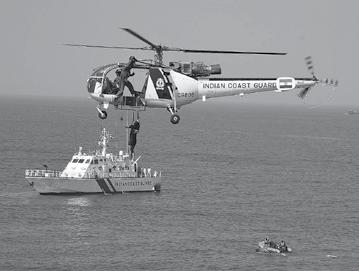
Indian Coast Guard (ICG) is a multi-mission organisation, conducting round-the-year real-life surface and air operations at sea, to protect and preserve our oceans as well as India’s Exclusive Economic Zone (EEZ).
Constituted as an Armed Force of the Union of India by an Act of Parliament on August 18, 1978, ICG (ICG) predominantly undertakes the peacetime tasks of ensuring the security of the Maritime Zones of India, in order to protect India’s maritime and other national interests in such zones and matters connected therewith. ICG functions under the Ministry of Defence, primarily for peacetime functions. It has a military function during war, when it conjoins with the Indian Navy. ICG, which began its journey with two old Frigates seconded from the Indian Navy and five patrol vessels seconded from the Central Board of Excise and Customs, is today a large force of 170 surface craft that range from Offshore Patrol Vessels (OPVs) to tiny high speed Interceptor Boats and Air Cushion Vehicles and about 70 aircraft consisting of fixed wing aircraft and helicopters.
The Coast Guard Act, 1978 defines the roles of ICG as follows:
n To protect the maritime and other national interests in the Maritime Zones of India.
n Ensuring the safety and protection of artificial islands, offshore terminals, installations and other structures and devices in any Maritime Zone.
n Providing protection to fishermen including assistance to them at sea while in distress.
n To preserve and protect the maritime environment and to prevent and control marine pollution.
n Assisting the customs and other authorities in anti-smuggling operations.
n Necessary measures for the safety of life and property at sea
n Undertake collection of scientific data.
Many additional responsibilities have been assigned to ICG since its inception. Besides the duties and functions provided in the CG Act 1978, the ICG supports other Ministries, as provided by various pieces of legislation enacted by the Government of India.
n Lead Intelligence Agency for coastal and sea borders.
n Authority responsible for co-ordination of Coastal Security in territorial waters.
n Search and Rescue for Merchant vessels.
n Marine Oil Pollution Response Measures.
In pursuance of its missions, the Director General Indian Coast Guard (DGICG) has also been designated as:
n Chairman, National Maritime Search and Rescue Board (NMSARB).
n Chairman, National Oil-spill Disaster Contingency Plan Committee (NOSDCP).
n Chairman, Offshore Security Co-ordination Committee (OSCC).
n Indian Governor to Regional Cooperation Agreement on Combating Piracy and Armed Robbery Against Ships in Asia (ReCAAP).
n Commander, Coastal Command under Coastal Security. These duties are carried out by the ICG over an Exclusive Economic Zone (EEZ) measuring 2.01 million sq kms and Indian Search & Rescue Region spanning 4.2 million sq kms. It is entrusted with the responsibility of ensuring the safety and security of our 12 major ports and 187 minor ports.
The Headquarters of the Coast Guard is located at New Delhi. Operational functions are executed by a Coast Guard Commander, Western Seaboard at Mumbai, Coast Guard Commander, Eastern Seaboard at Visakhapatnam and by the five Regional Headquarters located at Gandhinagar, Mumbai, Chennai, Kolkata and Port Blair. Under these Regional Headquarters, there are 15 District Headquarters located along the coastal states and Union Territories. In total, there are 42 Coast Guard Stations. In addition, there are Air Stations at Daman and Chennai, Air Enclaves at Goa, Kochi, Kolkata, Porbandar, Port Blair, Bhubaneswar and New Mangalore and an independent Air Squadron at Mumbai. The organisational chart of the ICG, the structure of the service and a pictorial depiction of the organisation are shown in the subsequent pages.
Surface Platforms
Patrol Vessels (OPVs) Samar Class
Total Number in Service : 4
Specifications
Make : Indian built
Displacement
(in tonnes) : Light 1,604, Deep 1,938
Dimensions
(LOAxBxD) : 102 x 11.5 x 3.5 m
Flight Deck : Integral Helicopter
Main Machinery : 2 Diesels, 4,710 kW each
(SEMT PIELSTICK 16 PA6V280)
Speed (Knots) : 22
Range (N miles) : 6,000 at 15 Knots
Complement (crew) : 128 (including 15 Officers)
Offshore Patrol Vessels (OPVs) Sankalp Class
Total Number in Service : 2
Specifications
Make : Indian built
Displacement
(in tonnes) : Light 1,830, Deep 2,325
Dimensions
(LOAxBxD) : 105 x 12.9 x 3.64 m
Flight Deck : Integral Helicopter
Main Machinery : 2 Diesels, 7,710 kW each
(SEMT PIELSTICK 20 PA6BSTC)
Speed (Knots) : 23.5
Range (N miles) : 6,500 at 12 Knots
Complement (crew) : 128 (including 15 Officers)
Offshore Patrol Vessels (OPVs) Vikram Class (New)
Total Number in Service : 6
Specifications
Make : Indian built
Displacement
(in tonnes) : Light 1771.6, Deep 2,094
Dimensions
(LOAxBxD) : 98.2 x 14.7 x 3.52 m
Flight deck : Integral Helicopter
Main Machinery : 2 Diesels, 9100 KW each (MTU, 20V 8000 M90)
Speed (Knots) : 26
Range (N miles) : 5,000 at 12-14 Knots
Complement (crew) : 102 (including 14 Officers)
Offshore Patrol Vessels (OPVs) Vishwast Class
Total Number in Service : 3
Specifications
Make : Indian built
Displacement
(in tonnes) : Light 1,605, Deep 1,964
Dimensions (LOAxBxD) : 94 x 12.6 x 3.6 m
Flight deck : Integral Helicopter
Main Machinery : 2 Diesels, 9,000 kW each (MTU 20 V 8000 M90)
Speed (Knots) : 26
Range (N miles) : 4,500 at 12-14 Knots
Complement (crew) : 110 (including 10 officers)
Offshore Patrol Vessels (OPVs) Samarth Class
Total Number in Service : 11
Specifications
Make : Indian built
Displacement (in tonnes) : 2350 (approx) at full load displacement
Dimensions (LOAxBxD) : 105 x 13.60 x 3.65m
Flight Deck : Integral Helicopter
Main Machinery : 2 Diesels, 9100 KW each (MTU, 20V 8000 M90)
Speed (Knots) : 23
Range (N miles) : 6,000 at cruising speed (12-14 Knots)
Complement (crew) : 112 (including 14 officers)
Pollution Control Vessels (PCVs) SamudraPrahari Class
Total Number in Service : 3
Specifications
Make : Indian built
Displacement (intonnes) : Light 3,196, Deep 3,946
Dimensions (LOAxBxD) : 94 x 15.5 x 4.5 m
Flight deck : Integral Helicopter
Main Machinery : 2 Diesel Engine, 3000 KW each (Bergen B32, 40L6P) 2 Shaft Generator of 2100 KW 883 KW Ulstein Aquamaster bow thruster
TO READ THE COMPLETE ARTICLE GET YOUR COPY NOW!
Speed (Knots) : 20 (Ship is capable of cruising at 0.2 Knot speed during oil skimming mode with bow thruster)
Compiled by SP Guide Publications team (as on December, 2024)
President & Supreme Commander of the Armed Forces
Droupadi Murmu
Vice President ......................................................................................................................................... Jagdeep Dhankhar
Prime Minister Narendra Modi
Minister of Defence ................................................................................................................................ Rajnath Singh
Minister of State for Defence Sanjay Seth
Defence Secretary .................................................................................................................................. Rajesh Kumar Singh
Additional Secretary Dipti Mohil Chawla
Additional Secretary and Director General (Acquisition) .................................................................. Samir Kumar Sinha
Joint Secretary & Acquisition Manager (Maritime Systems) and CVO (MOD) Dinesh Kumar
Joint Secretary (Medical/Establishment/ Parliament) ....................................................................... Manish Tripathi
Joint Secretary (Land & Works) Rakesh Mittal
Joint Secretary (IC/AP, Ceremonial & CAO) Amitabh Prasad
Joint Secretary (Defence Policy, Armed Forces, CSD & Planning) .................................................... Satyajit Mohanty
Joint Secretary (Border Road & Coordination) Mayank Tiwari
Joint Secretary & Acquisition Manager (Air) ....................................................................................... Dharmendra Kumar Singh
Joint Secretary (International Cooperation) Vishwesh Negi
Joint Secretary (Training Division, Coast Guard, CISO & SSC).......................................................... Pawan Kumar Sharma
Additional Director General Acquisition Technical (Army) Major General Abhay Dayal
Additional Director General Acquisition Technical Manager (Maritime & Systems) ...................... Rear Admiral P.A.A.R. Sadiq
Additional Director General Acquisition Technical Manager (Air) Air Vice Marshal G.K. Mohan
Defence Finance
Financial Advisor (Defence Services)
Sugata Ghosh Dastidar
Additional Secretary & Financial Advisor (Acquisition) ..................................................................... Longjam Siddhartha Singh
Additional Financial Advisor (EL) & Joint Secretary Eddie Lalrinliana Khawlhring
Additional Financial Advisor (RS) & Joint Secretary Rajesh Sharma
Additional Financial Advisor (AR) & Joint Secretary .......................................................................... Amitabh Ranjan Sinha
Additional Financial Advisor (SK) & Joint Secretary Sanjay Kumar
Additional Financial Advisor (R&D) & Joint Secretary ....................................................................... Vedveer Arya
Finance Manager (Land System) Nishtha Upadhyaya
WHO’S WHO IN INDIAN DEFENCE
Name Designation
Rajnath Singh Defence Minister 104, South Block, New Delhi 23012286, 23019030 23015403 rmo@mod.nic.in
Amit Kishore Private Secretary to Defence Minister 105, South Block, New Delhi 23012286, 23019030 23018285 rmo@mod.nic.in
Amarendra Tiwari Additional Private Secretary to Defence Minister 107, South Block, New Delhi 23012286, 23019030 23015403 –
Krishnendra Pratap Singh Officer Special Duty to Defence Minister 102-G South Block, New Delhi 23012286, 23019030 23015403 –
Prabhat Kumar Tripathi Officer Special Duty to Defence Minister 102-G South Block, New Delhi 23012286, 23019030 23015403 –
Sanjay Seth Minister of State for Defence 114-A, South Block, New Delhi 23792128 23016255 mos-defence@gov.in
DEPARTMENT OF DEFENCE
Rajesh Kumar Singh Defence Secretary 101-A, South Block, New Delhi 23012380, 23011976 23010044 defsecy@nic.in
Amar Singh Chauhan Senior PPS to Defence Secretary 199-C, South Block, New Delhi 23012380, 23011976 23010044 –
Samir Kumar Sinha Additional Secretary and Director General (Acquisition) 137, South Block, New Delhi 23014219 23794721 dgacq-mod@nic.in
Dipti Mohil Chawla Additional Secretary 199-B, South Block, New Delhi 23017678 23019658 addlsecy-mod@gov.in
Dinesh Kumar Joint Secretary & Acquisition Manager (Maritime Systems) and CVO (MOD)
Manish Tripathi Joint Secretary (Medical/ Parliament/Establishment)
109-A, South Block, New Delhi 23016447 23015875 jsamms-mod@gov.in, cvo-mod@gov.in
198-A, South Block, New Delhi 23018832 23015444 jse@nic.in
Rakesh Mittal Joint Secretary (Lands & Works) 8-D South Block, New Delhi 23019474 23019480 jslw-mod@gov.in
Dr Ajay Kumar Joint Secretary & Acqusition Manager (Land Systems)
108-A,South Block, New Delhi 23011862 23013489 amls@nic.in
Satyajit Mohanty Joint Secretary (Defenc Policy, Armed Forces wing, CSD & Planning) 9, South Block, New Delhi 23792043 23013787 jsaf-mod@gov.in
Mayank Tewari Joint Secretary (Coordination & Border Roads)
Dharmendra Kumar Singh Joint Secretary & Acquisition Manager (Air)
Vishwesh Negi Joint Secretary (International Cooperation)
Amitabh Prasad Joint Secretary (IC/AP, Ceremonial & CAO)
198-B, South Block, New Delhi 23014222 23794602 jsmt-dod@gov.in
130-A, South Block, New Delhi 23014944 23017791 ama@nic.in
109-B, South Block, New Delhi 23011752 23013752 jspic@nic.in
110, South Block, New Delhi 23015952 23014673 ic-mod@gov.in
Pawan Kumar Sharma Joint Secretary (Training Division, Coast Guard, CISO & SSC) – 23015256 – –
Gaurav Agarwal CVO (MES & BRO)
Major General Abhay Dayal
Rear Admiral P.A.A.R. Sadiq Additional Director General Acquisition Technical (Maritime & Systems)
139, Kashmir House, New Delhi 23010161
cvomb-mod@gov.in
tmms-modacq@navy. gov.in
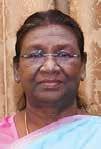
Droupadi Murmu President of India & Supreme Commander of the Armed Forces
Droupadi Murmu was sworn in as the 15th President of India on July 25, 2022. Previously, she was the Governor of Jharkhand from 2015 to 2021. She has devoted her life to empowering the downtrodden as well as the marginalised sections of society and deepening the democratic values.
Born in a Santhali tribal family on June 20, 1958 at Uparbeda village, Mayurbhanj, Odisha, Murmu went to Bhubaneswar on her own initiative to continue her studies. She earned the degree of Bachelor of Arts from Ramadevi Women’s College, Bhubaneswar and became the first woman from her village to receive college education.
From 1979 to 1983, Murmu served as a Junior Assistant in the Irrigation and Power Department,
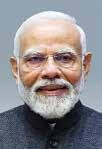
Narendra Modi was sworn-in as India’s Prime Minister for the third time on June 9, 2024, following another decisive victory in the 2024 Parliamentary elections. This victory marked the third consecutive term for Modi, further solidifying his leadership. The first ever Prime Minister to be born after Independence, Modi has previously served as the Prime Minister of India from 2014 to 2019, and from 2019 to 2024. He also has the distinction of being the longest serving Chief Minister of Gujarat with his term spanning from October 2001 to May 2014.
Narendra Damodardas Modi, is one of independent India’s most popular leaders. A ‘transformational leader’ known for delivering results, he is an embodiment of courage, conviction and compassion. He was re-elected Prime Minister of India by an overwhelming majority when he led BJP party and the NDA coalition to victory in the general elections in 2019. He took oath as the Prime Minister and formed his cabinet on May 31, 2019. Earlier, he became India’s 15th Prime Minister on May 26, 2014.
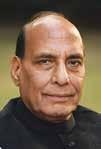
Rajnath Singh Minister of Defence
Born on July 10, 1951, Rajnath Singh completed his MSc Physics from Gorakhpur University and worked as a lecturer of Physics at K.B. Post-Graduate College Mirzapur. He was the organisational secretary of ABVP Gorakhpur division from 1969 to 1971 and became the RSS karyavah (General Secretary) of Mirzapur city in 1972. He entered politics in 1974 and in 1977, he was elected as an MLA in the Uttar Pradesh Assembly. He was elected MLC for Uttar Pradesh Legislative Council in 1988 and became Education Minister in 1991. During his tenure as Education Minister in UP, he established some landmarks by introducing the Anti-Copying Act and Vedic Mathematics in the syllabus. He became a member of the Rajya Sabha in 1994. On November 22, 1999, he
Government of Odisha. Later, she served as an honorary teacher at Sri Aurobindo Integral Education Centre, Rairangpur, from 1994 to 1997.
In 2000, Murmu was elected from the Rairangpur constituency as a Member of the Legislative Assembly of Odisha and continued to hold the post till 2009, serving two terms. With her rich administrative experience and thanks to her efforts to spread education in tribal societies, she carved a special identity for herself. She was appointed the Governor of Jharkhand on May 18, 2015. She was the first woman tribal Governor of a tribal-majority State.
Droupadi Murmu was associated with several tribal socio-educational and cultural organisations of Odisha. She is an avid reader and has keen interest in spirituality.
Born on September 17, 1950, Modi earlier held an impeccable track record as a Chief Minister, securing three consecutive two-third majority mandates for the Bharatiya Janata Party (BJP) in Gujarat in 2003, 2007 and 2012 Assembly elections. In his over 12 years tenure as the Chief Minister of Gujarat, Modi brought about paradigm shift in the lives of the people in Gujarat. In 2014, people of India gave him a mandate to take the nation forward.
Modi has reached the pinnacle by sheer hard work, determination, extreme focus and a strong character. His first brush with the RSS (Rashtriya Swayamsevak Sangh) was at the tender age of eight. At the age of 20, he became a Pracharak in 1972, devoting full time to the RSS. In 1987, he joined the BJP and on October 7, 2001, he took over as the Chief Minister of Gujarat. From heading a state, Modi has catapulted to heading the nation because of his organisational sense and his keen ability to efficiently construct any task.
became Union Surface Transport Minister. On October 28, 2000, he became Chief Minister of Uttar Pradesh. On May 24, 2003, he became Union Minister of Agriculture and subsequently for Food Processing. He became the BJP National President on December 31, 2005, a post he held till December 19, 2009. In May 2009, he was elected MP from Ghaziabad in Uttar Pradesh. On May 26, 2014, Rajnath Singh took oath as the Union Minister of India and worked as Union Minister for Home Affairs till May 30, 2019. On May 31, 2019, Rajnath Singh was allocated portfolio of Union Minister for Ministry of Defence.
TO READ THE COMPLETE ARTICLE GET YOUR COPY NOW!
Subsequent to the formation of the NDA Government after 2024 General Elections, Rajnath Singh has again been given the charge of Defence Minister.
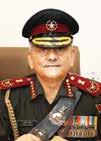
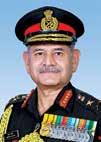
General Anil Chauhan Chief of Defence Staff (CDS) & Secretary DMA
General Anil Chauhan is an alumnus of the National Defence Academy, Khadakwasala. He was commissioned into the Sixth Battalion, the Eleventh Gorkha Rifles in June 1981, from IMA, Dehradun. The officer has vast experience in operations across a wide spectrum of conflict and terrain profiles. He commanded an Infantry Battalion, along the Line of Control in Jammu & Kashmir, a Mountain Brigade in Manipur, an Infantry Division in the Kashmir Valley and a Corps in the North East. The General was General Officer Commanding-in- Chief, Eastern
General Upendra Dwivedi
Chief of the Army Staff
General Upendra Dwivedi assumed command of the Indian Army on June 30, 2024. Prior to this, he was Vice Chief of the Army Staff from February 2024 onwards.
General officer has a unique distinction of balanced exposure along Northern, Western and Eastern Theatres, in varied terrain and operational environment including Deserts, High Altitude, Riverine, Built Up area, North East and Jammu and Kashmir.
He has varied staff exposures which includes handling conventional operations of Armoured Brigade in the Punjab plains, providing logistical support to a Mountain Division in North East along the Northern Borders and operations of a Strike Corps in Deserts. At IHQ HQ (Army), he contributed significantly in
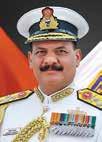
Admiral Dinesh K. Tripathi
Chief of the Naval Staff
Admiral Dinesh K. Tripathi assumed command of the Indian Navy on April 30, 2024 as the 26th Chief of the Naval Staff. He was the Vice Chief of Naval Staff, prior taking over the helm as Chief of the Naval Staff on April 30, 2024.
Admiral Dinesh K. Tripathi was commissioned on July 1, 1985 into the Executive Branch of the Indian Navy. A Communication and Electronic Warfare specialist, he has served on frontline warships of the Navy as Signal Communication Officer and Electronic Warfare Officer and later as the Executive Officer and Principal Warfare Officer of the Guided Missile Destroyer INS Mumbai.
Admiral Tripathi’s Sea Commands include INS Vinash, INS Kirch and INS Trishul. During his career
Command from September 1, 2019 to May 31, 2021. Post his retirement from active military service, the General served as a Military Advisor to the National Security Council Secretariat (NSCS) from October 20, 2021 to September 29, 2022. He was the Director General of Military Operations during the Balakot Air Strike. General Anil Chauhan is a graduate of the Defence Services Staff College, Wellington, the Higher Command and National Defence College courses. He assumed the appointment of the Chief of Defence Staff on September 30, 2022.
Military Secretary’s branch and was instrumental in raising of a section in Military Operations Directorate. Later, as the DG Infantry he steered and fast-tracked Capital procurement cases of weapons for all the three services, leading to significant and visible capability enhancement for our Armed Forces. As Deputy Chief, he gave impetus towards automation and absorption of niche tech in the Indian Army. Being a tech enthusiast, he worked towards enhancing the tech threshold of all ranks in Northern Command and pushed for Critical & Emerging Techs like Big Data Analytics, AI, Quantum and Blockchain based solutions.
The officer’s two overseas tenures include Somalia, as part of HQ UNOSOM II and Seychelles as Military Advisor to the Government of Seychelles.
spanning nearly 40 years, he has held various important operational and staff appointments, which include Fleet Operations Officer of the Western Fleet at Mumbai, Director of Naval Operations, Principal Director Network Centric Operations and Principal Director Naval Plans at New Delhi. On promotion to the rank of Rear Admiral, he served as Assistant Chief of Naval Staff (Policy and Plans) at NHQ and as the Flag Officer Commanding Eastern Fleet. On promotion to the rank of Vice Admiral, he has served as Commandant of the prestigious Indian Naval Academy at Ezhimala, Kerala, Director General of Naval Operations, Chief of Personnel and Flag Officer Commanding-in-Chief Western Naval Command at Mumbai.

Dr D.K. Sunil Chairman & Managing Director, Hindustan Aeronautics Limited
Dr Sunil took over as Chairman and Managing Director (CMD) from September 9, 2024. He is also holding additional charge of Director (Operations) and Director (Engg and R&D).
Under his leadership, new technologies were developed like High Power Radar Power Supply, Voice Activated Control System, Combined Interrogator Transponder which has become new growth areas for the Company. A trailblazer in collaborations, Dr Sunil pioneered partnerships with institutions like IIT Kanpur for datalinks and IIIT Hyderabad for voice recognition technologies. His visionary approach strengthened HAL’s position in cutting-edge technologies.

Manoj Jain
During his tenure in Mission Combat Systems R&D Centre in Bengaluru, he led teams focused on ground breaking projects such as Active ESA Radar, Automatic Flight Control System for Light Combat Helicopter (LCH), and Mission Computers for helicopter and fighter platforms.
Dr D.K. Sunil did his graduation in Electronics & Communication Engineering from Osmania University, Hyderabad and M. Tech in Aircraft Production Engg from IIT, Madras. He also completed Ph.D in Electronics Science from University of Hyderabad in the year 2019.
Dr Sunil joined Hindustan Aeronautics Limited (HAL) in 1987 as a Management Trainee, and has about 37 years of experience in varied roles in the company contributing significantly to Design, production, quality enhancement, and customer support issues.
Chairman & Managing Director, Bharat Electronics Limited
Manoj Jain took charge as the Chairman and Managing Director of Bharat Electronics Limited (BEL) on June 20, 2024. He was Director (R&D) since September 26, 2022, and was also assigned with the additional charge of Director (Bangalore Complex) from August 1, 2023. He was General Manager of the Electronic Warfare & Avionics SBU at BEL’s Bangalore Complex prior to his elevation as Director (R&D).
Manoj Jain also served as Chief Scientist of CRL-Bangalore from December 2017 to May 2019, overseeing technological developments in all technical areas.

Shantanu Roy
Manoj Jain joined BEL in August 1991 as Probationary Engineer after completing his BE (Electronics) from REC Jaipur (MNIT) with Gold medal. In an illustrious career spanning over three decades, he has made significant contributions to the field of Research & Development. During his initial years in D&E at BEL’s Kotdwara Unit, he played a pivotal role in the development of Digital Multiplexers, Cross Connects, CDOT Exchanges and Military Switches. In 1999, he moved to BEL’s Central Research Laboratory in Bangalore and was engaged in the development of technologies for Defence Networks and Network & Bulk Security Solutions. In the area of Radar, one of BEL’s core businesses, he was involved in the development of VeXT, Scan Converter and Display using FPGA.
Chairman & Managing Director, Bharat Earth Movers Limited
Shantanu Roy has assumed charge as the Chairman & Managing Director (CMD) of BEML Limited. Roy was holding the position of Director (Mining & Construction Business) and has over 30 years of extensive experience in capital goods sectors for defence, mining & construction, transportation, transmission, renewable, and large power projects.
Roy holds a graduate degree in Electrical Engineering from NIT-
Raipur and also an MBA in Financial Management. He has served as Executive Director of BEML, responsible for the International Business Division, Strategy &New Initiatives, Coordination and Northern region operations, before assuming his current position in February 2023. As a six-sigma black belt certified professional, he is well-versed in various models of project financing, mechanisms and processes for financial closure of large projects, international laws, arbitration rules, international legal & arbitration cases, and statutory & legal compliances.
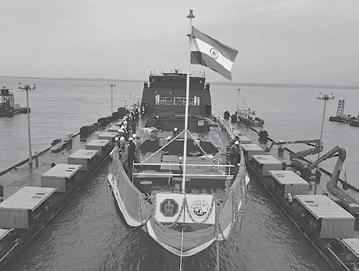
The Department has established wide ranging production facilities for various defence equipment through the Ordnance Factories (OFs) and Defence Public Sector Undertakings (DPSUs). The Department also encourages the private sector in the manufacture of Defence equipment. The products manufactured by OFs and DPSUs include arms and ammunition, tanks, armoured vehicles, heavy vehicles, fighter aircraft and helicopters, warships, submarines, missiles, ammunition, electronic equipment, earth moving equipment, special alloys and special purpose steels.
ROHIT GOEL
The Department of Defence Production envisions enhanced self-reliance in Defence Production and Dual-Use Technologies, leveraging ‘Make in India’ and maximising the untapped employment and economic potential of the sector.
The Department of Defence Production (DDP) is set up with the twin objectives of developing a robust production infrastructure and achieving substantive self-reliance in design, development and production of Defence Equipment, Weapons Systems and Platforms. Over the years, the Department has established wide ranging production facilities for various defence equipment through the Defence Public Sector Undertakings (DPSUs) and from the year 2001 onwards through licensed private sector companies.
This has resulted in development of diverse range of products that include arms and ammunitions, tanks, armoured vehicles, heavy vehicles, fighter aircraft and helicopters, warships, submarines, missiles, ammunition, electronic equipment, earth moving equipment, special alloys and special purpose steels. Department also recognises that true self-reliance is only possible when the technology is also with the country. Therefore, since November 1962, the Department has been encouraging promotion of innovation and Intellectual Property creation in the defence industry ecosystem of the country.
Strengthening Defence R&D Capabilities
Early onboarding of Development cum Production Partners and promoting development of new defence systems & platforms by industry through iDEX.
Attracting talent from across the country for out of box solutions through various editions of iDeX Defence India Startup Challenges (DISC).
Missions to develop critical systems (incl. Aero Engines, Sensors) & technology and strengthen DPSUs through R&D investments in niche technologies.
Establish Raksha Mitra to promote Defence R&D by all stakeholders – public, private & academia (Long Term).
Introduce specialised courses in arms, ammo & armament engg. in IITs/ NITs and support academia to strengthen Defence R&D through DRDO Industry Academia CoEs.
Strengthening Industry Through Policy Reforms & Collaborations.
Attract domestic private sector capital in Defence ecosystem through favourable policies.
Ensure a conducive environment for private players to undertake core manufacturing activities in strategic sectors.
Facilitating Global Export-promoting Alliances
Formulate G2G mechanism for military equipment sales to FFCs.
Reform guidelines of Line-of-Credit to boost defence exports.
Provide a platform for defence exporters to interact with potential buyers in FFCs.
Department of Defence Production administers the 16 Defence Public Sector undertakings including the seven New DPSUs formed out of 41 erstwhile Ordnance Factories. In addition, following functions are performed by DDP:
Indigenisation
Indigenisation Division monitors indigenisation portal namely
Name
List of Ordnance Factories
Address
Munitions India Limited Headquarter - Khadki, Pune
Ammunition Factory Khadki (AFK) Khadki, Pune — 411003 020 – 25810850 020 – 25813205 afk.ofb@nic.in
Cordite Factory Aruvankadu (CFA) Aruvankadu, The Nilgiris, Tamilnadu — 643202 0423 – 2231960 0423 – 2231923 cfa.ofb@nic.in
High Energy Projectile Factory (HEPF) HAPP PO, Tiruchirappalli, Tamilnadu — 620025 0431 – 2581803 0431 – 2581891 happ.ofb@nic.in
High Explosive Factory, Khadki (HEF) Khadki, Pune — 411003 020 – 25819566 020 – 25813204 hef.ofb@nic.in
Ordnance Factory Bhandara (OFBA) Jawaharnagar, Bhandara — 441906 07184 – 275745 07184 – 275242 ofba.ofb@nic.in
Ordnance Factory Badmal Bolangir (OFBOL) Badmal, District Bolangir, Orissa— 767070 06655 – 250969 - 973 06655 – 250271 gm_ofbol@ofb. gov.in
Ordnance Factory Chanda (OFCH) Bhadrawati, Chandrapur, Maharashtra— 442501 07175 – 254012, 254051 07175 – 254043 ofch.@ord.gov.in
Ordnance Factory Dehu Road (OFDR) Dehu Road, Pune — 412101 020 – 27671206 020 – 27673838 ofdr.ofb@nic.in
Ordnance Factory Itarsi (OFI) Itarsi, Madhya Pradesh— 461122 07572 – 268510 07572 – 268563 ofi.ofb@nic.in
Ordnance Factory Khamaria (OFK) Khamaria, Jabalpur, MP — 482005 0761 – 2742000 0761 – 2337301 ofk.ofb@nic.in
Ordnance Factory Project Nalanda (OFN) PO. Rajgir, Dist. Nalanda, Bihar — 803121 06112 – 257100 06112 – 257102 gm-ofn-bih@nic.in
Ordnance Factory Varangaon (OFV) Varangaon City, Bhusaval, Jalgaon Maharashtra— 425308 02582 – 277812-14 02582 – 277822 ofv.ofb@nic.in
Armoured Vehicles Nigam Limited (AVNLHQ) Headquarter - Avadi, Chennai
Engine Factory Avadi (EFA) Avadi, Chennai — 600054 044 – 26385000 044 – 26840437 efa.ofb@nic.in
Heavy Vehicles Factory (HVF) Avadi, Chennai— 600054 044 – 26843000 044 – 26841824 hvf.ofb@nic.in
Machine Tool Prototype Factory (MPF) Ordnance Estate, Ambernath (W), Thane, Maharashtra— 421502 0251 – 2612884 0251 – 2613065 mpf.ofb@nic.in
Ordnance Factory Project Medak (OFPM) (PO) Yeddumailaram, Kandi (Mdl), Sangareddy (Dt)Telangana — 502205
040 – 23283001 040 – 23292950 ofpm.ofb@nic.in
Vehicle Factory Jabalpur (VFJ) Jabalpur, Madhya Pradesh — 428009 0761 – 2330002 0761 – 2330436 vfj.ord.gov.in
Armoured Vehicles Nigam Limited Institute of Learning HRD Building, ODF Estate, Yeddumailaram, Sangareddy, T.S. - 502205
040 – 23232956 – ofilmedak-ap@ nic.in
Advanced Weapons and Equipment India Limited (AWEIL) Headquarter – Kanpur
Field Gun Factory Kanpur (FGK) Kalpi Road, Kanpur — 208009 0512 – 2295100 0512 – 2219462 fgk@ord.gov.in
Gun Carriage Factory (GCF) Jabalpur, Madhya Pradesh — 482011 0761 – 2330016-19 0761 – 2331495 gcf.ofb@nic.in Gun and Shell Factory (GSF) 7, Khagen, Chatterjee Road Cossipore, Kolkata —700002 033 – 25579684 033 – 25574390 gsf.ofb@nic.in
Ordnance Factory Kanpur (OFC) Kalpi Road, Kanpur — 208009 0512 – 229516168, 70 0512 – 2216040 ofc.ofb@nic.in
Ordnance Factory Project, Korwa (OFPKR) HAL Korwa, Amethi — 227412 05368 – 255118 05368 – 255114 ofpkr.ofb@nic.in
Ordnance Factory Tiruchirapalli (OFT) Ordnance Estate, Tiruchirappalli, Tamil Nadu -620016 0431 – 2581291-95 0431 – 2581136 oft@ord.gov.in
Rifle Factory Ishapore (RFI) PO Ichapur-Nawabganj, 24 Parganas (North) West Bengal— 743144 033 – 25937119 033 – 25937200 rfi.ofb@nic.in
Small Arms Factory Kanpur (SAF) Kalpi Road Kanpur — 208009 0512 – 2295042-46 0512 – 2296229 saf.ofb@nic.in
Troop Comforts Limited (TCL)Headquarter, TCL Corporate Bhawan, G.T. Road, Kanpur -208013
Ordnance Clothing Factory Avadi (OCFAV) AVADI, CHENNAI, Tamil Nadu - 600054 044 – 26365000 044 – 26381701 ocfav.ofb@nic.in
DEPARTMENT OF DEFENCE PRODUCTION TO READ THE COMPLETE ARTICLE GET YOUR COPY NOW!
Ordnance Clothing Factory Shahjahanpur (OCFS) OCF Estate, Shahjahanpur, UP - 242001 05842 – 223416 05842 – 223328 ocfs@ord.gov.in
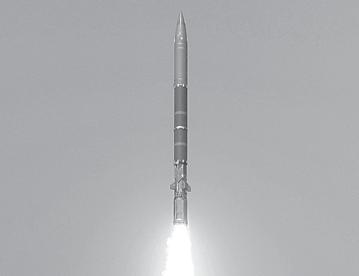
DRDO is the Research & Development (R&D) wing of Ministry of Defence, with a vision to empower India with cutting-edge defence technologies and a mission to achieve self-reliance in critical defence technologies and systems, while equipping our armed forces with state-of-the-art weapon systems and equipment. DRDO is India’s largest research organisation. It has a network of laboratories engaged in developing defence technologies and since being set up, has achieved many successes in developing major systems and critical technologies.
Formed on January 1, 1958, the Defence Research and Development Organisation (DRDO) has emerged as a highly professional and mature organisation with a strong technology base and management systems to undertake indigenous development of state-of-the-art defence systems including design, development, integration and production. DRDO has achieved technological self-reliance in critical areas including ammunition, armoured systems, missiles, radar, avionics and electronic warfare systems, sensors, nuclear biological chemical (NBC) defence, low-intensity conflict technologies and advanced computing. The organisation plays a significant role in providing scientific and technological advice to MoD in support of defence policy; as evaluator of defence equipment for the operational requirements of the military and generating new technological knowledge to be transferred for indigenous development of state-of-the-art weapon systems. It also advises the government on technical assessment of international security threats and military capabilities of both current and potential adversaries.
ROHIT GOEL
Kamat completed B.Tech. (Hons) in Metallurgical Engineering from IIT Kharagpur in 1985 and PhD in Materials Science and Engineering from The Ohio State University, USA in 1988, and joined DRDO in 1989.
Today, DRDO is a network of nearly 50 laboratories which are deeply engaged in developing defence technologies covering various disciplines, like aeronautics, armaments, electronics, combat vehicles, engineering systems, instrumentation, missiles, advanced computing and simulation, special materials, naval systems, life sciences, training, information systems and agriculture. Several major projects for the development of missiles, armaments, light combat aircrafts, radars, electronic warfare systems etc are on hand and significant achievements have already been made in several such technologies.
DRDO Chief Dr Samir V. Kamat assumed charge as Secretary, Department of Defence R&D and Chairman, DRDO on August 26, 2022. Dr
Dr Kamat has provided leadership and direction to several critical materials programmes in DRDO such as the development of high strength steels for naval ship hulls, development of high temperature titanium alloys and nickel-base superalloy-based components for aero engines, development of tungsten heavy alloys for kinetic energy penetrators, development of fused silica radomes for missile seekers, development of armour solutions for personnel as well as combat vehicles and stealth materials for airborne and naval applications. These have found use in various systems being developed by DRDO laboratories. In addition, he has super headed the development of naval systems such as advanced lightweight torpedo, anti-torpedo decoy systems, autonomous underwater vehicles, advanced hull-mounted and towed array sonars for ships, and fuel cells based air-independent propulsion systems for submarines. Dr Kamat has published more than 180 papers in international peer reviewed journals.
On May 27, 2024, Appointment Committee of Cabinet approved a one-year extension in service of Secretary, Department of Defence R&D and Chairman, DRDO Dr Samir V. Kamat up to May 31, 2025.
Organisational Structure
With its headquarters at New Delhi, DRDO is headed by a Chairman who is also the Secretary, Department of Defence Research & Development (DDR&D), Government of India.
DRDO Headquarters
Headquarters of DRDO located at New Delhi, coordinates the overall functioning of the organisation and is the interface between the government and the laboratories. The five CCR&D oversee the

The Ministry of Home Affairs (MHA) discharges multifarious responsibilities, important among them beinginternal security, border management, Centre-State relations, administration of Union Territories, management of Central Armed Police Forces, disaster management, etc.
In pursuance of these obligations, the Ministry of Home Affairs continuously monitors the internal security situation, issues appropriate advisories, shares intelligence inputs, extends manpower and financial support, guidance and expertise to the State Governments for maintenance of security, peace and harmony. During 2022, there were important developments that took place under the Ministry of Home Affairs and following is the summary of them:
Jammu & Kashmir and Ladakh
n Number of terror incidents has decreased from 417 in 2018 to 229 in 2021, while the number of security forces personnel martyred has reduced from 91 in 2018 to 42 in 2021.
n There has been about 54 per cent reduction in terrorist incidents, 84 per cent in the deaths of security forces and about 22 per cent in recruitment of terrorists.
n Under the Prime Minister’s Development Package in Jammu,




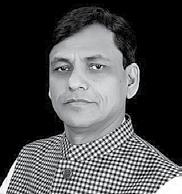

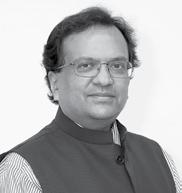
Amit Shah Minister of Home Affairs
In his third consecutive stint as the Nation’s Home Minister, Amit Shah reassumed charge on June 11, 2024, reaffirming the Ministry of Home Affairs’ commitment to national security under Prime Minister Narendra Modi’s leadership. Shah emphasised that the Modi 3.0 government aims to elevate India’s defences against terrorism, insurgency, and naxalism, ensuring a safer future for the nation.
Amit Shah’s political journey reflects a remarkable ascent from grassroots activism to national promi-
Born on January 1, 1966 in Bihar, Nityanand Rai holds a BA (Honours) from R.N. Degree College, Baba Saheb Bhim Rao Ambedkar University. His political journey began in 1990 when he joined the Bharatiya Janata Party (BJP). Demonstrating leadership early on, he became President of the Bharatiya Janata Yuva Morcha in 1998. Rai was elected as an MLA from Hajipur in the Bihar Assembly in 2000. Over the years, he served
Bandi Sanjay Kumar
Minister of State
for Home Affairs
Bandi Sanjay Kumar was appointed as Minister of State in the Ministry of Home Affairs on June 9, 2024. He is an Indian politician serving as Minister of State for Home Affairs, Government of India. Representing Karimnagar in the Lok Sabha for a second term, he is a prominent leader of the Bharatiya Janata Party (BJP). He held the role of BJP State President for Telangana from 2020 to 2023 and currently serves as the party’s National General
Govind Mohan Home Secretary
Govind Mohan, an accomplished civil servant, currently serves as the Union Home Secretary, a role he assumed on August 23, 2024. Prior to this, he was Officer on Special Duty in the Ministry of Home Affairs (August 14–22, 2024) and Secretary, Ministry of Culture (October 1, 2021–August 14, 2024). His tenure at the Ministry of Home Affairs also includes serving as Additional Secretary (2018–2021) and Joint Secretary (2018).
nence. Starting with the Bharatiya Janata Party (BJP) in Gujarat, he served as Secretary and Vice President of the state unit before becoming National Treasurer of the Bharatiya Janata Yuva Morcha in 1997. As BJP’s National General Secretary in 2013, he played a pivotal role in the party’s historic 2014 Parliamentary election victory. Shah became BJP National President in 2014 and was elected to the Rajya Sabha in 2017. In 2019, he won the Gandhinagar Lok Sabha seat by a significant margin.
as State Secretary, General Secretary, and eventually President of the BJP’s Bihar unit. Under his presidency, the BJP and its allies achieved a historic victory in the 2019 Lok Sabha elections, winning 39 out of 40 seats in Bihar. In 2014, Rai entered national politics, representing Ujiarpur as a Member of Parliament in the Lok Sabha, marking a significant milestone in his illustrious political career.
Secretary. Born on July 11, 1971 in Karimnagar, he earned an M.A. in Public Administration from Madurai Kamaraj University.
He was elected as Member of Parliament to 17th Lok Sabha. In the 2019 General Elections, he was fielded by the BJP from the Karimnagar Lok Sabha constituency. An active member of the RSS from the age of 12, Bandi has a long association with the ABVP and BJP youth wings.
TO READ THE COMPLETE ARTICLE GET YOUR COPY NOW!
Before joining MHA, Mohan held significant
roles, including Joint Secretary in the Department of Economic Affairs (2017–2018) and Principal Resident Commissioner, Sikkim (2015–2017). As Minister (Economic) at the Indian Embassy in Washington, D.C. (2012–2015), he facilitated India–U.S. economic and energy partnerships. Earlier, he served in the Cabinet Secretariat (2011–2012), managing critical national policies, and in the Department of Economic Affairs (2008–2011), focusing on infrastructure, FDI, and multilateral projects.
Ministry of Home Affairs as on December, 2024
Minsters Designation Address
Amit Shah Home Minister
Saket Kumar Personal Secretary to Home Minister
Pawan Yadav Officer on Special Duty to Home Minister
104, North Block, Central Secretariat, New Delhi — 110001
105, North Block, Central Secretariat, New Delhi — 110001
107, North Block, Central Secretariat, New Delhi — 110001
Vijay Kumar Upadhyay Officer on Special Duty to Home Minister 10-C, North Block, Central Secretariat, New Delhi — 110001
Shiv Nath Mishra Additional Personal Secretary to Home Minister
103-A, North Block, Central Secretariat, New Delhi — 110001
23092462, 23094686, 23017256 23017580
23092462, 23094686
23094686, 23092462 23092113
23094246, 23094686 23092979
23092462, 23094686, 23092631
Virender Singh Director -Home Minister Office 10-C, North Block, Central Secretariat, New Delhi — 110001 23093038
MINISTER OF STATE (BSK)
Bandi Sanjay Kumar Minister of State
Andra Vamsi Personal Secretary Office of Minister of State (BSK)
Shiv Kumar Under Secretary to Minister of State (BSK)
MINISTER OF STATE (N)
Nityanand Rai Minister of State
Prashant Ranjan Personal Secretary to Minister of State (N)
Kumar Kranti Additional Personal Secretary to Minister of State (N)
Rajneesh Rajora Personal Private Secretary Office of Minister of State (N)
HOME SECRETARY
127, North Block, Central Secretariat, New Delhi—110001
127-B, North Block, Central Secretariat, New Delhi —110001
126, North Block, Central Secretariat, New Delhi — 110001
101, North Block, Central Secretariat, New Delhi — 110001
198, North Block, Central Secretariat, New Delhi — 110001
196-A, North Block, Central Secretariat, New Delhi — 110001
117-B North Block, Central Secretariat, New Delhi — 110001
Govind Mohan Home Secretary 113 North Block, Central Secretariat, New Delhi — 110001
M. Jagannatha Rao Personal Staff Officer to Home Secretary
SECRETARIES
113-A, North Block, Central Secretariat, New Delhi — 110001
Anshuli Arya Secretary (Department of Official Language) NDCC-II, A Wing, 3rd Floor, Jai Singh Road, New Delhi - 110001
Dhan Singh Bharati Personal Staff Officer to Secretary (Department of Official Language)
Dr Rajendra Kumar Secretary (Border Management I, Border Management II and Freedom Fighters & Rehabilitation)
A Wing, 3rd Floor, Jai Singh Road, New Delhi - 110001
124, North Block, Central Secretariat, New Delhi — 110001
K. Chandru Senior Personal Private Secretary to Secretary (Border Management) 126-B, North Block, Central Secretariat, New Delhi — 110001
23092073, 23094054 23093549
23092073, 23094054 23093549 mos.home@mha.gov.in
23092073, 23094054 23093549 –
23092870, 23092595 23094896
23092595 23094896 –
23092870 23094896 –
23092595 – –
23092989, 23093031 23093003 hshso@nic.in
23092989, 23093031 23093003 hshso@nic.in
secy-ol@nic.in
23092573 secybm@nic.in

There have been significant positive developments in India’s coastal security to overcome the serious challenges presented by the coastline of Peninsular India.
SP’S SPECIAL CORRESPONDENT
India has 7,516 km long coastline which includes 5,422 km of main land and 2,094 km of coastline of 1,382 islands. The coastline of the peninsular India has Bay of Bengal in the east, Indian Ocean in the south and Arabian Sea in the west; and is spread over nine states and four union territories. Lakshadweep and Minicoy in Arabian Sea and Andaman and Nicobar in Bay of Bengal form the two island groups. The topography of India’s coastline is diverse to include creeks, small bays, back waters, estuaries, swamps, mudflats etc, and is ideal for covert landings, smuggling of contraband including explosives and weapons and terrorist operations. The creeks along the coasts of Gujarat and West Bengal’s Sundarbans’ are especially suitable for clandestine activities, infiltration and smuggling.
There have been serious security challenges earlier like serial blasts of March 1993 and terrorist attacks of November 2008 in Mumbai which can all be attributed to poor coastal security. After the 2008 Mumbai terrorists attacks when 10 armed terrorists landed on Mumbai’s coast, the Government of India launched a series of concrete actions to plug every possible gap in the coastal security.
Sea Trade and Ports
India is located at the crossroads of trans-Indian Ocean routes. Most merchant ships that sail between East Asia, US, Europe and Africa pass through Indian territorial waters. Around 95 per cent of India’s trade by volume and 70 per cent by value is carried through the sea routes. There are presently 12 major ports and 200 notified minor and intermediate ports in India. Kamarajar Port, located on the Coromandel Coast (formerly called Ennore Port Limited), is the 13th port and the first port which is a public company. As per United Nations Conference on Trade and Development’s (UNCTAD’s) report ‘Review of Maritime Transport Report 2020’; India’s maritime trade fell from 4.2 per cent in 2019 to minus 5.9 in 2020 due to COVID-19. The forecast is that it will grow to 3.9 per cent by November 2021 which is a net growth of 9.8 per cent. This is encouraging news.
India also has an Exclusive Economic Zone (EEZ) of about 2.37 million sq kms wherein India enjoys exclusive legal right to utilise all living and non-living resources.
There are about 23 minor fishing harbours and 95 fish-landing centres which formally provide landing and berthing facilities to fishing boats. As per the Department of Fisheries there are 1,376 landing points for fishing boats alone along the entire coast. India is the 7th largest fishing nation in the world and Indian coast accounts for approximately four million fishermen settled along the coast in 3,288 marine fishing villages.
Urban Complexes
Besides fishing, other major industrial and economic activities, nuclear power stations, defence installations, energy infrastructure, shipyards, refineries are located in the coastal regions. Special Economic Zones (SEZs) which have resulted in growth of number of industrial hubs such as Kandla SEZ in Gujarat; SantaCruz Electronics Export Processing Zone SEZ in Maharashtra; Madras Export Processing Zone SEZ in Tamil Nadu; Cochin SEZ in Kerala; Falta SEZ in West Bengal; and Vishakhapatnam SEZ in Andhra Pradesh. In case of Gujarat, Gulfs of Kutch and Khambhat have emerged as major corridors for importing crude oil for India.
Neighbours
Proximity of India’s coasts to Sri Lanka, Bangladesh, Pakistan and Gulf countries adds to its vulnerability. Gwadar in Pakistan and Hambantota Port in Sri Lanka are in the Chinese hands and a great threat to India’s maritime security and maritime economy.
Sagarmala Programme
The Sagarmala Programme was originally initiated by Atal Bihari Vajpayee in 2003 as the maritime equivalent to the Golden
MoD Organisations & Contacts of Asian Countries
Who’s
Asian Who’s Who:





Note from the Editor-in-Chief:
We had earlier introduced a new chapter ‘Ministry of Defence (MoD) organisations and contacts of Asian countries’ within the regular ‘Who’s Who in Asian Defence Forces’ section. We have further included the profiles of top leadership as much up to date as possible apart from the extensive information on Ministries of Defence in major Asian countries with critical facts like organisational structure, contact details, etc.
We sincerely hope that these information, which have been added, will make SP’s Military Yearbook even more useful and will especially enable all the stakeholders from the aerospace and defence industry in doing business and collaborate more expeditiously.
Countries being covered in the ‘MoD Contacts and Organisations of Asian Countries’ are:
n Australia: MoD contact details and organisational structure
n Bangladesh: MoD contact details
n Brunei: MoD contact details and organisational structure
n Egypt: MoD contact details
n Indonesia: MoD contact details and organisational structure
n Iran: MoD contact details
n Israel: MoD contact details and organisational structure
n Japan: MoD contact details and organisational structure
n Lebanon: MoD contact details
n Malaysia: MoD contact details and organisational structure
n Maldives: MoD organisational structure
n Myanmar: MoD contact details and organisational structure
n Nepal: MoD contact details
n New Zealand: MoD contact details
n Philippines: MoD contact details and organisational structure
n Singapore: MoD contact details and organisational structure
n South Korea: MoD contact details and organisational structure
n Sri Lanka: MoD contact details and organisational structure
n Thailand: MoD contact details and organisational structure
n US Indo-Pacific Command: MoD Contact Details and organisational structure
n Vietnam: MoD contact details and organisational structure
Countries being covered with the ‘Asian Who’s Who: Leadership Profiles’ are:
1. Afghanistan
2. Australia
3. Bahrain 4. Bangladesh
5. Bhutan
6. Brunei
7. Cambodia
8. People’s Republic of China
9. Egypt
10. Indonesia
Iran
Iraq
Israel
Japan
Jordan
Kuwait
Laos
Lebanon
Malaysia
20. Maldives 21. Myanmar 22. Nepal
23. New Zealand
24. North Korea 25. Oman 26. Pakistan 27. Philippines 28. Qatar 29. Saudi Arabia
30. Singapore
31. South Korea
32. Sri Lanka 33. Syria 34. Thailand
35. Turkiye
36. United Arab Emirates
37. US Indo-Pacific Command
38. Vietnam
39. Yemen
Compiled by SP Guide Publications team (as on December, 2024) AUSTRALIA: MoD Contact Details
Richard Marles MP Deputy Prime Minister / Minister for Defence Ministry of Defence Suite C, 117 Great Eastern Highway, Rivervale WA 6103
Matt Thistlethwaite Assistant Minister for Defence/Assistant Minister for Veterans’ Affairs/Assistant Minister for the Republic – Department of Defence, Canberra ACT 2600
Matt Keogh Minister for Defence Personnel/Minister for Veteran’s Affairs Ministry of Defence Level 1, 89 Raymond St, Sale, Vic 3850
Pat Conroy MP Minister for Defence Industry and Minister and Capability Delivery, Minister for International Development and the Pacific
Ministry of Defence Geraldton (principal Office): 2b/209 Foreshore Drive, Geraldton WA 6530
Greg Moriarty Secretary of Defence Ministry of Defence
Admiral David Johnston Chief of the Defence Force Ministry of Defence
Air Marshal Robert Chipman Vice Chief of the Defence Force Ministry of Defence
Air Vice-Marshal Glen Braz Air Commander
R1-5-B Secretary Suite, Russell Drive, Russell, ACT 2601
R1-5-CDF Suite, Russell Drive, Russell, ACT 2601
R1-5-B025, Russell Drive, Russell ACT 2601
Box 369, Belmont WA 6984 +61 02 62777800 dpm.media@ defence.gov.au
PO Box 968 Mandurah, WA, 6210 +61 02 62774223 andrew.hastie. mp@aph.gov.au
PO Box 486, Sale, VIC 3850 +61 03 51446744 –
Broome: PO Box 1856, Broome WA 6725 +61 08 99642195 minister.conroy@ dfat.gov.au
PO Box 7901 Canberra BC ACT 2610 +61 02 62652851 greg.moriarty@ defence.gov.au
PO Box 7900, Canberra BC, ACT 2610 1300 333 362 –
PO Box 7902, Canberra Bc, ACT 2610 1300 333 362 david.johnston1@ defence.gov.au
Australia Air Force Headquarters Air Command Building 139, RAAF, Base Glenbrook NSW 2773 +61 02 47377000
Air Marshal Stephen Chappell Chief of Air Force Australia Air Force R1-6-C001 Department of Defence, Canberra ACT 2600
Air Vice-Marshal Harvey Reynolds Deputy Chief of Air Force
Lieutenant General Simon Stuart Chief of Army
Major General Chris Smith Deputy Chief of Army, Australian Army
Air Force R1-6-C002 PO Box 7902, Canberra Bc, ACT 2610
Army Department of Defence, Canberra ACT 2600
Army
02 62655474
02 62655471
Compiled by SP Guide Publications team (as on December, 2024)

Hibatullah Akhundzada Supreme Leader, Afghanistan
Mullah Hibatullah Akhundzada is an Afghan cleric who is the supreme leader of Afghanistan in the internationally unrecognized Taliban regime. He has led the Taliban since 2016, and came to power with its victory over US-backed forces in the 2001–2021 war.
Unlike many Taliban leaders, he is not of a militant background. He served as an Islamic judge of the Sharia courts of


Mohammad Hasan Akhund Prime Minister, Afghanistan
Mohammad Hasan Akhund is an Afghan mullah, politician and Taliban leader who is currently the Prime Minister of Afghanistan in the internationally unrecognized Taliban regime since September 7, 2021. Akhund is one of the founding members of the Taliban and has been a senior leading member of the
Mohammad Yaqoob Minister of Defence, Afghanistan
Mullah Mohammad Yaqoob Mujahid (born 1990) is an Afghan militant commander and cleric who is the second deputy leader of Afghanistan and the acting defence minister in the internationally unrecognized
the 1996–2001 Taliban government. He was chosen to lead the Taliban’s shadow court system at the start of the Taliban insurgency, and remained in that post until being elected supreme leader of the Taliban in May 2016. In 2019, Akhundzada appointed Abdul Ghani Baradar to lead peace talks with the US, which led to the 2020 signing of the Doha Agreement that cleared the way for the full withdrawal of United States troops from Afghanistan.
movement. In the first Taliban government (1996–2001), he served as the Deputy Foreign Minister. During the period of insurgency (2001–2021), Akhund was intermittently a member of the Quetta Shura. In 2013, he was the chief of the Taliban’s commissions and the head of the recruitment commission. His appointment is seen as a compromise between the Taliban’s moderate and hardline figures. He took office on 7 September 2021.
Taliban regime since 2021. He has been a deputy leader of the Taliban since 2016, and was additionally appointed to his ministerial role after the Taliban’s victory over Western-backed forces in the 2001–2021 war. He has been the Taliban’s military chief since 2020.



Anthony Albanese
Prime Minister, Australia
Anthony Albanese was sworn in as Australia’s 31st Prime Minister on May 23, 2022. He previously served as Deputy Prime Minister and Leader of the House of Representatives.
As Infrastructure Minister and Communications Minister, he delivered nation-building projects, connecting the country through thousands of kilometres
Richard Marles
of roads and rail, and rolling out the high-speed fibre National Broadband Network. He was widely recognised for his ability to bring stakeholders, businesses, and communities together to deliver projects that boosted the economy, enhanced productivity, and improved Australia’s quality of life.
Anthony was first elected to the Australian Parliament as the member for the Sydney seat of Grayndler in 1996. In 2019, he was unanimously elected as the Leader of the Australian Labour Party.
Deputy Prime Minister and Minister for Defence, Australia
Richard Marles is the Deputy Prime Minister of Australia, Minister for Defence and the Federal Member for Corio. Richard was first elected to the House of Representatives for Corio, Victoria in 2007. Richard's previous ministerial appointments include Minister of Trade, Minister for Employment,
Pat Conroy
Minister for Defence Industry, Australia
Pat Conroy is the Minister for Defence Industry and was elected to the House of Representatives as the Member for Charlton in 2013 and, following an electoral redistribution, as the Member for Shortland in 2016 and again in 2019 and 2022.
From 2016 to 2019, Pat was Shadow Assistant Minister for Climate Change and Energy and Shadow Assistant Minister for Infrastructure. In 2019, he was appointed Shadow Minister for

Chief
Admiral Johnston, appointed Chief of the Defence Force on July 10, 2024, brings decades of leadership experience to the role. He joined the Royal Australian Naval College in 1978, graduating in 1982 as a Seaman Officer before specialising as a Principal Warfare Officer.
Parliamentary Secretary for Foreign Affairs, Parliamentary Secretary for Pacific Island Affairs, Parliamentary Secretary for Innovation and Industry, and Chair of the House of Representatives Standing Committee on Aboriginal and Torres Strait Island Affairs.
Born in 1967, Richard was raised and educated in Geelong and went on to study Law and Science, achieving a LLB (Hons) and a BSc from the University of Melbourne.
International Development and the Pacific, Shadow Minister Assisting for Defence and Shadow Minister Assisting for Climate Change and Energy.
From 2008 to 2013, he was Principal Policy Adviser and then Deputy Chief of Staff to the Greg Combet, who served as a Minister in the Rudd and Gillard Labor Governments. In these roles, Pat worked in developing significant policies in areas including Defence Materiel, Defence Science and Industry and Innovation.
Throughout his career, Admiral Johnston held significant command positions, including Commanding Officer of HMAS Adelaide and HMAS Newcastle, Commander of Border Protection Command, Chief of Joint Operations, and Vice Chief of the Defence Force. His operational experience spans critical missions such as Operations RELEX, QUICKSTEP, RESOLUTE, and SLIPPER.






ver the next 12-24 months, the IndoPacific region will confront an increasingly complex security environment dominated by intersecting strategic challenges, both national and regional. The region will remain heavily impacted by global processes and international events over which it has limited control, such as climate change, supply chain inflation, global economic drivers, increasing geopolitical tensions and oppositional use of the multilateral system. External actors will continue to seek to increase their influence in the Pacific region within the context of an increasingly dynamic international security environment.
Concurrent traditional security flashpoints in various regions are deteriorating the international security environment and straining multilateral systems. The Russian invasion of Ukraine is nearing the 3-year mark. surpassed its 600-day mark in October. In addition to grave violations of human rights and international humanitarian law, the conflict continues to create compounding security challenges globally and in the Pacific region. The conflict between Israel and Hamas surprised many in terms of its rapid escalation and posed consular crises for many Pacific countries. With no clear end in sight to hostilities, the conflict may have broader security implications for the Middle East and potential flow on effects globally, including to the Pacific. Potential flashpoints in the South China Sea, on the Korean Peninsula and across the Taiwan Strait continue to simmer and will shape dynamic geopolitics into the future, not only drawing energy and resources away from Pacific priorities, but also with the potential to directly affect the Pacific given the level of trade that passes through the region. The risk of military miscalculation, although heightened, is unlikely to boil over in the near term.
The strategic significance and value of the Indo-Pacific has been increasingly recognised by external actors, and interest in the Pacific has continued to intensify bilateral, regional and international engagements. The region also continues to operate within an increasingly fractured multipolar system. The region is increasingly contested as external actors seek greater influence and access, with continued attention on establishing security cooperation agreements. Beyond major powers, engagements with middle powers from outside the region have continued at pace, providing greater options for the region.
Geopolitics and strategic competition will continue to sharpen over the course of the next 12-24 months, and it is likely that engagement with the Pacific will remain a priority for many external partners, particularly in defence, law enforcement and security, and maritime domain activities. However, there is also a possibility that the interest
by external actors in the Pacific – primarily the US and China – may reduce or alter due to domestic challenges, political shifts, or priorities in other regions.
The Indo-Pacific is poised to become the epicentre of 21st-century geopolitics, as underscored in the 2022 US National Security Strategy. This region holds immense geostrategic significance, being home to 60 percent of the global population and contributing an equivalent 60 percent to the world’s GDP. The Indo-Pacific also hosts crucial maritime trade routes, with the Strait of Malacca alone accounting for 25 percent of all maritime commerce. These dynamics underscore the region’s pivotal role in global economics and politics.
The Indo-Pacific is emerging as the principal theatre for US-China rivalry. Beijing envisions a regional order that centres China, promoting a security framework “by Asians for Asians”—a vision that seeks to diminish US influence and alliances. This ambition is reinforced through China’s Belt and Road Initiative (BRI), an expansive infrastructure development programme involving numerous states across the region. Concurrently, the US is intensifying its engagement by recalibrating its military posture, deepening alliances, fostering partnerships, and launching economic outreach programmes. Central to Washington’s approach is the concept of a “Free and Open IndoPacific,” a vision premised on the rule of law and the sovereignty of nations to pursue their interests free from coercion. These competing visions are likely to fuel heightened competition, framing the region within a zero-sum paradigm between the two superpowers.
Nevertheless, the trajectory of the Indo-Pacific will not solely be determined by the US and China. Regional actors are increasingly asserting their roles as “order shapers” rather than “order takers.” Japan’s coining of the Indo-Pacific concept exemplifies this shift. Originally conceived in response to China’s destabilising activities, the concept also embodies a broader aspiration to preserve the agency of Indo-Pacific nations amid superpower rivalry. Many countries in the region seek to maintain favourable relations with both Washington and Beijing, but the intensifying great-power competition is making such multi-alignment increasingly challenging.
China’s revisionist actions in the Indo-Pacific have raised alarms among the US and regional states. Beijing’s claim to almost 90 percent of the South China Sea—territory that overlaps with claims from several littoral states—has provoked widespread concern. Despite the 2016 ruling by the Permanent Court of Arbitration in The Hague
Area : 760 sq km
Capital : Manama
Coastline : 161 km
Maritime Claims
Territorial sea : 12 nm
Contiguous zone : 24 nm
Continental shelf : Extending to boundaries to be determined
Population : 1,485.51 (in thousands), (2023 est.)
Ethnic Divisions : Bahraini 46 per cent, Asian 45.5 per cent, other Arab 4.7 per cent, African 1.6 per cent, European 1 per cent, other 1.2 per cent (includes Gulf Co-operative country nationals, North and South Americans, and Oceanians) (2010 est.)
Religions : Muslim 70.3 per cent, Christian 14.5 per cent, Hindu 9.8 per cent, Buddhist 2.5 per cent, Jewish 0.6 per cent, folk religion <.1, unaffiliated 1.9 per cent, other 0.2 per cent (2010 est.)
Languages : Arabic (official), English, Farsi, Urdu
Literacy : 95.7 per cent
Government : Constitutional monarchy
Suffrage : 20 years of age; universal
Administrative Divisions : 5 governorates General Information
Overview
Bahrain’s political landscape saw significant developments, especially with the regime’s reformist wing, led by King Hamad and Crown Prince and Prime Minister Salman bin Hamad Al Khalifa, gaining influence over hard-liners. The 2020 death of former Prime Minister Khalifa bin Salman Al Khalifa, a key figure among the Khawalid hard-liners, initiated a shift within the ruling class. This change was reflected in the 2022 cabinet reshuffle, which further consolidated the Crown Prince’s power.
Bahrain’s foreign relations saw improvement as ties with Qatar and other Gulf Cooperation Council (GCC) allies were restored. This, along with the normalisation of relations with Israel and the UAE, has bol-
stered political cooperation and economic prospects. Diplomatic efforts included high-level visits between Bahrain and Israel, joint military drills with the US Central Command, and negotiations on a free trade agreement. Despite the increased dialogue, trade between Bahrain and Israel remained low, though significant growth is anticipated in the coming years. However, the broader regional power struggle between Saudi Arabia and Iran continues to shape Bahrain’s foreign policy, with the Kingdom treading carefully to avoid deepening tensions.
Economically, Bahrain recovered from the COVID-19 crisis with a revival in infrastructure projects and an increase in foreign reserves. However, public debt surged, exceeding 100 per cent of GDP, indicating the kingdom’s continued reliance on external support. This fiscal strain was accompanied by ongoing efforts to diversify the economy away from oil dependency. While the government promoted sectors like tourism, banking, and real estate, progress remained limited. The expansion of the Sitra oil refinery is expected to contribute to GDP growth, and megaprojects like the Bahrain Metro and Bahrain Marina are anticipated to drive economic activity in the future. The government’s Economic Vision 2030 remains critical for achieving long-term diversification and reducing reliance on rent-seeking activities.
Bahrain’s normalisation of ties with Israel has enhanced regional trade and cooperation. Since 2021, direct flights between Manama and Tel Aviv have been operational, and the restoration of diplomatic relations has increased Bahrain’s geopolitical significance. In conjunction with these improvements, the Kingdom continues to navigate its relationship with Iran, maintaining a delicate balance to avoid exacerbating the conflict between Saudi Arabia and Tehran.
On the security front, Bahrain’s participation in joint military drills with Israel, the UAE, and the US has strengthened regional security cooperation. The normalisation of diplomatic relations has contributed to reducing regional tensions, although any reconciliation with Iran remains unlikely in the near term. Internally, the Sunni Al Khalifa ruling family continues to face challenges from the majority Shi’a population, although the appointment of Crown Prince Salman as Prime Minister could potentially ease this divide over time.
Naval Support Activity (NSA) Bahrain is situated in the Kingdom of Bahrain and is home to US Naval Forces Central Command (CENTCOM) and US 5th Fleet. NSA Bahrain provides Operational Support to US and Coalition Forces operating throughout the CENTCOM area of responsibility, ensuring security to ships, aircraft, detachments, and remote sites.
Defence
Active : 8,200 (Army 6,000 Navy 700 Air 1,500)
Paramilitary 11,260
Military Equipment by Service
Army: 6,000
Forces by Role
Special Forces : 1 SF bn
Manoeuvre
Armoured : 1 armd bde(-) (1 recce bn, 2 armd bn)
Mechanised : 1 inf bde (2 mech bn, 1 mot bn)
Light : 1 (Amiri) gd bn
Combat Support : 1 arty bde (1 hvy arty bty, 2 med arty bty, 1 lt arty bty, 1 MRL bty); 1 engr coy
Combat Service
Support : 1 log coy; 1 tpt coy; 1 med coy
Air Defence : 1 AD bn (1 ADA bty, 2 SAM bty)
Equipment by Type
Armoured Fighting Vehicles : MBT: 180 M60A3; RECCE: 22 AML-90; IFV 67:
Area : 6,52,230 sq km
Capital : Kabul
Coastline : 0 km (landlocked)
Population : 42,239.85 (in thousands), (2023 est.)
Ethnic Divisions : Pashtun, Tajik, Hazara, Uzbek, other (includes smaller numbers of Baloch, Turkmen, Nuristani, Pamiri, Arab, Gujar, Brahui, Qizilbash, Aimaq, Pashai, and Kyrghyz) (2015)
Religions : Muslim 99.7 per cent (Sunni 84.7 - 89.7 per cent, Shia 10 - 15 per cent), other 0.3 per cent (2009 est.)
Languages : Afghan Persian or Dari (official) 50 per cent, Pashto (official) 35 per cent, Turkic languages (primarily Uzbek and Turkmen) 11 per cent, 30 minor languages (primarily Balochi and Pashai) 4 per cent, much bilingualism, but Dari functions as the lingua franca
Literacy : 38.2 per cent
Government : Islamic republic
Suffrage : 18 years of age; universal
Administrative Divisions : 34 provinces
Overview
Following a 20-year conflict with the international coalition in Afghanistan, the Taliban took over the government in the wake of international troops’ withdrawal from the country in 2021. As the previous political elite fled, the Taliban established a highly autocratic system that undermines democratic principles and civil rights, particularly those pertaining to women. Afghanistan faces a humanitarian crisis with 97 per cent of the population living in poverty and over 50 per cent
relying on humanitarian aid. At the same time, the economy is slowly recovering as decreasing levels of inflation, a robust currency and strong export growth are indicating. While domestic security, stability, and the fight against corruption have shown improvement, Afghanistan remains isolated on the international stage, as no nation has officially recognised the country thus far.
After nearly two years of Taliban control, the international community has not yet recognised the Islamic Emirate of Afghanistan (IEA) as the legitimate government. The new government faces two major challenges: increasing poverty and international sanctions, which hinder the effective implementation of its policies. No political movement or rebel organisation has posed a significant threat to the Taliban, allowing them to maintain uncontested control. The Russia-Ukraine conflict has brought about new political dynamics, leading to a gradual acceptance of the Taliban as a credible regional partner for two reasons. First, Afghanistan is surrounded by autocratic regimes that criticise the previous democratic government, particularly due to its association with the United States’ influence. Second, the Taliban has a long history of fighting against the Soviet Union, making them a suitable option in a region where democracy and US political dominance are viewed as significant threats. Conversely, the Taliban have managed to maintain security and stability in Afghanistan, demonstrating their determination by combating IS-K. This has led regional countries to believe that a secure and stable Afghanistan can contribute to the region’s economy, given its connectivity between Central Asia and the Global South. Additionally, this connectivity positions the country as a strategic asset. Furthermore, the Taliban’s successful fight against their adversary, IS-K, has revealed their exceptional capabilities. IS-K aims to expand its network throughout the region by recruiting militants, particularly from Central Asian nations. In general, neighbouring countries, including China and Russia, have supported any actions taken by the Taliban against IS-K. Nonetheless, acceptance of the IEA by the international community is crucial, a situation that still applies to the vast majority of countries. The Taliban rejected ideas such as the formation of an inclusive government, and as a result, intra-Afghan peace discussions did not begin. In the future, these new dynamics will significantly impact Afghanistan’s political makeup. To maintain long-term peace and stability, it is vital that all opposition groups within the Afghan state participate in the peace negotiations. Underestimating this trend by the IEA or foreign actors could have irrevocable consequences for Afghanistan’s future. Given the ideological conflict between the Taliban and other political groups, considerations about the state’s shape beyond 2021 are of great importance. To enhance its reputation in the eyes of the international community and the Afghan public, it is suggested that the IEA swiftly and decisively address inclusive government, women’s rights, education, poverty alleviation, and climate change.
The worsening situation in Afghanistan is underscored by an increase in poverty and political isolation. Despite having efficient state control, the government never fully gained public support, which raises questions about its domestic legitimacy. The exclusion of girls and women from education has garnered significant criticism from the West and international NGOs. Given the current poverty and environmental crises, it would be catastrophic for the government and the population to alienate the global community. In recent years, climate change has affected the lives of Afghans, leading to internal displacement and an uptick in poverty. However, little attention has been given to this issue thus far. While providing basic food distribution to those in need is a temporary solution, long-term strategies are needed to combat poverty, as emphasised by the IEA.
The Taliban do not have official diplomatic ties with the international community but have enlisted de facto diplomatic support
Area : 5,765 sq km
Capital : Bandar Seri Begawan
Coastline : 161 km
Maritime Claims
Territorial sea : 12 nm
Exclusive
economic zone : 200 nm or to median line
Population : 452.52 (in thousands), (2023 est.)
Ethnic Divisions : Malay 65.7 per cent, Chinese 10.3 per cent, other 24 per cent (2016 est.)
Religions : Muslim (official) 78.8 per cent, Christian 8.7 per cent, Buddhist 7.8 per cent, other (includes indigenous beliefs) 4.7 per cent (2011 est.)
Languages : Malay (Bahasa Melayu) (official), English, Chinese dialects
Literacy : 96 per cent
Government : Absolute Monarchy or Sultanate
Suffrage : 18 years of age for village elections; universal
Administrative
Divisions : 4 districts (daerah-daerah, singular - daerah); Belait, Brunei-Muara, Temburong, Tutong
Overview
Brunei is a stable, developed nation in Southeast Asia, governed by an absolute monarchy under Sultan Hassanal Bolkiah Mu’izzaddin. As a “Malay Muslim Monarchy,” the political environment is autocratic with no official political or social opposition. There are no credible threats to the current leadership, nor any risks concerning royal succession. Civil unrest is rare due to strict regulations, limited political freedoms, and a comprehensive welfare system that minimises potential socioeconomic grievances. Collective bargaining and trade union activity are virtually non-existent, further contributing to political stability.
Economically, Brunei’s growth is anchored by its oil and gas sector. The Hengyi petrochemicals plant is undergoing expansion, scheduled for completion in 2029, and Brunei Muara port is increasing its capacity with completion expected by 2025. The launch of a new offshore oilfield will further boost oil output. The country’s GDP is projected to grow by 3.1 per cent in 2024 and three per cent in 2025, supported by strong exports of petrochemicals and fertilizers, as well as firm private consumption and investment. Inflation is expected to remain low, averaging one per cent per year during this period.
Brunei’s economic stability is further enhanced by its national vision, Wawasan 2035, which seeks to diversify the economy beyond oil and gas by promoting investments in downstream industries and other economic clusters. Wawasan 2035 outlines 13 strategies focusing on education, political stability, infrastructure development, and environmental sustainability.
On the security front, Brunei faces minimal risks from civil unrest, terrorism, and crime. Sharia law, implemented gradually since 2014, applies to both Muslims and non-Muslims and serves as a deterrent to criminal activity. Although the country is generally safe, the proximity to Southeast Asian terrorism threats is a concern. Kidnapping and piracy risks remain low, and while Brunei’s internal armed conflict risk is minimal, socioeconomic disparities and limited political freedoms may pose challenges in the future. Security services are adequate, but concerns regarding human rights, particularly with Sharia law implementation, persist.
Brunei’s defence posture is shaped by its 2021 Defence White Paper, which highlights key security challenges for the next 15 years, including major power dynamics, regional instability, terrorism, technology, and natural disasters. The White Paper builds on the strategic pillars of deterrence, defence diplomacy, and holistic defence, aligning with the broader Wawasan 2035 vision. It outlines the country’s defence strategy, including training, equipment, intelligence, infrastructure, and logistics requirements, providing a comprehensive roadmap for Brunei’s security outlook. Maritime security is also a key concern for Brunei. The National Working Committee on Maritime Security coordinates the efforts of nine enforcement agencies, including the Royal Brunei Navy and the Marine Police, to safeguard the nation’s riverine and sea domains.
Active : 7,200 (Army 4,900 Navy 1,200 Air 1,100)
Paramilitary : 400–500
Reserve : 700 (Army 700)
Military Equipment by Service Army: 4,900 Forces by Role
Manoeuvre : Light:3 inf bn
Combat Support : 1 cbt spt bn (1 armd recce sqn, 1 engr sqn)
Reserves: 700 Forces by Role
Manoeuvre : Light: 1 inf bn
Equipment by Type
Armoured Fighting Vehicles
LT TK : 20 FV101 Scorpion (incl FV105 Sultan CP)
APC : APC (W) 45 VAB
Engineering & Maintenance Vehicles
ARV : 2 Samson
Artillery : Mor 81mm 24
Navy: 1,200 Forces by Role
Special Forces : 1 SF sqn
US Indo-Pacific Command HQ, HAWAII Islands (U.S.)
As the Labor government approaches the completion of its second year in office, it has garnered positive reviews for its strong alignment with the United States and its management of relations within the Pacific Islands and Southeast Asia. Over the past two years, Australia has also re-engaged with China politically with multiple meetings between leaders, foreign ministers, and trade officials. This renewed dialogue has resulted in China progressively lifting trade restrictions.
Economically, Australia has experienced modest growth. In the June 2024 quarter, the economy expanded by 0.2 per cent, marking a 1.5 per cent increase for the 2023-24 financial year. While this represents the eleventh consecutive quarter of GDP growth, it also highlights a persistent issue: the sixth consecutive quarter of GDP per capita decline, which fell by 1.0 per cent over the year. Trade with ASEAN amounted to A$143.8 billion in 2023, making it Australia’s second-largest trading partner after China. Despite higher interest rates, economic growth is expected to remain resilient in 2024, bolstered by exports and commodity-related activities. The government is also focused on fiscal prudence while advancing initiatives on housing and energy transition.
Area : 77,41,220 sq km
Capital : Canberra
Coastline : 25,760 km
Maritime Claims
Territorial sea : 12 nm
Contiguous zone : 24 nm
Exclusive
economic zone : 200 nm
Continental shelf : 200 nm or to the edge of the continental margin
Population : 26,638.54 (in thousands), (2023 est.)
Ethnic Divisions : English 25.9 per cent, Australian 25.4 per cent, Irish 7.5 per cent, Scottish 6.4 per cent, Italian 3.3 per cent, German 3.2 per cent, Chinese 3.1 per cent, Indian 1.4 per cent, Greek 1.4 per cent, Dutch 1.2 per cent, other 15.8 per cent (includes Australian aboriginal .5 per cent), unspecified 5.4 per cent(2011 est.)
Note: data represent self-identified ancestry, over a third of respondents reported two ancestries
Languages : English 76.8 per cent, Mandarin 1.6 per cent, Italian 1.4 per cent, Arabic 1.3 per cent, Greek 1.2 per cent, Cantonese 1.2 per cent, Vietnamese 1.1 per cent, others 10.4 per cent, unspecified 5 per cent (2011 est)
Literacy : 99 per cent
Government : Parliamentary Democracy (Federal Parliament) under a Constitutional Monarchy; a Commonwealth realm
Suffrage : 18 years of age; universal and compulsory
Administrative Divisions : Six states and two territories
Amid the intensifying rivalry between the United States and China, Australia is recalibrating its defence strategies, balancing its economic ties with China and solidifying security partnerships with the West. The Australia-China Strategic Dialogues, revived in 2017 after a seven-year break, exemplify this approach to balancing economic and security concerns. However, long-term tensions are likely to remain, particularly as Australia’s strategic relationship with the United States deepens under the AUKUS security pact. Through AUKUS, Australia will acquire at least three Virginia-class nuclearpowered submarines by the early 2030s, with new SSN-AUKUS submarines designed for delivery in the early 2040s. In addition to strengthening its relationship with the United States, Australia is expanding its security partnerships, such as conducting joint sea and air patrols with the Philippines in the South China Sea in late 2023. Public support for assisting Ukraine remains strong, with Australia announcing a A$100 million military assistance package.
Australia has introduced a new National Interest Framework, integrating security concerns into its domestic economic policy. This framework aims to safeguard economic resilience amid shifting global power structures and rising geopolitical tensions. The government is enhancing its strategic partnerships, participating in key international forums like the East Asia Summit, the Pacific Islands Forum, the United Nations, QUAD, ASEAN, Asia-Pacific Economic Cooperation, and the G20.
The QUAD partnership, comprising Australia, India, Japan, and the United States, aims to promote a stable, open, and prosperous Indo-Pacific region. The QUAD enhances cooperation through various bilateral, regional, and multilateral frameworks, including with Southeast Asia, the Pacific, and the Indian Ocean. The Quad addresses key regional challenges, such as health security, climate change, cyber security, maritime security, and counter-terrorism. During the 2024 Quad Leaders’ Summit in Wilmington, Delaware, leaders reaffirmed their commitment to strengthening cooperation and introduced new initiatives in health security, infrastructure, and maritime security.
The 2024 Defence White Paper sets out a strategic vision to strengthen Australia’s defence capabilities in response to the increasingly contested Indo-Pacific region. This area is crucial due to the rising tensions between China and the United States. The White Paper outlines three main priorities: the Indo-Pacific’s growing importance, enhancing regional security cooperation, and the ‘Strategy of Denial,’ aimed at deterring actions that could threaten Australia’s strategic interests.
A key initiative outlined in the White Paper is the Integrated Investment Program (IIP), which targets critical investments to enhance
This chapter contains specifications of some important military hardware being employed in the Asian region. Equipment having greater commonality within the region and those of comparatively recent origin have been chosen and presented for Army, Navy and Air Force separately. Salient details are as under:
n The chapter begins with a summary of equipment of each manufacturing country followed by more detailed characteristics of each type of equipment of that country.
n While the equipment mentioned is in use in the Asian region, each type of hardware is listed under its country of origin (manufacturer) like Russia, UK and the US.
n The development of weapon systems being a long-term process, a composite unit like a tank, ship or an aircraft passes through various phases/stages of development and appears in different
Army equipment is listed below by Country:
China
Main battle tanks (MBTs) : Type-98/Type-99, Type-99G, Type-90-II, North Industries Corporation (Norinco) Type-85-III
Light tanks (Lt Tks) : Type-62, Type-63, Type-63A Armoured Personnel Carriers/Infantry Combat Vehicles (APCs), (ICVs) : Type-90, ZBD-04 IFV/ZBD (Type-97), Norinco VP1, Type-89 (YW 534), Type-85 (531H), Type WZ 501, Type-77, Norinco YW 531 APC
Self-Propelled Guns and Howitzers : Type-83 152mm, PLZ45 155mm How, Enhanced PLZ45 systems Norinco, Type85 122mm How, 155mm (SP) System -SH1
Towed Anti-tank (A Tk) Guns, Guns and Howitzer : Type-59-1 130mm Fd Gun, Type-66 152mm Gun How
variants with new fitments based on new technologies to cater for new operational parameters. Thus the equipment may seem old but in fact may have undergone numerous upgrades to modernise it for current and future conflicts.
n Some such variants of equipment have been included based upon information in the public domain and collated from various sources including other publications. For greater details, refer to other relevant media.
n Specifications have been listed in general terms and common features spelt out. Details of sensors, weapon control systems and other such subsystems have been omitted as they may vary from craft to craft even within the same class or category.
n The equipment held (types and numbers) in various countries of Asia along with other details is given in our chapter on Regional Balance.
Multiple Rocket Launchers (MRLs) : Type-90 122mm (40 round) MR System, WS-1B Multiple-Launch Rocket System SP Anti-Aircraft
Guns and SAMs : Type-80 Twin 57mm SP AA Gun System, PL-9C, Almaz S-300 — ‘Offensive’ Air Defence, China’s SD-10A Air Defence System Low Altitude (Alt) SAM System
Towed AA Guns : Chinese Type-56 14.5mm Gun, Norinco 37mm Type-74
Artillery-Delivered High Precision
Munitions. The PLA is fielding long-range rocket artillery systems with the range to strike targets within or even across the Taiwan Strait. The most common of these is the PHL-03 12x300 mm multiple-rocket launcher – similar to the Russian 9A52-2 SMERCH, with a 150 km range. Improved warheads for these rockets may include vertical penetrators and sensor-fuzed munitions.
Czech/Slovak Republics
NOW!
APCs/ICVs : BRDM-2, OT-64 C (SKOT-2A), BMP-1 &
Navy equipment is listed below by Country:
Strategic Missile
Nuclear Submarines : Sui Class
Jin Class
Xia Class
Han Class
Shang Class
Aircraft Carriers : Type 001
Conventional
Submarines : Song Class
Yuan Class
Kilo Class
Ming Class
Qing Class (Experimental Submarine)
Destroyers : Luzhou Class
Sovremenny Class
Luyang I/ II/III Class
Luda Class
Luhai Class
Luhu Class
Frigates : Jiangkai I/II Class
Jiangwei II Class
Jianghu 1/II/V Class
Corvettes : Jiangdao Class
Submarines : Shishumar Class
Scorpene Class
Kilo Class
Arihant Class (SSBN)
Chakra Class (SSN)
Aircraft Carriers : Kiev Class (Ex Admiral Gorshkov)
Indigenous Aircraft Carrier I (Vikrant under construction)
Destroyers : Kashin Class
Delhi Class
Kolkata Class
Visakhapatnam Class
Frigates : Godavari Class
Brahmaputra Class
Talwar Class
Shivalik Class
Submarines : Dolphin Class
Corvettes : Eilat (SAAR 5) Class
Patrol Forces : Hetz (SAAR 4.5) Class
Reshef Class
Super Dvora Class
Submarines : Romeo Class
Sang-O Class
Yono Class
Frigates : Najin Class
For details please refer to SP’s MYB 2009-10, Equipment and
Hardware Section.
Soho Class
Patrol Submarines : Kilo Class
Lada Class
Destroyers : Kashin Class
Udayloy I & II Class
Soveremennyy Class
Frigates : Krivak Class
Admiral Gorshkov Class
Admiral Grigorovich Class
Corvettes : Gepard Class
Buyan Class
Steregushchy Class
Nanuchka Class
Tarantul Class
Submarines : Chang Bogo Class
Son Wonil Class
Dolgorae Class
Amphibious Assault : Dokdo Class LPH
Go Jun Bong Class LST
Destroyers : KDX1, 2 & 3 Class
Frigates : Incheon Class
Ulsan Class
Corvettes : P O Hang Class
For details please refer to SP’s MYB 2009-10, Equipment and Hardware Section.
Aircraft Carriers : Chakri Naruebet Class
Amphibious Forces : Endurance Class
Nomed PS 700 Class
Frigates : Naresuan Class
Gwanggaeto Class
Oliver Hazard Perry Class
Knox Class
Jianghu II Class
Corvettes : Tapi Class
Khamronsin Class
Ratnakosin Class
UNITED KINGDOM
For details please refer to SP’s MYB 2009-10, Equipment and Hardware Section.
Destroyers : Type 45 or Daring Class
Frigates : Type 43 or Duke Class
Off-shore Patrol Craft : River Class
Corvettes : Qahir Class
UNITED STATES OF AMERICA
For details please refer to SP’s MYB 2009-10, Equipment and Hardware Section.
Guided Missile
Destroyers : Gearing Class
Frigates : Adelaide Class
Amphibious Forces : Austin Class
EQUIPMENT & HARDWARE SPECIFICATIONS: NAVY
For details please refer to SP’s MYB 2009-10, Equipment and Hardware Section.
Submarines : Agosta Class (France, Spain)
Daphne Class (France)
HDW Class (Germany)
Frigates : Al Riyadh Class (France)
Madina Class (France)
La Fayette Class (France)
Descubierta Class (Spain)
Fast Attack Missile
Craft : Combattante Class (France)
Ratcharit Class (Italy)
Aircraft Carriers : Principe De Asturias Class (Spain)
STRATEGIC MISSILE SUBMARINES
4 Jin Class (Type 094) (SSBN)
Displacement, tonnes : 8,000 surfaced, 11,000 dived
Dimensions, feet (metres) : 449.5 × 38.7 × 7.5 (137.0 × 11.8 × 2.3)
Main machinery : Nuclear: 2 PWR; 150 MW; 2 turbines; 1 shaft
Speed, knots : 20
Complement : 140
Missiles : SLBM; 12 JL-2 (CSS-NX-5); 2-stage solidfuel rocket; Inertial guidance with stellar update to over 8,600 km, 12,000 km or 14,000 km depending on the variant; single nuclear warhead of 1 MT or 3-8 MIRV of smaller yield. CEP 300 m approximate.
Torpedoes : 6-21 in (533mm tubes)
Countermeasures : Decoys: ESM.
Radars : Surface search/navigation: Type-359; I-Band
Sonars : Hull mounted passive/active; flank and towed arrays.
Structure : Likely to be based on the Type-093 SSN design which in turn is believed to be derived from the Russian Victor III design.
1 Xia Class (Type 092) (SSBN)
Displacement, tonnes : 6,500 surfaced, 7,000 dived
Dimensions, feet (metres) : 393.6 × 33 × 26.2 (120 × 10 × 8)
Main machinery : Nuclear; turbo-electric; 1 PWR; 58 MW; 1 shaft
Speed, knots : 22 dived
Complement : 100
Missiles : SLBM: 12 JL-1 (CSS-N-3); inertial guidance to 2,150 km (1,160 nm); warhead single nuclear 250 kT.
Torpedoes : 6-21 in (533mm) bow tubes. Yu-3 (SET65E); active/passive homing to 15 km (8.1 nm) at 40 kt; warhead 205 kg.
Countermeasures : ESM: Type 921-A; radar warning.
Radars : Surface search: Snoop Tray; I-Band. Sonars : SQZ-3; hull-mounted; active/passive
search and attack; medium frequency.
Structure : Diving depth 300 m (985 ft). The Xia is a derivative of the Han Class SSNs, with an extended hull to accommodate 12 ballistic missile tubes.
3 Nuclear Propelled Attack Submarines Han Class (Type 091) (SSN)
Displacement, tonnes : 5,000 dived
Dimensions, feet (metres) : 385 x 33 x 24 (98 x 10 x 7.4)
Main machinery : 1 nuclear pressurised water reactor, 1 shaft
Speed, knots : 25 dived, 12 surfaced
Complement : 75
Weapons : 6 x 533mm torpedo tubes for CET 65E and Type 53-51 torpedoes, up to 20 torpedoes or 36 mines Tube launched C-801 antiship missiles.
Programme &Structure : The first nuclear powered submarines deployed by the PLA (Navy). Five boats of the class were built and commissioned between 1974 and 1990. The first two are reported to have been decommissioned. They are known for a noisy reactor and poor radiation shielding and are inhibited in their ability to launch missiles while submerged. The submarines are equipped with SQZ-262 sonar made in China. All boats deployed with the North Sea Fleet and based at Qingdao.
6 Shang Class (Type 093) (SSN)
Displacement, tonnes : 6,500 dived
Dimensions, feet (metres) : 372 x 37.2 x 33.6 (110 x 11 x 10)
Main machinery : 1 nuclear pressurised water reactor, 1 shaft
Speed, knots : 30 dived
Complement : 100
Weapons : 6 x 533mm or 650mm torpedo tubes for a range of wire, acoustic and wake homing torpedoes and the submarine launched version of YJ-83 cruise missile.
Programme & Structure : The Type 093G is reported to be an upgraded version of Type 093, China’s second-generation nuclear-powered attack submarine, which entered active service several years ago. With a teardrop hull, the submarine is longer than its predecessor and has a vertical launching system.
PATROL SUBMARINES (CONVENTIONAL)
13 Song Class (Type 039/039G) (SSK)
Displacement, tonnes : 1,700 surfaced; 2,250 dived
Dimensions, feet (metres) : 246 × 24.6 × 17.5 (74.9 × 8.4 × 5.3)
Main machinery : Diesel-electric; 4 MTU 16V 396 SE; 6,092 hp (m) (4.48 MW) diesels; 4 alternators;
Air equipment is listed below by platforms:
COMBAT AIRCRAFT
China
: Xian H-6A/H/M Strategic Bomber (Licensed Variant of the Tupolev Tu-16)
: Shenyang J8B, J8F & J8H Third-Gen
Interceptor
: Xian JH-7 & 7A – Fighter Bomber
: Chengdu J-7 Fighter (Licensed Variant of MiG-21 – Under replacement)
: Chengdu J-10A, J-10B & J-10S – FourthGen Multi-role Fighter
: JF-17 Thunder Multi-role Combat Aircraft
: Chengdu J-20 – Fifth-Gen, Multirole, Stealth Fighter
: Shenyang J-11A, 11B & 11BH Air
Superiority Fighter, (Licensed Variant of the Su-27)
: Shenyang J-16 Multi-role Fighter
: Shenyang J-31 or FC 31 Fifth-Generation
Stealth Aircraft under development.
Europe : Eurofighter Typhoon Tranche 1, 2 & 3A
France : Dassault Mirage 2000C/D/N/5F
India
Israel
Dassault Rafale B/C
: Light Combat Aircraft Tejas Mk I & IA
: IAI Kfir – Multi-role Combat Aircraft
Russia : Mikoyan MiG-25R – In limited service
: Mikoyan MiG-29
: Mikoyan MiG-31/MiG-31BM
: Mikoyan MiG-35
: Mikoyan MiG-41 –Under developmnt
: Sukhoi Su-24 M/M2/MR
: Sukhoi Su-25SM
: Sukhoi Su-27
: Sukhoi Su-30M/M2
: Sukhoi Su-33
: Sukhoi Su-34P
: Sukhoi Su-35S
: Sukhoi Su-57 (Originally T-50 PAK FA)
Sweden : Saab JAS-39 Gripen
United Kingdom
United States of
America
: Panavia Tornado
BAE Systems Hawk 200 Series
: Boeing F-15C/D Eagle
: Boeing F-15E Strike Eagle
: Boeing F/A-18A/B/C/D Hornet
: Boeing F/A-18E/F Super Hornet
: Lockheed Martin F-16C/D Fighting Falcon
: Northrop F-5E and F-5F Tiger II
: F-22A Raptor
: F-35A/F-35B Lightening II Joint Strike Fighter
TRANSPORT AIRCRAFT
Germany : Transall C-160
: Dornier Do 228
France : Transall C-160 –Produced jointly with Germany
: Airbus A-330 Multi-Role Tanker Transport
Russia
Spain
Ukraine
United States of America
Brazil
(MRTT)
: Dassault-Brequest Br 1150 Atlantic
Maritime Patrol/Anti-Submarine Warfare Aircraft
: Ilyushin IL-76 Candid
: Ilyushin IL-78 Midas
: An-124 Condor Heavy Lift
: An-22 Heavy Lift
: An-26 Medium Lift – to be replaced by An-140S
: An-32 Medium Lift
: An-140S Medium Lift
: Airbus Military CASA C-212
: Airbus Military CASA CN-235M
: Airbus Military CASA C-295
: Airbus A-400M Atlas
: Antonov An-26
: Antonov An-30
Antonov An-70
: Ant :
: Antonov An-132
: Antonov An-148 Maritime Patrol
: Antonov An-178
: Antonov An-225
: C-5M Super Galaxy
: C-17A Globemaster III
: Lockheed Martin C-130J-30 Super Hercules
: Embraer EMB 110 Bandeirante
: Embraer Legacy 600 VIP Transport –Derived from ERJ 145
: Embraer 190 VIP Transport
: Embraer 120 Brasila
: Embraer 145 Utility
: Embraer 121 Xingu
: Embraer R 99 AEW&C/Elint
: Embraer KC-390 Medium Lift Transport
: Embraer Lineage 1000 Derived from Embraer 190
HELICOPTERS
France : Airbus H-215/
: Eurocopter AS 532 Cougar
: Airbus Helicopters H125, /
: Eurocopter AS 550/AS 555 Fennec
: Eurocopter SA 360/AS 365 Dauphin,
: Eurocopter SA 365/366 Dauphin II,
: Eurocopter AS 565 Panther
: Eurocopter SA 341/342 Gazelle
Germany : Eurocopter (MBB) Bo-105
India
: Advanced Light Helicopter (ALH) Dhruv
: ALH–WSI (Armed Version)
: Light Combat Helicopter (LCH)
: Light Utility Helicopter – Under Development by HAL
Italy
: AW101 VIP Communication
: AW139 VIP Communication/SAR
: AW 149 Medium Lift Military Helicopter
: Agusta A129 Mangusta Attack Helicopter
EQUIPMENT & HARDWARE SPECIFICATIONS: AIR FORCE
Russia
: Kamov Ka-27
: Kamov Ka-31
: Kamov Ka-52 Attack Helicopter
: Kamov Ka-60/62
: Kamov Ka-226T Light Utility Helicopter
: Kazan Ansat
: : Mil Mi-8
: Mil Mi-17 V5
: Mil Mi-24 Attack Helicopter
: Mil Mi-25/-35 Attack Helicopter
: Mil Mi-26
: Mil Mi-28
: Mil Mi-34
: Mil Mi-38
: Mil Mi-54
: VRT 500
United States of
America
: Bell 407
: Bell AH-1 Cobra/Super Cobra
: Boeing AH-64E Apache
: Boeing CH-47F Chinook
: Sikorsky UH-60/HH-60/S-70/S-61R
: Sikorsky MH 53 Pave Low
: Bell Boeing V 22 Osprey
TRAINING
Brazil : Embraer EMB-312 Tucano
India : HAL HJT-16 Kiran Mk I/IA and Mk II
: HTT 40 – Under development
: IJT – Under development
United Kingdom : BAE Systems Hawk Advanced Jet Trainer
China/Pakistan : K-8 Karakoram Basic Jet Trainer
: L-15 Advanced Jet Trainer
AIRBORNE EARLY WARNING & CONTROL
Brazil
: Embraer-145/R99 AEW
Sweden : Saab 2000 AEW&C
United States of
America : Boeing E-3 Sentry, Northrop Grumman E-2C Hawkeye
: Boeing E-767 AWACS
Russia/Israel : IL-76 with Phalcon System
India : Embraer ERJ 145 based Netra AEW&C
COMBAT AIRCRAFT
CHINA
Hong–6
Western designation : B-6
User : China
Note: For details please refer to SP’s MYB 2009-10 Edition, Equipment and Hardware Section, page 499.
Jian–7
Western designation : F-7
Type : Single-seat fighter and close support aircraft
Design based on : MiG-21 F (of Soviet origin)
Other versions
(i) J-7 I
(ii) F-7A (export version of J-7I; exported to Albania, Egypt, Iraq and Tanzania)
(iii) J-7 II (modified and improved version of J-7I; also known as J-7B)
(iv) F-7 B (upgraded export version based on J-7II with ability to carry air-to-air missiles, exported to Bangladesh, Iran, Jordan, Pakistan, Zimbabwe); F-7BS (Sri Lanka)
(v) J-7 IIA (improved version of J-7 II)
(vi) J-7 H (improved version of J-7 II with improved ground attack capability)
(vii) F-7 M Airguard (export version of J-7 IIA)
(viii) J-7 II M (Chinese version of F-7M)
(ix) F-7 P Airbolt: (variant of F-7M to meet specific requirements of Pakistan Air Force including ability to carry 4 X air-to-air missiles; F-7 MP Airbolt (modified version of F-7 P)
(x) J-7C (J-7 III) (design based on MiG-21 MF)
(xi) J-7 D (J-7IIIA; Improved J-7C version)
(xii) J-7E (third-generationJ-7 version based on J-7II airframe)
(xiii) F-7 MG (export variant of J-7E)
(xiv) F-7 PG (variant of F-7 MG modified for Pakistan Air Force) (xv) J 7/FT 7 Tandem two-seat operational trainer based on J-7 II
Users : China (J-7 II/ IIA/ H/ IIM/ III/ IIIA/ E), Bangladesh (F-7M), Egypt (F-7A/B), Iran (F-7M), Myanmar (F-7M), North Korea (F-7), Pakistan (F-7P/PG) and Sri Lanka (F-7BS).
Jian–8
NATO reporting name : Finback
Western designation : F-8
User : China
Note: For details please refer to SP’s MYB 2009-10 Edition, Equipment and Hardware Section, page 499.
Jianjiao–7
Western designation : FT-7
Users: Bangladesh (FT-7B), China (JJ-7), Iran (FT-7), Myanmar (FT7), Pakistan (FT- 7P/ PG) and Sri Lanka (FT-7).
Note: For details please refer to SP’s MYB 2009-10 Edition, Equipment and Hardware Section, page 499.
Qiang–5
NATO reporting name : Fantan
Western designation : A-5
Users: Bangladesh (A-5C), China (Q-5), Myanmar (A-5-C/-M) and Pakistan (A-5III).
Note: For details please refer to SP’s MYB 2009-10 Edition, Equipment and Hardware Section, page 499.
FC–1
Export version : Super-7
Users : China, Pakistan
Note: For details please refer to SP’s MYB 2009-10 Edition, Equipment and Hardware Section, page 500.
Jianji–10
Western designation : F-10
Type : Multi-role fighter
Design : Tail-less delta wing and close-coupled fore-planes; single sweptback vertical tail



